

Three-decade programme returns light rail to major cities


GBP6.1bn for UK’s West Midlands
Görlitz to join ranks of hydrogen LRT Four new metro lines open in India




Three-decade programme returns light rail to major cities


GBP6.1bn for UK’s West Midlands
Görlitz to join ranks of hydrogen LRT Four new metro lines open in India

Did you know that most light rail networks in the UK are members of CIRAS – the transport sector’s confidential safety hotline? What do YOU know about CIRAS?
CIRAS membership signals a listening culture. In a listening culture, leaders and managers are open to hearing from teammates and staff, however they choose to raise their concerns, and whoever they are. People are happy to challenge and speak up because they know they will be listened to and their concerns will be heard.
Even in a listening culture, some people prefer to raise a concern in confidence. And at CIRAS we listen, carefully and impartially.
Through CIRAS you can hear safety and wellbeing concerns from your own people and others in transport. Your people can raise concerns for other transport organisations they work with too. We provide extra listening alongside your in-house reporting channels, which is a win-win for everyone.
CIRAS reports can help you manage risk and address issues of safety and culture. For example, there might be hidden concerns about local safety behaviours, passenger-tram interface, fatigue or workplace abuse in your network.

By listening to workers who speak up with their identity protected, we can share safety intelligence with our members that might otherwise have stayed hidden. Our trained team of listeners ask the right questions for a thorough report. When you receive a CIRAS report, you can ask us for more information – we will respond to the reporter on your behalf. By responding, you let the reporter know what is happening because they chose to raise a concern, and show you are listening to them. When people believe someone is listening, they will make the right call to report their concerns.
Our members can access all our reports through the searchable online database, so
that everyone can learn from the listening. Our membership community includes companies from the light rail sector as well as from across the transport industry. So, whether you are interested in light rail or themes affecting the wider industry, you will find intelligence you can learn from. We share good practice from our members, and you can access our exclusive webinars too. The more people who listen out for crucial information, the safer we will all be. We can help you to build your listening culture.
For
When someone listens, people will make the right call.
Thousands of organisations in the transport sector are members of CIRAS. We build a strong listening partnership with our members to improve safety. Our confidential safety hotline provides extra listening to help staff make the right call and report their concerns even when they feel they can’t use other channels. When we listen, we learn.
Learn how you can build your listening partnership with CIRAS at ciras.org.uk/rightcall.

Scan me


Four new metros for India in just a day; Görlitz welcomes hydrogen trams.
EU Light RA i L CON g RESS 128
Geoff Butler reports on two days in Seville, where almost 200 delegates gathered to discuss the latest ideas and innovations in light rail.
k RA kOW: g Oi Ng UN d ERg ROUN d? 172
Witold Urbanowicz summarises the arguments for various underground travel options in one of Poland’s largest cities – and discusses a radical new financing strategy.
SMOO th RUNN i N g: R hi NE - NEC k AR 176
The region including Mannheim, Heidelberg and Ludwigshafen is home to a world-class service, thanks to continued investment. Andrew Thompson finds out more.
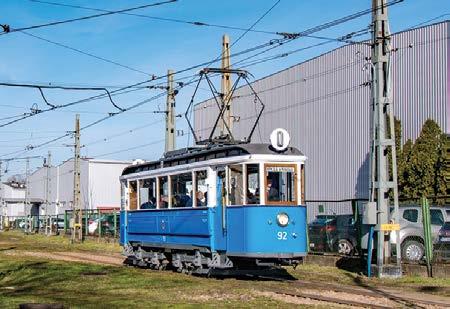
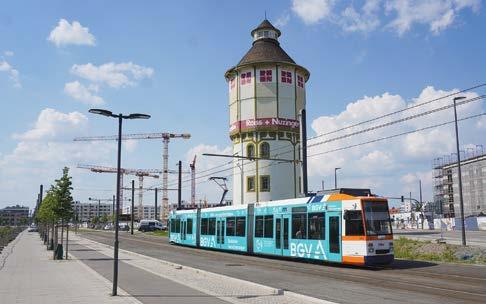
S pA i N i N SUMMARY 180
Spain just keeps on growing in terms of LRT; TAUT gives an overview of the country’s systems.
SYSt EMS fAC tfi LE : p LAUEN 185
Consistency is key in this German city: TAUT uncovers a network that has maintained a high-class service for over 130 years.
WORL d W id E REV i EW 191
Light rail studies underway in Curitiba; Tokyo announces new Waterfront subway.
MA i L b Ox 195
A mystery in Santa Teresa; Sheffield track; Comments on Mönchengladbach.
CLASS i C t RAMS: k RA kÓW 196
Mike Russell discovers the story of how Zeppelins forged a post-WW2 friendship.
A country that knows where it’s going – fast

Spain features strongly in this issue of TAUT, and for all the right reasons. It is a progressive European country that demonstrates all-round excellence in public transport, respectful for its role in creating cities that are really worth living in, and forever finding ways of overcoming a problem that befalls most of us – raising enough money to achieve all the objectives.
Delegates at the latest EU Light Rail Congress in Seville could not fail to be impressed with how far this Iberian nation has moved forward in just decades from a standing start, constructing a large number of tramways, and now extending and improving them to serve areas of fresh development where industry and housing are going up side by side. Motor cars are not automatically viewed as a public enemy, but as a mode of transport that is no longer essential for a substantial proportion of the population. People can hop on a tram, transfer to a faster high-capacity metro, and then easily extend their journey to a long-distance, high-speed railway.
Today, with so much core infrastructure now in place and bedded in, there is time to examine technological innovation that will improve the passenger experience, such as ‘tap and go’ ticketing, offering value to those choosing to travel outside peak times. Tramway operators reap the benefits of better planning, information, reliability, safety and security which they can in turn pass on to the appreciative customer.
Spain of course isn’t going it alone, and speakers at the Seville event were able to share the success stories from a host of other systems, not least neighbouring France, the UK, Canada, Dubai, and across Latin America.

WO r L dW id E C ONT ribu TO r S r ichard Foster, r ichard Felski, Andrew Grahl, Andrew Moglestue, Herbert Pence, Mike russell, Nikolai s emyonov, Alain s enut, Andrew t hompson, Witold urbanowicz, bill Vigrass, t homas Wagner, Philip Webb. Productio N – Lanna blyth
367610 geoff@mainspring.co.uk
Tramways & Urban Transit
13 o rton Enterprise centre, b akewell road, Peterborough PE2 6X u u K
Tramways & Urban Transit is published by Mainspring on behalf of the lrtA on the third Friday of each month preceding the cover date.
LRtA MEM b ERS hip (with tAUt subscription)
Tramways & Urban Transit is sent free to all paid-up members of the l ight r ail t ransit Association.
lrtA WE bsit E AN d di A rY t im kendell webmaster@lrta.org meetings@lrta.org
sU bsc RI p TIO ns, MEM b ER s HI p A n D b Ack I ss UE s lrtA Membership s ecretary ( d ept t06), 38 Wolseley road, s ale M33 7Au, u K. tel: +44 (0)117 951 7785 membership@lrta.org Website: www.lrta.org
f OR c OR p ORATE sU bsc RI p TIO ns v I s IT www.mainspring.co.uk
LRtA RE gi St ERE d OffiCE 13 o rton Enterprise centre, b akewell road, Peterborough PE2 6X u, u K Private company limited by guarantee, No. 5072319 in England and Wales.
lrtA cHA ir MAN – paul Rowen chair@lrta.org
© lrtA 2024
Articles are submitted on the understanding they may also be used on our websites or in other media. A contribution is accepted on the basis that its
Spain has become an enthusiastic participant in the annual Global Light Rail Awards (the next event is in London). It has a lot to shout about, so its entries are popular with the judges and audience alike. Success can be infectious.
Matt Johnston, EditorMilan funds expansion
The Italian government has awarded the city of Milano (Milan) more than EUR200m worth of grants so that it can expand its rail-based public transport system. EUR145m will be used to help fund the proposed 3.3km (two-mile) extension to metro Line M1. This will connect the district of Baggio to M1’s current terminus at Bisceglie.
A further EUR88m will go towards the EUR127.9m needed to refurbish the interurban tramway that links Milano to Limbiate, some 15km (nine miles) north. The line closed in 2022 but restoration work could start in 2025 with a view to services re-starting in 2028.
The first phase of the TriMet ‘A Better Red’ project in the Oregon city of Portland (US) opened on 4 March. Originally called ‘MAX Red Line Improvement Project’, this has involved doubling the single line section between the Gateway Transit Center and the city’s airport. Two bridges and a new platform, Gateway North, just to the north of the existing one, and 1km (0.6 miles) of new line at a different grade have been built. ‘A Better Red’ works continue at the opposite end of the line. The extension of Red Line services along Blue Line tracks, from Beaverton TC to Hillsboro Airport, is scheduled to open on 25 August. Siemens had delivered 18 of 30 new Type 6 LRVs by mid-March, but they were yet to enter service.
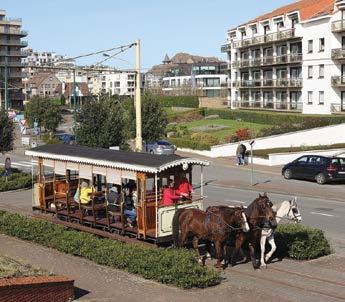
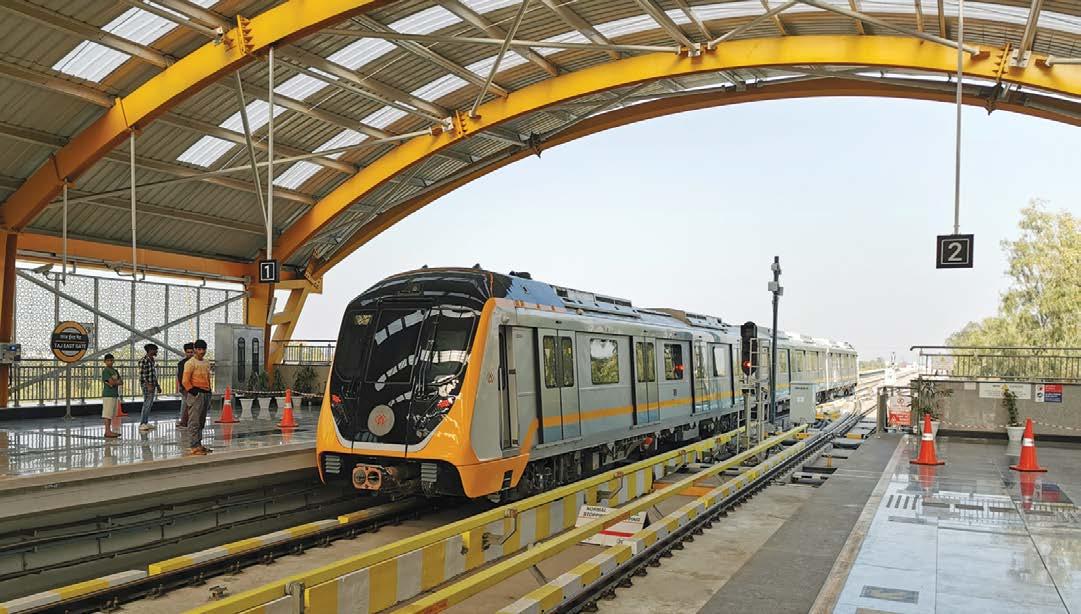
Indian Prime Minister Shri
Narendra Modi had a busy day on 6 March when he launched services on new metro lines in four different cities. However, only one was an ‘in person’ event; he opened the remainder by video link.
Prime Minister Modi was in Kolkata (Calcutta) to wave off the first metro trains on Line 2’s new 4.8km (three-mile) section from Esplanade to Howrah Maidan. He also rode on what has been billed as India’s ‘first underwater metro’ because it tunnels under the Hooghly river. Only the Esplanade – Sealdah station
The Belgian city of Gent (Ghent) is to celebrate the 150th anniversary of its tram system on 18-19 May. On the Saturday, historic trams will operate special evening services from St Pieters station while, on the Sunday, there will be a morning parade of 16 historic tramcars through the medieval city centre. These will show the evolution of the system, with horse-drawn, steam-, electricand diesel-powered trams in action.
Meanwhile, an exhibition dedicated to the history of the city’s tramway will run from 15 May until 1 September. Further details can be found at http://www.150jaartram.be/gent
section of Line 2 is still to be completed.
Kolkata’s north-south Line 3 was extended by 1.15km (0.7 miles) from Taratyala to Majerhat, while services also started on Line 6 in the city’s eastern suburbs. This 5.4km (3.4-mile) line links Kavi Subhash (New Garia) to Hermanta Mukhopadhay (Ruby). There’s an interchange with Line 2 at New Garia. Eventually, the line will reach Kolkata International Airport. Services on the first 5.3km (3.3 miles) of Agra’s standard gauge Yellow Line also started
on 6 March. Alstom’s Indian factory supplied the 28 stainless steel three-car Movia trains that now run on the third-rail line between Mankameshwar Mandir and Taj East Gate. When complete, the Yellow Line will run for 14.2km (8.8 miles) linking the city to Sikandara. A proposed Blue Line will extend the system to 29.4km (18 miles). Also on 6 March, the city of Kochi’s metro was extended by 1km (0.6 miles) from SN Junction to Thripunithura while Pune’s metro grew by 5.5km (3.4 miles) when the Ruby Hall Clinic –Ramwadi extension opened.
The Mongolian capital Ulaanbaatar is to get its first metro system, more than ten years since the scheme was first proposed. The 17.7km (11-mile) metro will run east to west from Amgalen Market to Sonsgolon. The speed is to be 39km/h (25mph) and there are to be 14 stations. At least 6.6km (4.1 miles) of the line will be underground. It is expected to handle 17 000 passengers/hour, with a projected project cost of EUR1.2bn. The line could open in 2030. Ulaanbaatar is home to half of Mongolia’s 3.5m inhabitants.
Planning for a metro started in 2012 but it was put on hold in 2015. It has been on and off since, but on 29 February a tender for consulting services was issued. All applications should have been submitted by the time this issue closed for press.
The city’s mayor, Khishgeegiin Nyambaatar, said: “The construction of Ulaanbaatar’s subway system will deliver significant benefits for local citizens and support the long-term, sustainable growth of our city, creating more opportunities for those living and working here.”
Turkish President Recep Tayyip Erdogan has overseen a series of metro openings in Istanbul.
President Erdogan re-opened 8.3km (five miles) of the former Kazliçesme – Yenikapi – Sirkeci railway on 28 February. This closed in 2013 but has been incorporated into the Marmaray metro network. Although operated by Marmaray’s HyundaiRotem EMUs, the new line is numbered U3 to indicate that it is a project of the national Ministry of Transport rather than the municipality.
Metro Line M3 was extended by 8.4km (five miles) from Kirazil to Bakirköy Sahil on 10 March;
Sheffield’s Supertram network (UK) is back under public control for the first time since 1997. South Yorkshire Mayoral Combined Authority took over the Supertram network from Stagecoach on 22 March.
It’s not expected that the travelling public will notice much difference initially. South Yorkshire Future Trams Limited has introduced a new ticketing app and website, while the park-and-ride facilities at Rotherham Parkgate are to be expanded.
SYMCA has big plans for Supertram. It has said that it will “refurbish all of the trams” by 2027 and will have a “whole new fleet rolled out by 2032”.
A new stop will open at Magna, in Rotherham, later this year to serve communities between Sheffield and Rotherham. However, studies are being carried out into how the system might be extended. These include heading north-west to Stocksbridge and south to Barrow Hill and Chesterfield.
SYMCA sees the takeover of Supertram as the first step towards creating an integrated “London-style public transport system”. Work has already started to change the bus franchising system; SYMCA envisages a system under which it owns the depots and fleets, and has control over the routes, fares and standards.
Line M5 was extended by 6.5km (four miles) from Çekmeköy to Samandira Merkez on 16 March; Line M9 was extended by 12km (7.5 miles) from Bahariye to Ataköy on 18 March and, on 19 March, Line M11’s 8.5km (5.3-mile)
Kargo Terminali – Arnavutköy extension was opened.
The city’s rail-based public transport network has now reached 362km (225 miles), with more to come as the airport line M11 is being extended to become a 69km (43-mile) circle. The new airport, which opened in 2019,
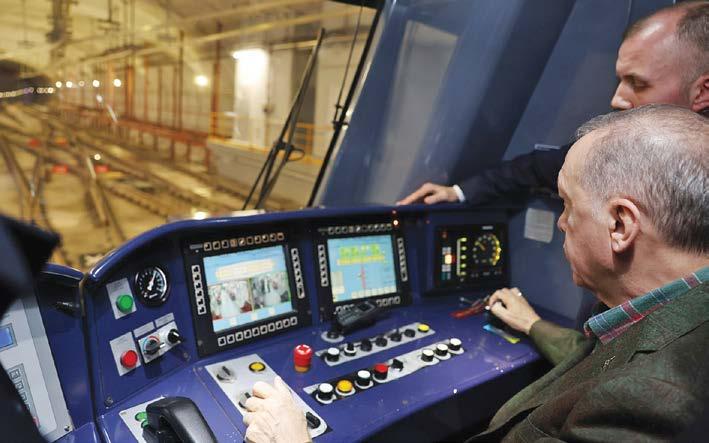
has become one of the busiest in Europe and is one of the driving forces behind the 162km (101 miles) of new metro that opened
Škoda’s factory in the Czech city of Plze ň is building 39 46T ForCity Plus trams for three German metre-gauge systems: 13 for Frankfurt (Oder), four (with an option for eight) for Brandenburg and 22 for Cottbus.
The order was placed in 2021. Frankfurt (Oder) and Brandenburg should receive their first trams in April; the first for Cottbus should arrive in May.
The 30.8m long, 70% lowfloor trams have three sections and are single-ended. They have swivelling end bogies. Passengers will benefit from air-conditioning, multi-function
spaces for wheelchairs, prams or bicycles, and information screens. External cameras will be used to provide driver assistance. The biggest difference between the three is that the Cottbus trams are 2.4m wide, while the others are 2.3m.
Jan Hard, Škoda Group’s President West and North, said: “These vehicles are tailor-made for three German cities with different needs and environments. We are creating more than just trams; we are creating a comfortable, modern and environmentally-friendly way to travel around Frankfurt, Brandenburg and Cottbus.”
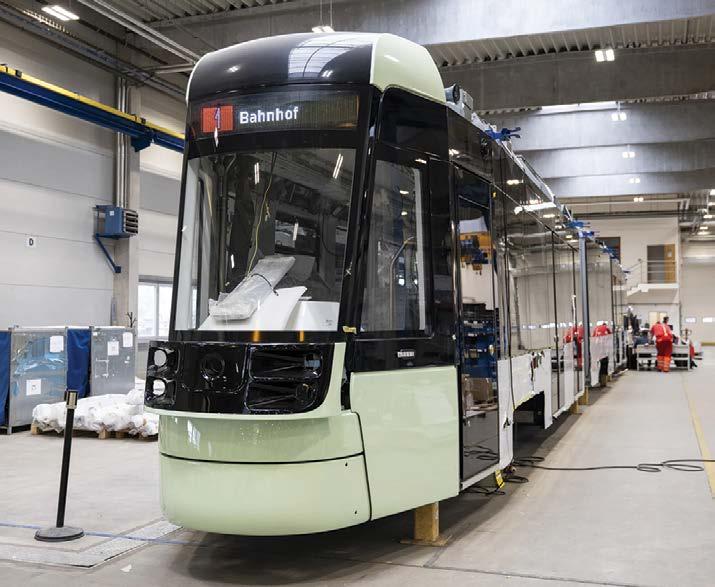
in the last five years. President Erdogan claimed just 8km (4.9 miles) of this could be credited to the municipality.
Chicago’s commuter rail operator Metra has placed a USD154m order with Stadler for eight batteryelectric FLIRT trains for delivery in 2027-28. There is an option for eight more plus, potentially, 32 intermediate trailers. Able to run for up to 100km (62 miles) between charges, they will be used on the 26km (16.1-mile) Beverly branch of the former Rock Island Line. The 112-seat cars will be built at Stadler’s Salt Lake City factory. Trams to return to Jaen? Trams could finally start running on the Spanish city of Jaen’s mothballed line. A trial run has taken place – the first time a tram has used the line for over 11 years.
Work on the 4.7km (2.9-mile) line started in 2009 and it opened on 2 May 2011, but the service only ran for a few weeks due to what have been described as ‘political disputes’. The five Alstom Citadis trams have been stored in their depot ever since, aside from occasional trial runs.
A EUR4.3m tender was issued in early 2023 to restore the tramway. Services could start later this year.
Regionaletangente
West tender issued
Tenders have been issued for new tram-trains for Frankfurt am Main’s 52km (32-mile) orbital light rail line. The Regionaltangente West in the German financial capital is under construction and is due to open in December 2028.
The tender is for up to 25 double-ended dual-voltage (750V dc and 15kV ac) tram-trains with a maximum length of 50m and a width of 2.65m. Total capacity of each car is 360 passengers. The successful bidder is expected to be announced towards the end of 2024 with delivery due in 2027-28.
Ostrava cancels order
Ostrava’s long-running tendering process for 25 new trams for the Czech city was cancelled in February. The planned contract included maintenance, but since operator DPO sold its workshops to Škoda subsidiary Ekova Electric, this put bidders at a disadvantage because of the additional costs of moving cars greater distances to workshops for maintenance.
Leamside gets a boost
Transport North East has received a GBP350 000 (EUR409 000) boost from the UK government to its plans to re-open the ‘Leamside Line’. This railway originally formed part of the East Coast Main Line (ECML) but was mothballed in the 1990s. The grant will help develop a business case for the ‘Leamside South’ – a re-opening of the line south from Washington via Durham to a junction with the ECML near the town of Ferryhill.
A business case is already being prepared to re-open a stretch of the Leamside Line that would form part of the Tyne & Wear Metro’s ‘Washington Loop’ that would connect the current terminus at South Hylton with Pelaw via Washington.
Rio interchange opens
Brazilian President Luiz Inácio Lula da Silva attended the opening of Rio de Janeiro’s Terminal Intermodal Gentileza (TIG) interchange on 23 February. The terminal has been connected to the VLT Carioca light rail system by a 400m extension.
The terminal provides an interchange between VLT Lines 1 and 4 and bus route 14. Services started on 26 February. The project cost BRL300m (EUR55.6m) under a PPP contract with the Banco do Brasil.
Work to re-activate the Carioca tramway’s Silvestre and Paula Matos branches should start this year. They are due to open in 2025.
Valencia’s new lines
Valencia’s troubled Line 10 is to be extended. Construction of the Spanish tramline started in 2007 but work had to be abandoned in 2011 due to a lack of funds. It finally opened on 17 May 2022.
However, plans were announced in February to extend it north from Natzaret to the coast and an interchange with Lines 6 and 8 at Grau-La Marina.
The project is set to cost EUR22m.
The city will also gain two new tram lines. Line 11 will start from an interchange with Line 10 at Ciutat Arts i Ciencies-Justicia and run along Avenida del Puerta to Grau-La Marina; Line 12 will follow a southern orbital route from a point on Line 10 between Amado Granell Montolivet and Ciutat Arts to Safrana (and an interchange with Lines 1, 2 and 7) and Nou d’Octubre (interchange with Lines 3, 5 and 9). It is hoped to complete all of these new lines by 2030.
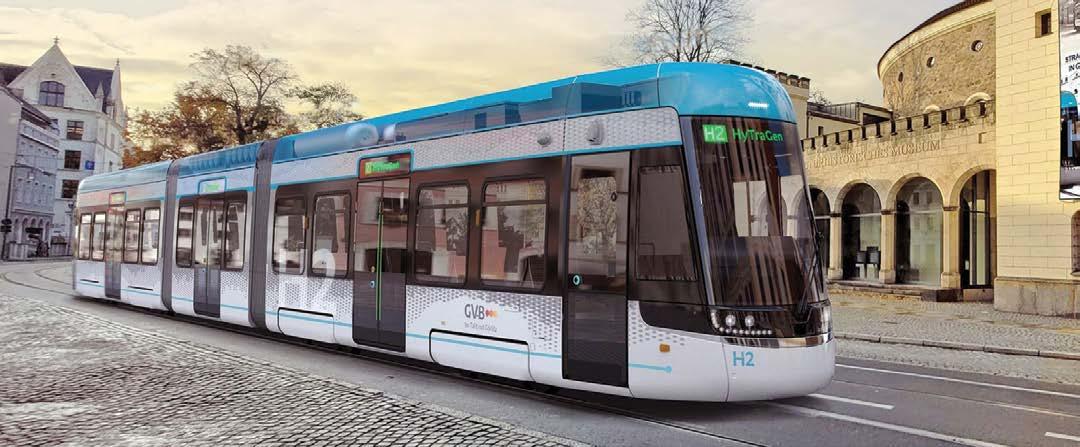
Germany’s Görlitzer Verkehrsbetriebe GmbH has eight HeiterBlick NGT6 trams on order – but has now ordered a ninth, which will be powered by hydrogen.
Görlitz joined forces with fellow Saxon cities Leipzig and Chemnitz to create the Sächsische Tram project and it is one of these trams that will become the first practical hydrogen-powered tram on a European street tramway. It is being part funded by a grant from Germany’s ‘Coal Replacement Fund’; Saxony has both been reliant on coal-fired power stations and had extensive lignite quarrying operations. This tram is being developed in association with Fa. Hörmann Vehicle Engineering (HVE) in Chemnitz. Other partners are Fa.
Flexiva Automation & Robotik and the Technical University in Chemnitz.
There are key problems that will require solving. These include how the tram will be re-fuelled and how the weight of the roof-mounted tank will be accommodated. Delivery is expected at the end of 2026.
Dr Volkmar Vogel, HVE’s Senior Vice-President, said: “The advantage of a hydrogenpowered tram is that no overhead lines are required. It is therefore not to replace existing tramways, but rather be an alternative for new routes.”
There are already 27 hydrogenpowered trains operating in Germany and Görlitz has already tested a hydrogen-powered bus. If successful, hydrogen power could be considered for new tram projects around the city,
including one across a new Oder bridge to Zgorzelec in Poland.
The world’s first hydrogenpowered light rail line looks set to be built in the South Korean city of Ulsan after it signed a ‘memorandum of understanding’ with the Korea Railroad Research Institute. The plan is to build an 11km (6.8-mile) route between Taehwagang station and Sinbok junction that will be operated by hydrogen-powered LRVs
The South Korean government has covered 60% of the expected KRW328bn (EUR225m) cost with a grant. Construction could start in 2026 and is likely to take three years.
Construction work has started on Essen’s new 5.5km (3.4-mile) tram line, dubbed Citybahn The new German line will bring a surface tramway back to the city centre; trams were moved underground in the 1970s but the current two-minute headway through the tunnels cannot be improved upon.
Citybahn is to run from the Ruhrbahn depot via Hollestrasse and Hachestrasse to Frohnhauser Strasse/Bertholds-BeitzBoulevard and Bergmühle, serving the new ESSEN 51 district. It also passes the main railway station. There will be ten new stops. The project is set to cost EUR180m and it should open in 2026.
City Mayor, Thomas Kufen, said: “We want to constantly expand and improve our public transport offer. In this way, we are creating a real alternative
to get seamlessly from A to B. Citybahn is an important component of a good mobility offer and thus supports the mobility transition.”
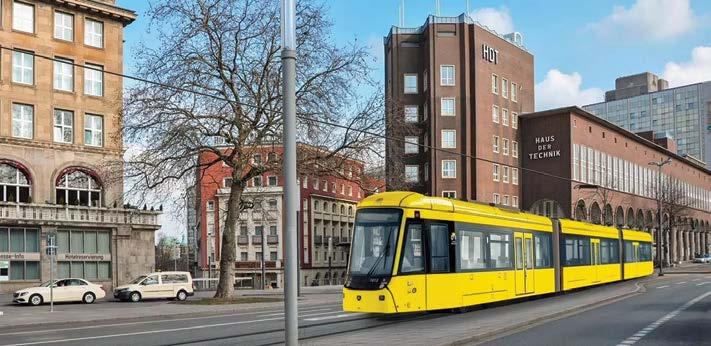
GBP6.1bn to regenerate UK region
Transport for West Midlands (UK) is to invest GBP6.1bn (EUR7.1bn) in what it calls “a green transport revolution” that aims to regenerate the West Midlands over the next 15 years. The money will be invested in expanding Metro, bus, rail, cycling and walking networks.
Detailed business cases are being prepared that could lead to the Metro system being extended to Dudley via Sandwell, and from Digbeth to North Solihull via East Birmingham. Work could start on these projects in 2028.
Longer term routes have also been identified, including extending the Wednesbury –
Brierley Hill metro at both ends to connect Stourbridge with Walsall. Longbridge could be linked to central Birmingham, while central Wolverhampton could be given a connection to New Cross Hospital, to the north-east of the city. Other plans include building three new railway stations and investing in VLR, as well as developing new bus and active travel routes.
West Midlands Mayor Andy Street said: “It’s no secret that our transport infrastructure was woefully underfunded for decades. By building a ‘turn up and go’ network we can make the most impact in persuading people to leave their cars at home and avoid busy, congested roads.”
PESA Twist 3401 was unveiled to the people of Wrocław (Poland) on 3 March. It is the first of 40 new trams that the manufacturer is building for the city’s public transport operator MPK.
For Poznan, PESA has extended the low-floor area over the rotating end bogies. Each three-section 27m tram can accommodate 200 passengers
(40 seated). It has been designated 146N
The PLN337.5m (EUR78m) contract was placed in 2021. The first 23 vehicles, including 3401, should be delivered in 2024. There is an option for 16 more.
Apart from 31 Skoda 19Ts, all of Wrocław’s 269 trams are built in Poland (by PESA, Modertrans and Protram).
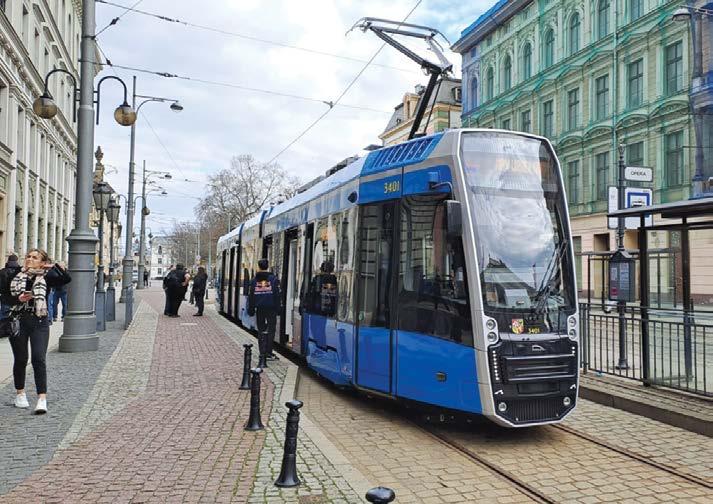

Agility Mobile drives efficiencies and streamlines processes through:
• Optimised asset availability
• Achieving key SLAs
• Improved work completion times
• Reduced admin time
• Accessing job details & documents
• Full audit trails & compliance
• Track operational events in a central control room log

products and innovations.
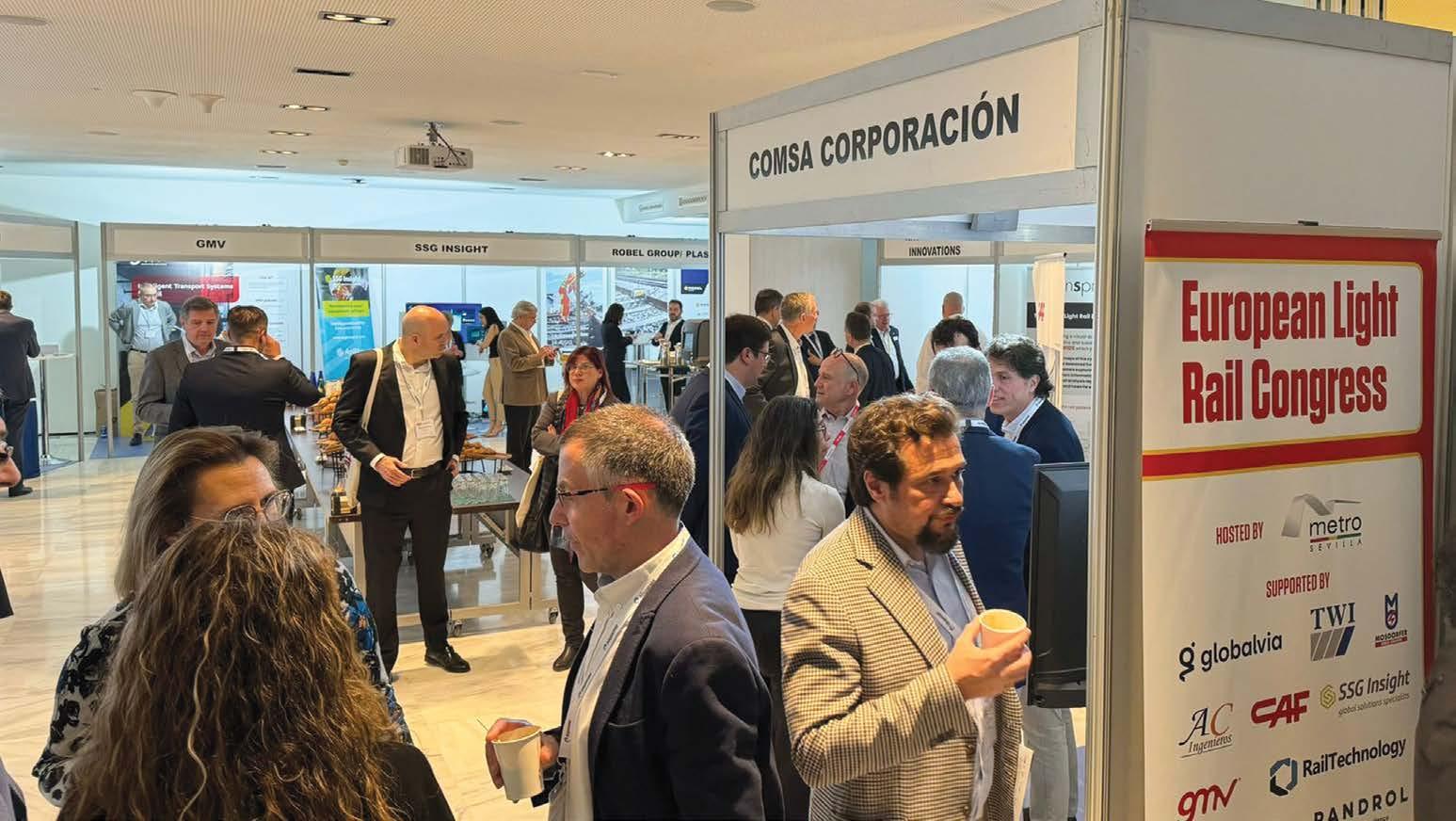
two busy days in seville offered a variety of fascinating case studies covering the very latest in urban transport technology. geoff Butler rounds up the highlights of this year’s successful event.
The beautiful Andalucian capital of Seville was the host for the 2024 European Light Rail Congress. Nearly 200 senior and key professionals from ten European countries attended this year’s event.
Hosted by Metro de Sevilla, parent company Globalvia and the regional government, Junta da Andalucia, the event’s majestic venue was the Hotel Melia Lebreros, offering superb modern facilities as well as proximity to the metro. In addition, a new tram extension is being built right outside the hotel.
The event ran over two days with presentations and panel debates as well as an exhibition; delegates also had the chance to visit the Metro de Sevilla depot.
An address from Jose Maria Rivera, Managing Director of the Agencia de Obra Publica de la Junta de Andalucia, officially opened the event. He spoke about the importance of light rail systems for sustainability and the passenger experience. Daniel Quintero, Globalvia’s Director of Railways, also emphasised the importance of collaboration between systems to make public transport the best travel option.
Clara Lozano and Gerado Murillo kicked off with a session covering the digital transformation of the employee and
customer experience at Metro de Sevilla. Having identified certain ‘pain points’, they have looked at ways to assist with the implementation of a new ‘tap and go’ payment system to speed up the process of moving around the city. Numbers of individual tickets for trips decrease, saving operational costs, additional ticket machines and the like. In fact, Metro de Sevilla is the first subway to implement EMV validation (travel without buying a ticket from a vending machine). Customers are charged monthly at the best rates based on usage, with their travel history available via the app and website.
Antonio Macia from CAF followed, explaining the company’s transport solutions provided in the region. CAF has been present in Andalucia since 2005, supplying both metro and tram vehicles in Seville, along with Cadiz, Granada, Malaga and VelezMalaga. The region currently represents CAF’s third comprehensive engineering centre, with more than 200 engineers distributed between Linares, Jaén and Granada; 300 staff are based in Andalucia for warranty and maintenance services, and there are 249 employees in its digital and design solutions service.
Amber Hart, SSG Insight, highlighted how networks can achieve sustainability
goals using the company’s Agility asset management system, which not only offers asset management but also predictive maintenance practices, energy management and software tools for scheduling and planning. SSG products have been installed in UK light rail systems including Manchester’s Metrolink and Edinburgh Trams as well as the Rideau Transit Maintenance systems in Canada.
Isidro Prieto from Spanish multi-national GMV talked about its on-board intelligent transport systems for rail. Present in 12 countries with 3000 employees, GMV offers advanced fleet management systems (AVLS) ticketing solutions, and planning and scheduling tools. There are three blocks of AVLS systems including onboard equipment, communication systems and back-office tools.
GMV has renewed the CCTV system across Seville’s entire fleet of 21 vehicles; the previous system was analogue and affected by obsolescence. Now, there is a new digital system with advanced functionalities. The CCTV system was also renewed across the fleet.
Passenger and video information formed part of the presentation. The heart of the system is the PIS control unit, responsible for generating the contents and triggering
The future of self-driving trams was considered by Ana Moreno, General Manager of Los Tranvias de Zaragoza, who looked at how AI will help develop these vehicles. Tramways will in future include public-private partnerships, green spaces, pedestrian areas, environmental considerations, electrification and sustainable solutions, inclusive design and accessibility, smart technology, multi-modal transportation networks, data-driven decision making and autonomous vehicles.
Zaragoza also has a fully digital depot with antennae taking information from the trams, linked via the cloud to the LeadMind tool where data is processed. The TAURO project is aimed at full autonomy using Wi-Fi connectivity, safe positioning, sensoric validation, automated function remote driving and command. Three radars in each cab, solid state lidar and two cameras help with perception issues. ADAS (Obstacle detection system) is set-up to detect objects that could potentially collide with the vehicle and ascertain risk levels, enhancing the driver’s perception and passenger safety.
Tobias Koch of Siemens Mobility also spoke on the theme of autonomy. Driverless vehicles have been in use at airports for some time, but these operate in closed environments. Trains and trams in urban environments must master complex traffic situations autonomously, without centralised external control. The main tasks are for permanent surveillance of the environment and forward-looking driving to prevent collisions. Siemens is planning for its automated depot to be in operation by 2026, but still needs to approve the technology and implement the legal framework to define the safety level required.
them according to the scheduling of different events, such as arrival at a stop. Different types of devices such as LED signs or multimedia screens are connected to this equipment, which can offer travel or service information, sometimes interlaced with adverts.
Gerard Clariana of Kruch Railway Innovations discussed how Energy Flow Simulation (EFS) is used on systems. Together with Spanish engineers at KRUCH SIDOS, the EFS system software simulates the energy flow for different scenarios. This analyses the returns of investments, solves problems, increases power supply reliability, and supports systems in meeting new requirements for CO 2 reduction. With the help of EFS, customers can easily simulate their energy balance in their networks, with critical points in the electrical network highlighted. The software analyses substations and energy consumption of the vehicles in detail.
The topic of fully integrated track resilient solutions was presented by Pandrol. Ernesto San Vicente looked at the expectations of a modern track system from a stakeholders’ perspective. As a specialist in anti-vibration products, the general thinking that resilient track may generally create higher noise levels (because of lower frequencies and/or larger amplitude oscillations) was highlighted, but it was argued that good track design can not only compensate but improve the radiated
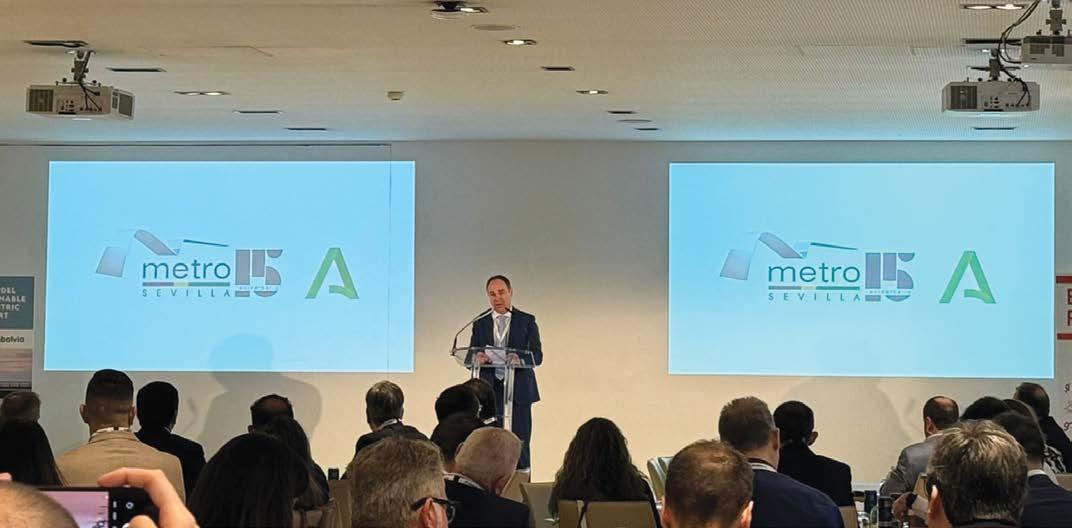
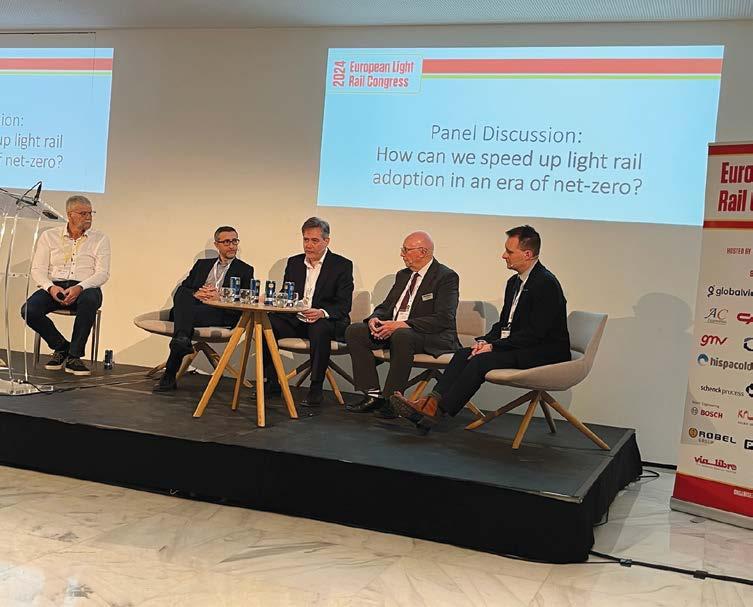
airborne noise. There is a link between direct track degradation and rolling noise. Loading distribution can be modified into a longer length of track, decreasing local forces and stresses, and consequently reducing track degradation.
In the same manner, rail corrugation leads to vibration but also to a characteristic noise (directly linked to the short/long wavelength of the corrugation). Implementation of resilient elements can reduce the corrugation significantly, said Ernesto.
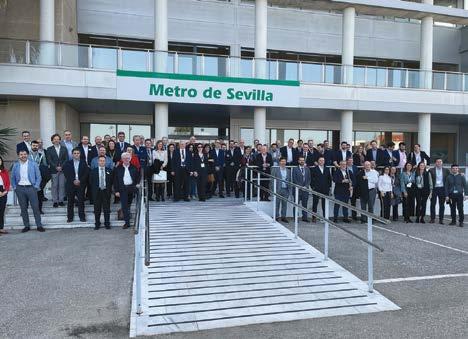
Track resilience plays a key role in the vibration mitigation and longevity of railway infrastructure, resulting in reduced maintenance costs.
Recycling-based resilient systems can help urban transit authorities meet C0 2 targets while ensuring optimal performance, while recycled rubber materials are used to meet environmental targets.
Manfred Rudholzer from Robel Group & Plasser & Theurer Iberica highlighted various products, tools and machines suitable for LRT applications. Battery-driven tools were on display at Robel’s stand, which demonstrated a drilling machine. Many benefits were cited and included track gauge modification for different countries, low personnel costs (with only one operator with remote control needed instead of eight operators), and automated and fast tightening.
Lola Bravo from the Latin American organisation ALAMYS highlighted its global work. ALAMYS started in Caracas (Venezuela) in 1986, with the main objective being to share experience, and learn and acquire best practice standards. The main public transport operators in Spain and Portugal joined along with other operators from Latin America. Later, some of the best-known suppliers of the railway sector in Europe and America joined too. ALAMYS aims to be a reference
point in public transportation among all relevant stakeholders, highlighting the move towards Integrated Transportation Systems and sharing knowledge with its partners through technical committees and KPI benchmarking.
Chris Wiseman from TWI presented on technology for lightweight materials. TWI is non-profit and membership-driven, with 600-plus industrial members, 600-plus staff globally, 2000-plus professional members, four main UK research and development centres and 18 international offices. The organisation aims to provide members with authoritative and impartial expert advice, know-how and safety assurance. Examples of lightweight materials and new procedures include laser welding, friction
The first panel debate of the congress covered innovation in rolling stock, which was discussed by representatives from CAF, Siemens, and Bosch Engineering. They covered how they saw the visionary vehicles of the future. The second panel debate covered the
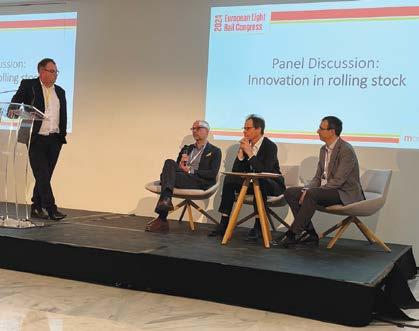

who together explained Globalvia’s approach to asset management in terms of transport infrastructure concessions and mobility solutions. Linear railway asset management was also covered through digitalisation, and asset georeferencing in linear infrastructures with long tunnel sections.
Train digitalisation to deal with fleet obsolescence and improvements in reliability and availability of rolling stock was also discussed.
From Sevilla we moved to Barcelona, where Eduard Cabrera gave a presentation on connecting the Catalan capital’s tram networks, Trambaix and Trambesos. The system uses catenary-free sections, with energy supplied continuously by a third rail – a proven solution in many cities around the world, but used for the first time in Spain. The existing fleet requires retrofitting to adapt it to APS.
and forge processing, electrical resistance welding and electron beam welding.
Rob Nield from Sella Controls talked about the importance of overspeed protection systems and spoke of the events at Sandilands (Croydon, UK) when a tram turned over in 2016, which overspeeding detection could have prevented. Sella Controls’ Tracklink III system is linked to the vehicle communication system, offering safetycritical control for automation selective door opening, correct side door enabling, automatic power changeover, radio changeover and regenerative braking control. Placing beacons at specified distances on the approach to these zones allows intervention in cases of overspeed.
Day two began with Metro de Sevilla’s Jose Angel Santos and Miguel Angel Mengual,
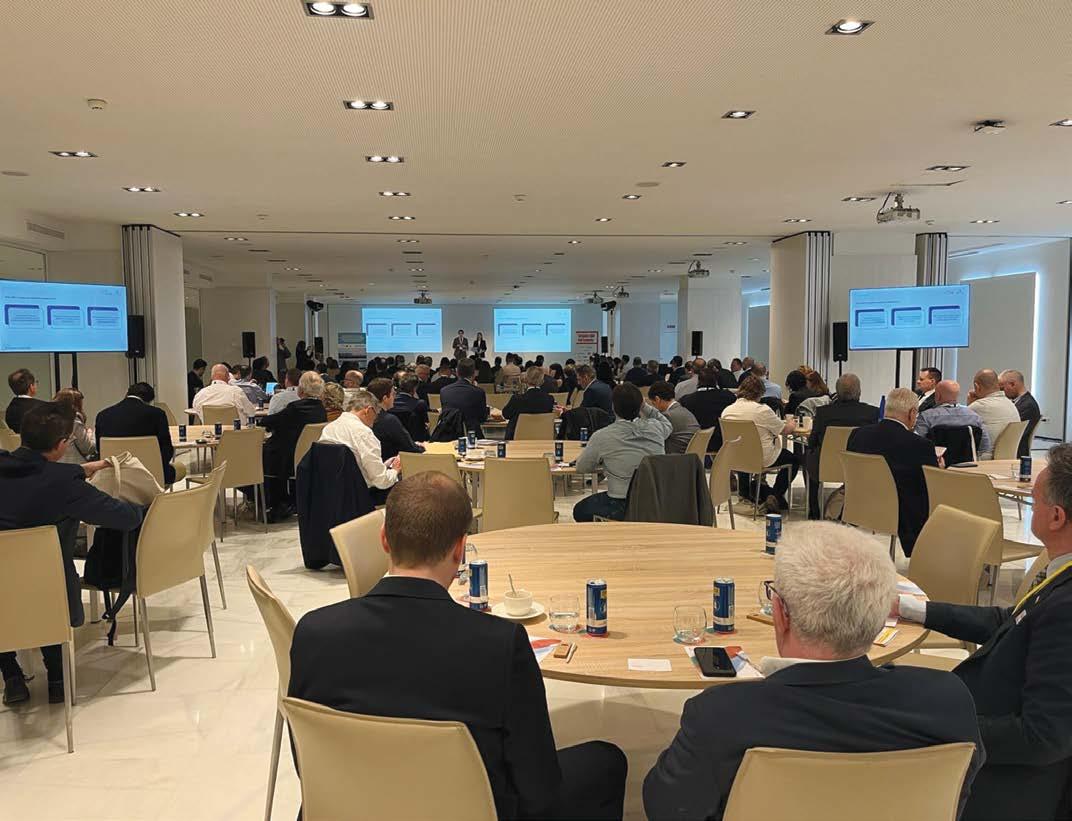
Barcelona will offer a unified tram network with new interchanges, connections between nine municipalities, and urban transformation. The city’s current public transport offering includes no more than medium- to high-capacity options, bus congestion and slow speeds. The tram routes offer seamless connectivity between BCN and eight other municipalities.
Ian Bruce talked about how SYSTRA is delivering social, economic, and environmental value through station ‘placemaking’ – the built environment that connects stations to local communities. By 2030 Bologna is looking to reduce car journeys in and out of the city by 37%, with an increase of cycling trips by 62%, walking trips by 3%, and public transport travel up by 35%.
SYSTRA’s task was to understand the city’s ‘urban fabric’ – being separate from road traffic and reducing car access, offering inter-modality of transport with new park-and-ride areas created.
SYSTRA’s placemaking has previously benefited the UK’s Nottingham (NET) and Tyne & Wear systems, helping to improve the cities’ health and wellbeing ratings, increasing a sense of community and pride, and reducing social isolation and crime. It has led to local economic growth and increased rail demand, increased local biodiversity and a reduction in local pollution.
Moving back to Andalucia, Fernando Lozano explained how Metro Malaga is connecting communities through line expansion. The extensions of lines 1 and 2 looked to double their ridership figures with 2km (1.2 miles) of additional track and two new stations.
The operator is utilising the sun’s rays to generate electricity, with 8% of the total used being delivered by the photovoltaic power plants in phase 1, a further 6% in phase 2 and 12% in phase 3. The CAF Urbos 3 vehicles have new accessibility features, with renovated stock rising to the challenge of integration with the signalling system. Metro Malaga also has a driver simulator, a first for the Spanish systems.
A new extension is currently under construction with the line running from the city centre to the Civil Hospital.
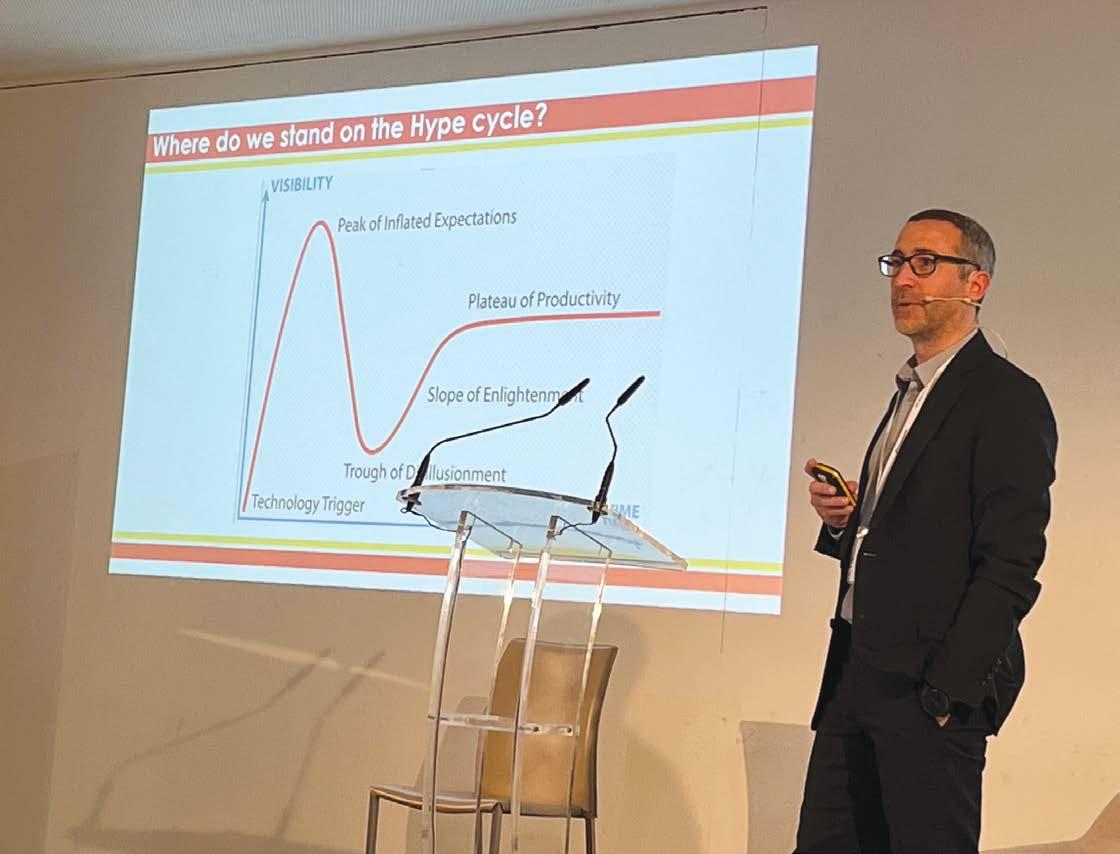
digitalisation.

The vibrational impact of urban rail infrastructures using resilient stone wool mats was discussed by Caterina Lobefalo of Rock Delta, who covered the impact of vibrations within light rail. Stone wool mats both for ballasted and ballast-free tracks can help reduce this noise and vibration. Added to this, they are robust, fire resistant, have thermal properties, are resistant to water, are easy to install and store, and are produced via natural products.
France’s Brest tramway – a 14.3km (8.9-mile) line with 28 stops that opened in 2012 – was highlighted as an example of this noise and vibration reduction.
Santiago Bobo completed the second day’s morning sessions with an update from Cadiz and its tram-train system. There are 15 tram stops, six stations, and seven tram-train vehicles.
Trambahía is made up of 11km (6.8 miles) of existing Iberian-gauge double-ballasted tracks, part of the RFIG, and 13km (eight miles) of new tram tracks, making 24km (15 miles) in total. Embedded rail with corkelast from Edilon-Sedra was used.
Trambahía opened in October 2023 and passenger numbers have remained high. Over 2.7m people ride the system each year, with customer satisfaction averaging over 8.5/10.
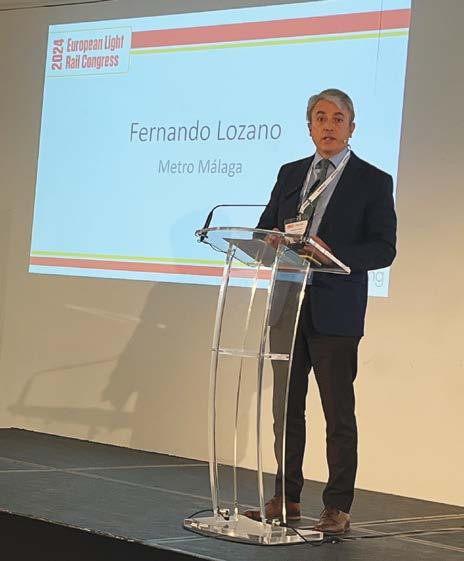
Christophe Sanguina from Keolis spoke about delivering tangible value to passengers following years of digitalisation. Finances are more important than ever with up to 30% of a city’s budget dedicated to public transport.
In collaboration with Dubai’s RTA, Keolis has developed an innovation framework based on a strategic approach and robust governance to assess existing challenges, explore opportunities, and develop ideas. The PSD remote condition monitoring system (POC) allows data to be collected and analysed for optimisation, to refine thresholds based on observations and data, reducing failures by switching from planned to predictive maintenance. Train remote condition monitoring was also installed and tested in July-December 2023, with the automated rail and infrastructure inspection system installed in December, and implemented in January. The train examination system is being implemented by July 2024.
Avansim MD Ian Rowe talked about driver simulation training, explaining how better training via simulators has helped reduce incidents. Simulators used to be large, heavy,
and expensive, designed for one-to-one training. They were not designed for line-of-sight training, not geo-specific and have no interaction with other traffic or pedestrians. However, PCs have improved, while the overall costs of equipment are reducing.
Rowe highlighted a real case study from Edinburgh Trams that recorded training and performance data prior to installing a simulation system. This was installed in March 2021 with full training given. Post-simulator statistics showed a reduction in direct costs by replacing psychometric testing with simulator exercises, training times reduced from 13 to eight weeks and the cost of incidents (including investigation manpower, loss of driving resource and the repair of vehicle infrastructure) down as well. Simulation for light rail is now financially affordable, and can be tailored for each client.
Jose Diaz from Schenck Process took to the stage to discuss multi-rail wayside train monitoring – described as an innovative modular diagnostic system for rail vehicles. The diagnostic system safely identifies vehicles that have the potential to damage track through dynamic forces or overload.
Teresa Benet from Metrotenerife talked about light rail overspeed prevention, with the SIMOVE product being installed in Tenerife on all vehicles. SIMOVE monitors a vehicle’s real-time positioning and speed, stores data and offers a back office. It has been fully deployed in Tenerife since 2016 on 26 vehicles (Alstom Citadis 302) running on 28.6km (17.8 miles) of track on two lines.
Since 2019 SIMOVE has been fully installed on the Metro Ligero Oeste with 27 Alstom Citadis 302 vehicles covering 48.8km (30.3 miles) of track across two lines. SIMOVE was also successfully trialled on the UK’s Metrolink system in Manchester. Currently SIMOVE is being installed on Sheffield Supertram vehicles (UK): 25 Siemens trams and seven Stadler tram-trains.
Alberto Sanchez from Metro Granada talked about the metro being for the present and future. Like many cities, Granada suffers from crowded streets, with increasing numbers of people moving about. The city is investing in a tramway, and CAF Urbos III trams run over 13km (eight miles) of track. Trams run every eight minutes at peak times, while three underground stops promote exchange with other transport modes, and there are park-and-ride options.
With 133.5m inhabitants, over 14m trips were made, and patronage is expected to break the 19m mark over the next ten years.
James Hammett, MD of UKTram, talked about how the trade body is driving innovation in the UK. UKTram promotes light rail’s adoption and looks to reduce the time and costs involved in developing new tramways and extending existing networks. Safety standards are looked after under the remit of its subsidiary company, the Light Rail Safety and Standards Board, which drives innovation in the UK by promoting driver assistance systems, fatigue/health monitoring, hazard perception, track safety and authority to work permits. It is also promoting its track awareness safety tool, developed by Avansim.
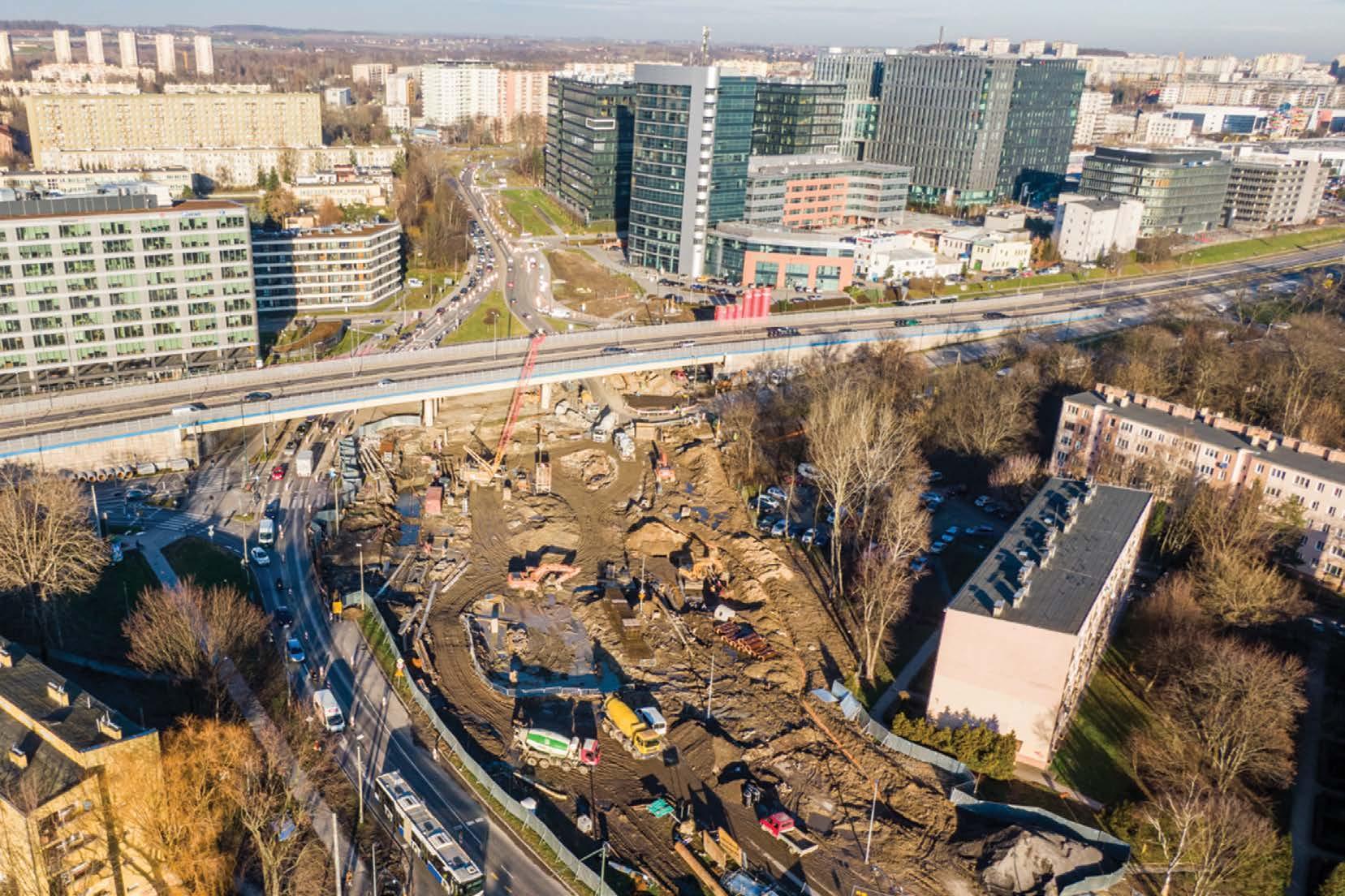
witold urbanowicz summarises the options for an underground route in one of Poland’s largest cities, which will require a new strategy for funding.
Discussions about building a metro in Kraków, southern Poland (population 800 000), have been ongoing for several decades. A city referendum in 2014 saw over half of the voters support of the investment. The Kraków authorities interpreted this broadly: according to a feasibility study presented a few years ago, the underground connection will take the form of a pre-metro, i.e. a fast tram, integrated with the existing tram network.
Construction of the first stage has already started, carried out as a public-private partnership – an innovative approach when it comes to a transport project in Poland.
However, it is possible that the pre-metro will soon transform into a metro again, if a new Mayor is appointed in April’s local government elections.
The idea of building a metro in Kraków has a long history, with the first proposals for a pre-metro network in the 1960s. In the 1970s there were plans to build a metro line from Nowa Huta – a large neighbourhood by the steelworks – into the centre. At that time, work began on the reconstruction of the Kraków railway junction that included a metro tunnel under Kraków Główny station.
According to the plan, it was supposed to lead from Rondo Mogilskie to Karmelicka. The north-south Karmelicka – Dietla tunnel was also added to the plans.
A 180m section of the tunnel under Kraków Główny station was constructed between 1974-90, and a further section towards Rondo Mogilskie from 1995-99. In the meantime, however, the basics of the project were changed. The concept of a metro was abandoned in favour of a fast tram, and the tunnel under construction was to serve the north-south connection, which is why on the western side of Kraków Główny it turned north towards Kraków Towarowy station. Work was resumed in 2004 and completed in 2008 – 34 years after the start of construction.
However, the subject of tram tunnels under Kraków did not end there. In 2022, the Trasa Łagiewnicka thoroughfare was opened in the southern part of the city, with a 700m tram tunnel and underground stop.
Despite the presence of the tram tunnels, metro is still being talked about in Kraków. In 2014 a referendum was held in the city, the main topic of which was the 2022 Olympic Games for which 55.11% of residents were in favour of constructing a metro. However, the
Construction works have already begun on the underground, which is being built to be able to accommodate either tramway or metro depending on the final decision of the planners. The works pictured here are at the future location of the rondo Polsadu underground stop Gülermak
games themselves did not enjoy such support and Kraków withdrew from its efforts to organise the event.
The city authorities justified going underground with demographics. Kraków is one of the three cities in Poland where the population increases annually. There are 200 000 students, of which around 160 000 come from outside the city. Additionally, there are around 100150 000 commuters, and nine million tourists annually – totalling an estimated 1.2 million public transport users each day. As a result, Tadeusz Trzmiel – then the first Deputy Mayor of Kraków for investments and infrastructure – said in 2014 that the passenger numbers could justify the implementation of a metro, which would be the main east-west travel axis of the city.
In 2016 Kraków received a preliminary analysis on future public transport, prepared by Biuro Inżynierii Transportu from Poznań, which recommended one light metro line and two metrobus (BRT) lines. In the first stage, the tunnel would be used by a tram, with the metro line on the east-west axis set for 15.4km (9.6 miles).
Over time, the discussion became more nuanced. It remains clear that Kraków will go underground, but whether with a tramway a real metro remains the subject of debate.
Łukasz Franek, Deputy Director of the then Municipal Infrastructure and Transport Board (ZIKIT) in Kraków, who now heads the Public Transport Board (ZTP), said in 2018 that Kraków does not have the volume of passenger flow to justify the construction of a heavy metro. He also added that trams provide a capacity buffer for a few years, but current travel times on many routes (of 45 minutes across the city) are no longer attractive. A tunnel would save 10-15 minutes on the central section, he argued.
In 2018, ILF, the designer of the Warsaw metro, was commissioned to prepare a feasibility study for the construction of fast rail transport, with the results announced in 2021. One of the issues was consideration of the investment – whether the proposed tunnel should be connected to the tram network, or if it should be implemented independently of the tram system.
The top goals of the future project included: eliminating bottlenecks on the tram network, increasing the travel share and transport capacity of public transport, shortening travel times, increasing the comfort of travelling, creating convenient and efficient integrated transfer hubs, and achieving a highly efficient transport system for significant socio-economic development.
Experts checked seven route variants and three different means of transport: classic metro, separate pre-metro – shuttle with shunting at the terminals with the future possibility of expansion to the metro standard – and a pre-metro connected to the tram network.
In the end the pre-metro was recommended in the form of a fast tram with a route partly in tunnels, running on an east-west axis along the north bank of the Vistula River – as the problematic areas in terms of transport were identified as being in the northern districts of the city.
In total, the designated route, which partially uses the existing tram infrastructure, is almost 22km (14 miles) long and consists of 32 stations. Two tunnels are planned – including one under the city centre running 5.6km (3.5 miles), and one at 1.4km (0.9 miles) in the western part of the city, along with a 1.5km (0.9-mile) flyover. The average distance between stops is 704m.
The route would run from Wzgórza Krzesławickie (ul. Kocmyrzowska, ul. Łowińskiego, ul. Ujastek) west, through Nowa Huta (al. Solidarności and al. Andersa), Bieńczyce (al. Andersa), Mistrzejowice (al. Bora-Komorowskiego, ul. Dobrego Pasterza), Prądnik Czerwony (ul. Lublańska, ul. Mły ńska, ul. Pilotów), Grzegórzki (ul. Olszyny, ul. Brodowicza, ul. Lubicz), Stare Miasto (ul. Basztowa, ul. Rajska, ul.

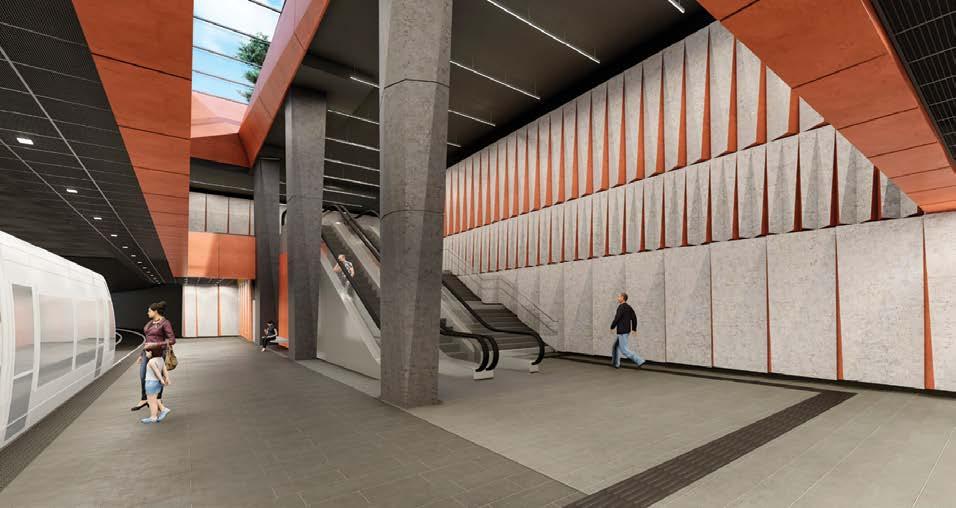
Czysta), Krowodrza (ul. Reymonta, ul. Armii Krajowej), Bronowice (ul. Armii Krajowej) and Prądnik Biały (ul. Jasnogórska), to the depot in the area of ul. Jasnogórska.
To build a double-track tunnel to a depth of around 10-15m underground with an external diameter of 9.6m, it was assumed that TBMs would be used. The stations would be constructed using the top-down method – with mining methods in critical locations. Pre-metro stations will be approximately 120m long and 25m wide, with an average depth of 15m.
Forecasted maximum flows are 4600 passengers per direction, per hour, in 2038. In order to handle these streams, trams with a length of 50-60m were planned to run every four minutes at peak times, each capable of accommodating 350 passengers. The vehicles would consist of two cars – the longer one being 32-37m long and with a capacity of 220 passengers minimum, and a shorter one with a length of 23-28m and a capacity of 130 passengers. After the peak, vehicles would be uncoupled to match supply to needs.
While it was assessed that each of the three variants (two metros and one premetro) would be economically profitable, the highest internal rate of return would be achieved by pre-metro. Costs are important here: financial analysis shows that only the pre-metro variant can be financed and maintained without external funding. The alternative options analysed were two variants of the metro (entirely underground), but they had a similar transport capacity to the fast tram variant, and were significantly more expensive both in construction and subsequent operation. It is worth emphasising that the pre-metro construction cost is almost half that of traditional underground railway. According to the study, the cost of implementation is estimated at around PLN5.8bn (EUR1.35bn), with nearly PLN12bn (EUR2.8bn) for the metro.
In January 2022, Kraków signed an agreement with Ekovert to prepare the documents needed to obtain an environmental decision for the first stage of the pre-metro. This 10.5km (6.5-mile) section connects Dom Handlowy Wanda with Piastowska. This includes the 5.6km (3.5mile) tunnel under the city centre and the flyover. The environmental permit should be granted in the third quarter of this year.
Construction of a metro has not been ruled out for the future – the tunnel will be able to accommodate both tram and metro, and when it is built the city will be able to better estimate passenger numbers, taking into account the city’s development.
To make such a solution possible, some changes were made to the concept: the diameter of the tunnel was increased from 9.6m to 10.5m, dictated by the need to maintain a larger reserve for tunnel equipment elements (including power supply, communication, fire protection systems). On the one hand this will facilitate their installation and ongoing maintenance, and on the other – if necessary – will enable the installation of additional equipment. Detailed designs of the tunnel equipment will be developed only at the next stage of the task, i.e. when the decision on environmental conditions has been issued.

Bronowice Małe
Bronowice SKA
Bronowice Wesele
Górnickiego
Białoprądnicka
Pachońskiego
Uniwersytet Pedagogiczny Głowackiego
Biprostal
Urzędnicza
Plac Inwalidów
BRONOWICE
Cichy Kącik
Park
Jordana
Reymana
Oleandry
Kuźnicy
Siewba Wiadukt Bociana
Krowodrza Górka
Bratysławska
Szpital Narutowicza
Nowy Kleparz Dworzec Towarowy
Pędzichów Politechnika
Batorego
Uniwersytet Jagielloński
Muzeum Narodowe
Komorowskiego
Salwator
Teatr Bagatela
Wawel
Jubilat
Stradom Orzeszkowej
Szwedzka
Kapelanka
Słomiana
Kobierzyńska
Norymberska
Grota Roweckiego Ruczaj
Kampus UJ
Chmieleniec
Czerwone
Maki P+R
Rondo Grunwaldzkie
Lubicz
Teatr Słowackiego
Hala Targowa
Miodowa Starowiślna
OLSZA
Cmentarz Rakowicki
Muzeum Fotografii
Uniwersytet Ekonomiczny
Mistrzejowice
Ronda Piastowskie
Miśnieńska
Os. Złotego Wieku
Os. Piastów
Piasta Kołodzieja
Kleeberga
Dunikowskiego
Rondo
BIEŃCZYCE
DH Wanda
Rondo
Muzeum Lotnictwa
Stella Sawickiego AWF
Czyźyńskie
Czyźyny
Centralna
Białucha
Cystersów Rondo Mogilskie
Teatr Variété Francesco Nullo Fabryczna Ofiar Dąbia
Rondo Grzegórzeckie
Plac Bohaterów Getta Muzeum Inźynierii Miejskiej
Dąbie Plaza Tauron Arena
Kraków al. Pokoju M1 Al. Pokoju Rondo 308. Dywizjonu
CZYZYNY
Bieńczycka
Os. Kolorowe
Zabłocie Klimeckiego
Plac Wolnica Limanowskiego
Korona
Smolki
Rondo Matecznego
Lipińskiego
Borsucza Broźka
Rzemieślnicza
Łagiewniki
Łagiewniki ZUS
Łagiewniki SKA
Solvay
Borek Fałęcki
One of the advantages of the selected route is the potential for connection to the Meissnera – Mistrzejowice tram route, which is already under construction. Conceptual work for this 4.5km (2.8-mile) line has been ongoing since 2014, along a route that leads from the intersection of al. Jana Pawła II with Lema and Meissnera streets, then along Meissnera, Mły ń ska, Lubla ń ska, Dobrego Pasterza, Krzesławicka, Bohomolca and ks. Jancarza up to the existing Mistrzejowice loop. A tunnel will be built under the Mły ń skie and Polsadu roundabouts – a third tram tunnel in the city. The work is being carried out
WOLA duChACkA
Kurdwanów P+R
Kuklińskiego
Kabel Bieźanowska
Dauna Piaski Nowe
Nowosądecka Witosa
by Gülermak, with which Kraków signed a contract in December 2020 worth PLN1.92bn (EUR446m); it also covers a 20-year maintenance period.
The investment is being implemented in a public-private partnership formula, which is unusual for transport projects in Poland. The private partner’s task is not only to build, but also to design, provide financing and then maintenance for a 20-year period.
One of the most important benefits of this public-private partnership is that the investment does not burden the municipality’s public debt and there is no public risk during the construction phase –
Prokocim
pLASZÓW
p OdgÓRZE
Wlotowa
Prokocim Szpital
Teligi Nowy Prokocim Ćwiklińskiej
Os. Rźąka
the first payments start when the trams run. The rate will be fixed, with payments over 20 years. This is the first Polish venture in the PPP formula, the value of which exceeds PLN1bn (EUR237m). Currently, it is the largest transport project of this type in Europe.
This a model project intended to gather experience in a country where public investors are used to relying solely on EU subsidies. Lacking such large aid funds, cities will have to look for money in other ways and create new guidelines for the implementation of such projects.
Works started in July 2023, and currently the estimated completion date is the end of
Wzgórza Krzesławickie
Darwina Jarzębiny
Cienista Wańkowicza Wiadukty
NOWA hutA
Teatr Ludowy
Rondo Kocmyrzowskie im.
Ks. Gorzelanego
Os. Zgody
Struga Plac Centralny im. R. Reagana
Os.Na Skarpie
Klasztorna
Elektromontaź
Zajezdnia Nowa Huta
Kombinat
Brama nr 5
Bardosa Suche Stawy
Kopiec Wandy
Fort Mogiła
Brama nr 4 Giedroycia
Os. Złocień
2025/early 2026. The project assumes the construction of a single tunnel – the tunnel itself under Mły ńska, Polsadu roundabout and Lublańska will be approx. 457m long, plus an open excavation with a tunnel connector under Młyńskie roundabout and a southern approach ramp of approx. 517m, and a northern approach ramp. The tunnel will have a vertical gauge of 4.9m. After deducting the space for the overhead contact line, the tunnel will have a minimum height of 4.5m enabling the passage of standard technical vehicles.
The tunnel at its deepest point will be 12m below ground (measured to the railhead)
Przewóz
Pre-metro route
Tram routes (planned/underway)
Tunnelled section/s
– depending on the depth of the clay roof, the depth of foundation of the diaphragm walls varies between approximately 15-22m below ground level. The differences in the level of wall foundations also result from the geometry of the access ramps and the groundwater table. Diaphragm walls in the area of the northern approach ramp require a much shallower foundation.
There will be two stops below ground: Rondo Polsadu (-2) and Rondo Mły ńskie (-1). The latter includes an unusual pedestrian crossing at rail level. The side platforms at both stops will be at least 4.5m wide.
Due to track geometry and curves, a speed of 50km/h (31mph) will apply, with automatic traffic control in the tunnel based on verification of section occupancy. If the tram does not leave the designated zone, entry into this zone will be signalled by a red light at the entrance signal in front of the zone. Axle counters or induction loops will be used. A central server located in the server room at the Rondo Polsadu stop will be responsible for coordinating signals and managing messages throughout the tunnel and on the on-ramps.
The design solutions of the tram route to Mistrzejowice take into account future adaptation to the pre-metro. The length of the platforms at the Rondo Mły ńskie and Rondo Polsad underground stops were extended to 65m, while it will be possible to expand the platforms at the Barei roundabout and Park Wodny as well, i.e. along the route of the planned pre-metro line.
Additional space was also designed around Młyńskie roundabout that will enable the connection of the pre-metro line, allowing for the construction of two turnouts and a crossing. However, the project itself does not provide for the construction of turnouts at this stage of work, which is justified for maintenance reasons.
The city is already planning further steps related to the implementation of the (pre)metro route towards Śródmie ście. The announcement of a public procurement for the development of design documentation for the first stage is planned for 2024, with development scheduled for 2025-26. Construction works are planned for 2027-33, after the securement of financial resources in the Multiannual Financial Forecast of the City of Kraków.
The investment will cost several billion zlotys, so Kraków is currently analysing several financing options: own funds with EU funding, own funds in the public-private partnership formula, and own funds with EU funding and a public-private partnership. The experience of building a tram to Mistrzejowice, which is a good testing ground for alternative financing, will be helpful here. The final choice of solution is still an open question pending April’s local elections –although all important candidates talk about building a metro. Whoever takes over the helm in the second largest city in Poland and the former capital of the country will not give up building underground – the question is whether they will be able to translate the endless discussions into action.
The construction of an underground railway, regardless of its form, results from the transport needs of a constantly developing city – especially the intensively built-up peripheral districts. It is also a matter of aspirations – which encompasses the eternal rivalry with Warsaw, which has two metro lines. Kraków itself prefers the comparison to Vienna, which is by no means a bad model – Vienna has been at the top in the qualityof-life rankings for years, one of these factors being its efficient public transport. Quite coincidentally, the capital of Austria also started its metro construction by building underground tunnels for trams.
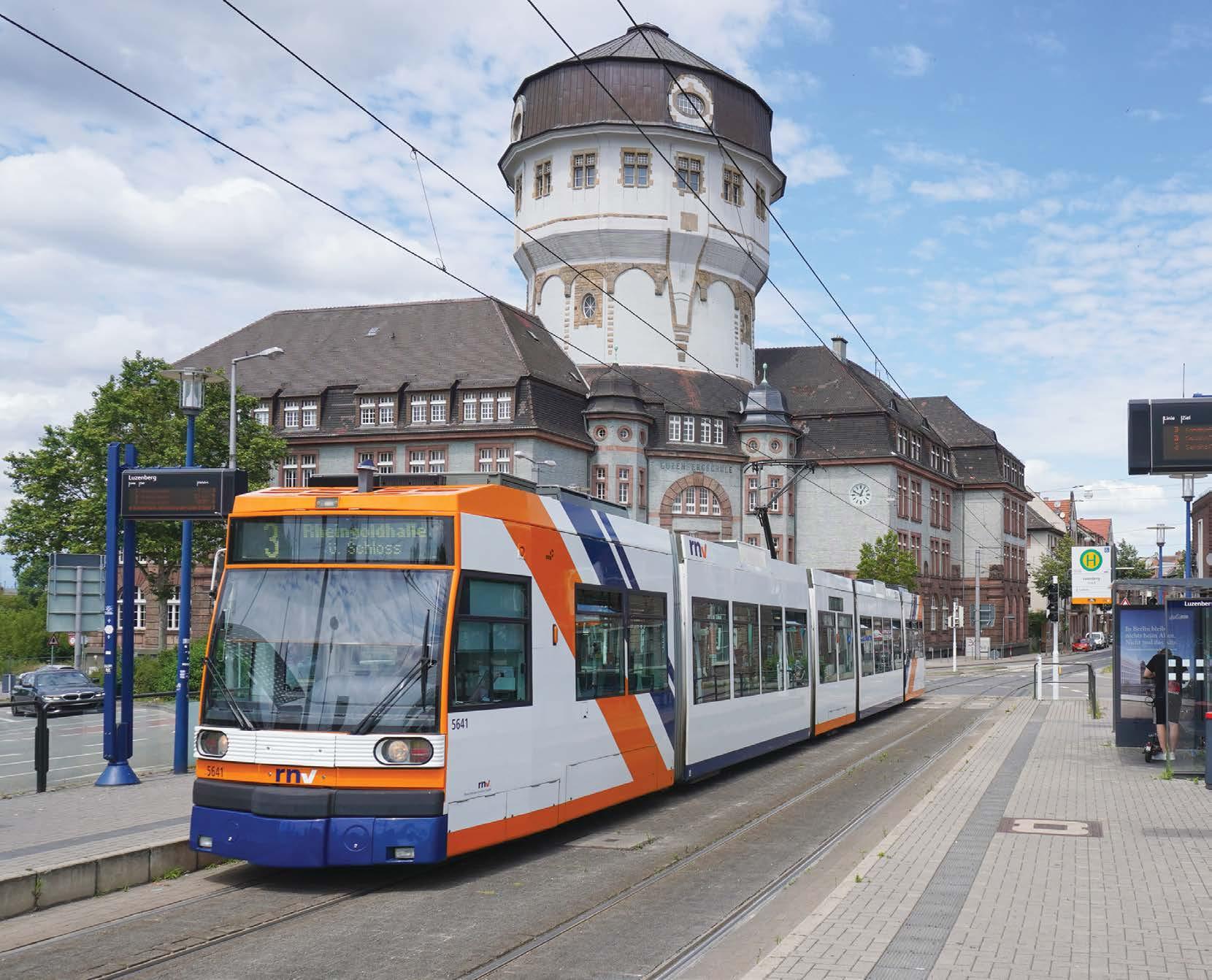
andrew thompson looks at how investments made to the Lrt system in germany’s rhine-neckar metropolitan region continue to contribute to a world class service.
Home to over a half million residents, the Main-Neckar region in southwestern Germany is named after the two major rivers and anchored by a dynamic Tricity conurbation. With Mannheim to the centre, Ludwigshafen to the west and Heidelberg to the east, it is an economic hotspot, home to a wide variety of industries and multimodal transhipment facilities. The area also benefits from its close proximity to major population centres such as Frankfurt am Main to the north, Karlsruhe to the south and Stuttgart to the southeast.
While Mannheim and Heidelberg are located in the federal state (Bundesland) of Baden-Württemberg, Ludwigshafen is in Rheinland-Pfalz (Rhineland-Palatinate) and best known as the headquarters of chemical giant BASF (Badische Anilin- & Soda-Fabrik) since the company’s founding in 1865.
Indeed, the sprawling BASF factory complex on the west bank of the River Rhine is also served by Ludwigshafen’s tramway and the northern branch to Oppau.
Operated since 2005 by the amalgamated municipal company Rhein-Neckar-Verkehr GmbH (RNV), the Mannheim area is home to one of the world’s great interurban tram systems. On the two overland sections Mannheim – Weinheim – Heidelberg, or Mannheim – Edingen – Heidelberg, the RNV network includes the metre-gauge infrastructure of the former Oberrheinische Eisenbahn-Gesellschaft (OEG). Mannheim and Heidelberg are connected by a remarkable interurban tram loop, which is unique in Europe and operated by the high capacity line 5, with frequent services running both clockwise and counter-clockwise.
Additionally, the western overland line from Ludwigshafen to Bad Dürkheim
was also taken over from the predecessor company Rhein-Haardtbahn GmbH (RHB) and integrated into RNV. The 16.4km (10.2-mile) branch line from LudwigshafenOggersheim to Bad Dürkheim originally opened in 1913 and was electrified from the outset. This was a few decades after the first horse trams appeared in Mannheim and Ludwigshafen in 1878. Steam trams on new routes followed in 1884 and electric traction was eventually introduced in 1900.
Somewhat similarly, the first horse tram ran in Heidelberg in 1885, with electrification being introduced in 1901. Heidelberg’s urban tramway experienced a real boom in the late 1920s and early 1930s, which was contrasted by line closures later during the early 1970s. This negative trend, however, was successfully reversed in 1988, when the short extension from Bunsen-Gymnasium to Technologiepark was
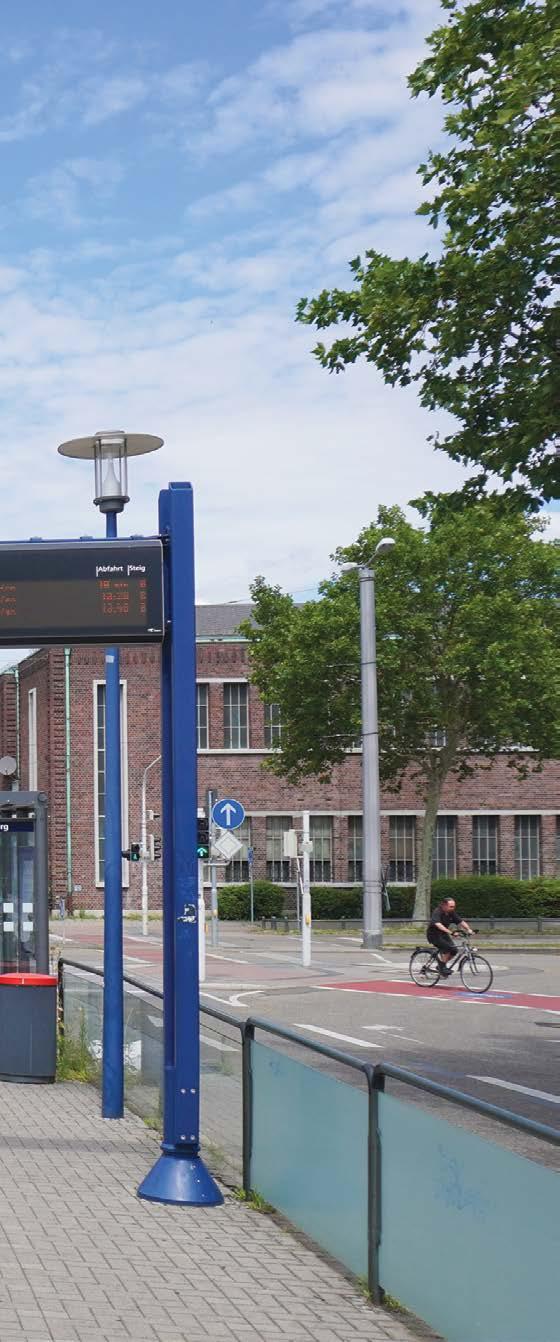
in the north of mannheim, Luzenberg is the junction station for the branches of lines 1 and 3. the tram halt is framed by the elegant and dominant water tower dating from 1909.
mannheim’s urban palace (Schloss) is an 18th century Baroque landmark that is served by numerous lines and benefits from its close proximity to mannheim hauptbahnhof.

inaugurated on the north bank of the River Neckar, and in 1995 the logical continuation from Technologiepark to the junction Handschuhsheim Bahnhof OEG was launched. Additional extensions followed in 2006 with the branch to Kirchheim and in 2018 with the short spur from Montpellierbrücke to Gadamerplatz, on the south side of Heidelberg Hauptbahnhof.
Four years after RNV took over operations of the Mannheim and Ludwigshafen tram services, Heidelberg joined in 2009, though the municipal predecessor company Heidelberger Straßen-und Bergbahn AG still owns the infrastructure and also continues to operate the two urban funiculars Molkenkurbahn (471m) plus the adjoining Königstuhlbahn (1020m). These two mountain railways provide a direct link from the historic old town to the impressive Heidelberg castle at the summit station of Molkenkurbahn, and then further up to the top of Mount Königstuhl, which rises 550m above sea level.
The disadvantage of the two funicular lines is that they are not linked to the tram network and instead around a 1.5km walk
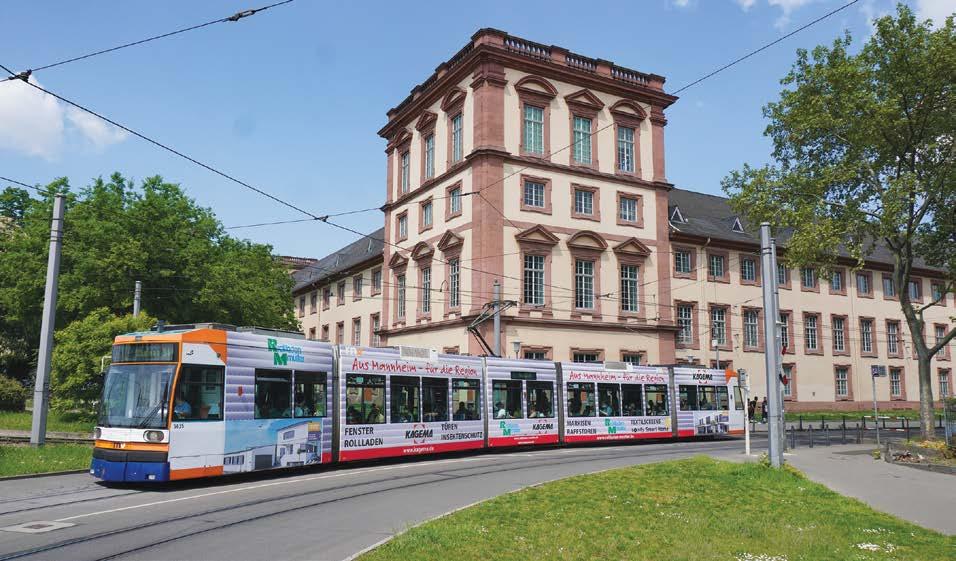
or a connecting bus ride is required from the central interchange Bismarckplatz to reach the popular rides. Indeed, Bismarckplatz is the nearest tram stop to Heidelberg’s famous and much visited Old Town, but even from there it is almost a kilometre to reach the main square Universitätsplatz. A change of these circumstances is not planned, although at least the east-end of Heidelberg’s old town has its own S-Bahn commuter railway station, though it is also peripheral and over 800m to Fischmarkt.
While there are no immediate extension plans for Heidelberg’s tram network, there are mid-term plans for a new link to Patrick Henry Village, a former United States Army family housing area southwest of the city centre. These facilities formally closed in 2013, when American personnel moved to the new headquarters that had been built at European Command in Wiesbaden. Since then, Patrick Henry Village is one of the largest urban conversion projects and development areas for municipal authorities in Heidelberg and it should eventually be home to over 15 000 residents, who will require efficient mass transit.
As part of extending the tram network to Patrick Henry Village, a further westward continuation to Schwetzingen would also be possible and sensible, as it would provide a further link between tramway and the main line railway network. Plans are currently on the drawing board and dependent on local approval.
A very similar project was just completed in the north of Mannheim in late 2023, when the 1.8km (1.1-mile) branch line from Bensheimer Strasse to Sullivan opened. This network extension serves the new residential district formerly occupied by the US Army Franklin barracks. Construction took less than two years. Now the redeveloped Franklin district is home to over 6000 residents, which is expected to grow beyond 10 000 during the coming years.
Currently the newly introduced tram line 16 serves the short branch, with just one vehicle being enough to shuttle back and forth
between Bensheimer Strasse and Sullivan, offering a 20-minute interval. Along the way two intermediate stops, Franklinschule and Franklin Mitte, are served. Following the completion of infrastructure enhancements and capacity enlargement at the nearby Käfertal station on the interurban loop, line 16 services will be able to run through to the city centre, offering a more intensive timetable and eliminating the need to change vehicles at Bensheimer Strasse.
Prior to the Franklin extension, the most recent enlargement to the Mannheim tramway was the Y-shaped, 6.4km (four-mile) link to Käfertalerwald and Waldfriedhof in the north of the city. These two termini are served by lines 4 and 4A. In 2005-06 the modern events arena in the south of the city was connected by two separate lines, which each terminate at the S-Bahn Mannheim Arena/Maimarkt station.
In Ludwigshafen, the most recent infrastructure enhancements focused on the lengthy rebuilding of tram line 10 in the northern Friesenheim district. Parts of this alignment in Alt-Friesenheim are single track, and completely renewing the right of way proved challenging at some spots as the streets are narrow and access for construction equipment was tricky. The works had initially started in April 2019 and were finally completed in March 2023, three months late and EUR5m over the original budget. During the lengthy rebuilding process, line 10 services were diverted to the short branch to Ebertpark, which is otherwise not regularly used and just retained for diversionary purposes.
Generally, Ludwigshafen remains a prominent example of the light rail
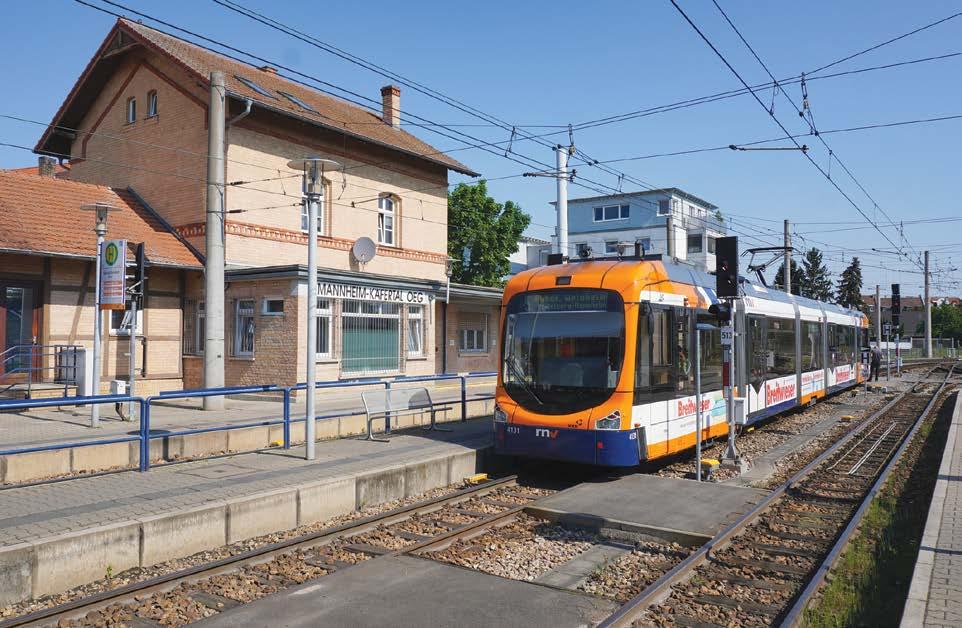
tunnelling boom, which was popular and eagerly pursued in West Germany during the 1960s and 70s.
At one point Ludwigshafen’s authorities considered over-ambitious underground plans, before settling on several underground tunnels to be integrated into the existing tram system, giving those operations the look and feel of a pre-metro. Different tunnel sections were opened in 1969 and 1976 respectively, but because actual urban development and population growth did not keep pace with the original vision, the tunnel route via Danzigerplatz was underutilised and eventually reduced to peak-only service in 2001. Finally, it was abandoned altogether in late 2008. The main tunnel trunk via Ludwigshafen Rathaus (City Hall) remains popular and heavily used, although is served by multiple important
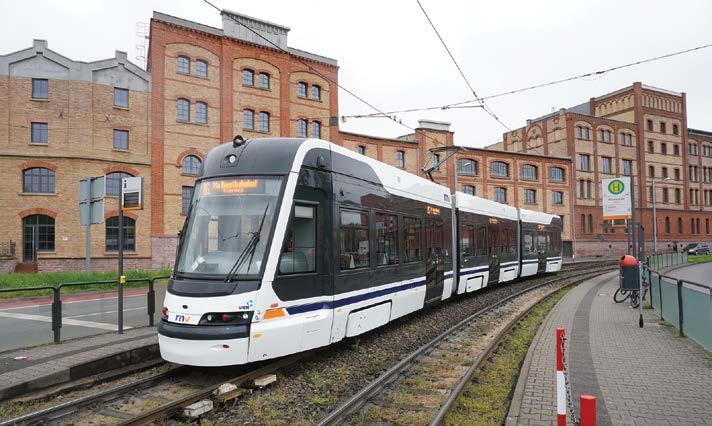

Variobahn 4122 on 15 January 2024 at Franklin Sullivan, the terminus of the new 1.8km (1.1-mile) tram branch, which opened in December 2023. the next extension of mannheim’s network is expected to break ground in 2024. South of the main station in the re-developed glückstein district, 1.5km of new track will be built for use by lines 1, 3 and 8. the new route will link up at both ends with the existing network.
on 28 april 2023, the new Škoda 1403 is in use on the BS express line and has just reached the Bibienastrasse stop on the journey into the city to mannheim h bf. in the background is the old brewery from 1880. this three-section articulated type 36T has three of its four bogies powered, and offers 72 seats, with a total capacity of 178 passengers.
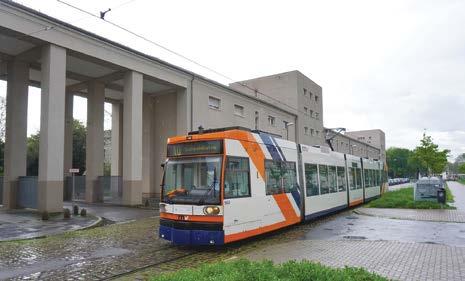
While the infrastructure of line 10 was being modernised in the alt-Friesenheim district of Ludwigshafen and trams could not reach the regular terminus Friesenheim mitte, line 10 services were instead diverted onto the short branch to e bertpark. this track is otherwise also only used for exceptional purposes. the short branch is framed by attractive Functionalist residences dating from the 1920s.
lines. Also Ludwigshafen Hauptbahnhof has an underground light rail station built in tunnel. This is located on the westbound branch to Oggersheim and Bad Dürkheim.
In Mannheim the short, semi-circular tunnel section opened in 1971 and is located just north of the city centre. It features a lone stop at Dalbergstrasse and is used by line 2.
On the rolling stock front, the 50 Duewag type 6MGT from 1994 remain indispensable. These were the first low-floor vehicles and have now been in service for three decades. Starting in 1998 and running until 2013, a total of 83 Variobahn LRVs were supplied by Adtranz (later Bombardier) in various versions, including single and double-ended vehicles. These are deployed on particularly long interurban routes. Locally classified as RNV8ER, the longest variant is almost 43m and has 129 seats with additional standing capacity for 133 passengers.
In June 2018, RNV launched the next stage of its fleet evolution and ordered 80 trams in varying lengths of 30m, 40m and 60m from Škoda. The firm order has a value of EUR265m, with contract options in place for 34 additional vehicles. There will be 31 ForCity Smart 36T, 37 type 37T, and 12 class 38T. While the 36T is 30m long, the 37T is 40m and the extra-long 38T almost 60m. These Class 38T XL units are intended for deployment on the interurban line 5 to Heidelberg, where RNV already now uses sets of coupled low-floor Variobahn LRVs, in order to ensure adequate capacity.
First to arrive in Mannheim in October 2022 were the 30m Škoda ForCity Smart type 36T trams, which started deployment in revenue service in April 2023 on the special line BS, which acted as an express shuttle service from Mannheim Hauptbahnhof to Talstrasse, where the national gardening exhibition Bundesgartenschau (BUGA 23) took place at Spinelli Park from spring to autumn 2023. Since early October 2023 the 36Ts have also run on the regular line 2, while the first 37Ts were allocated to line 3 as of January 2024. The first XL 38T are expected to arrive at RNV later in 2024. For the Czech producer Škoda the RNV contract is the largest German order to date. Thanks to this kind of investment in both infrastructure and rolling stock, the unique RNV system is primed to maintain its world class service and remain a shining example of an interurban light rail network.

In our 15th anniversary proud hosts of the European Light Rail Congress .






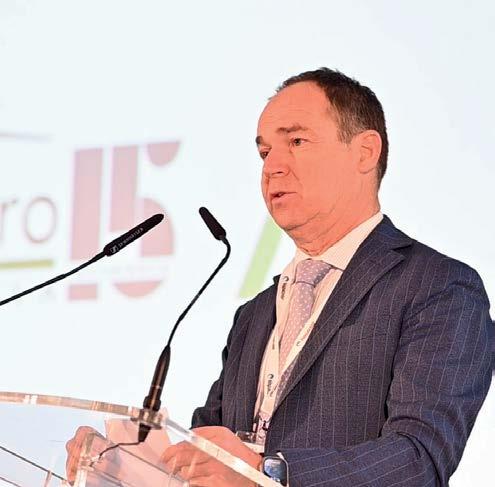







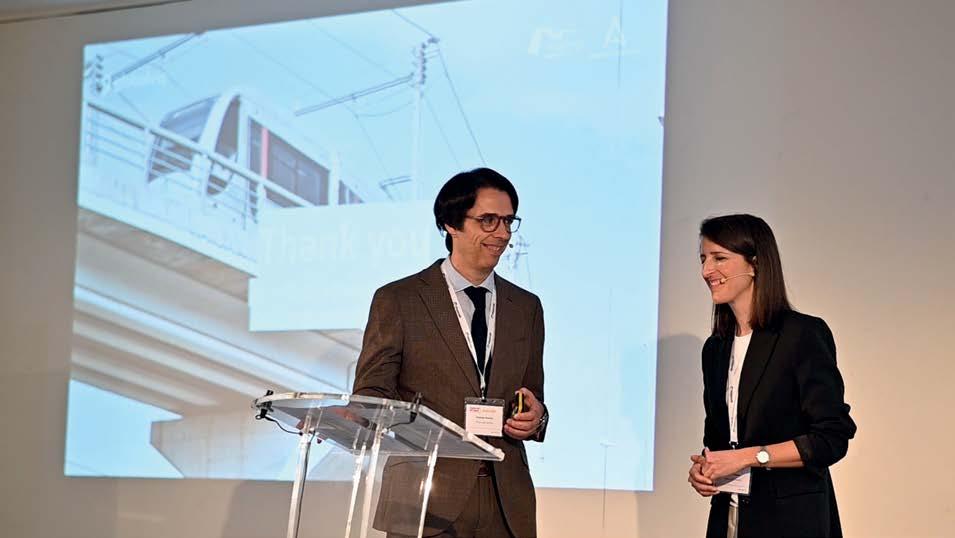
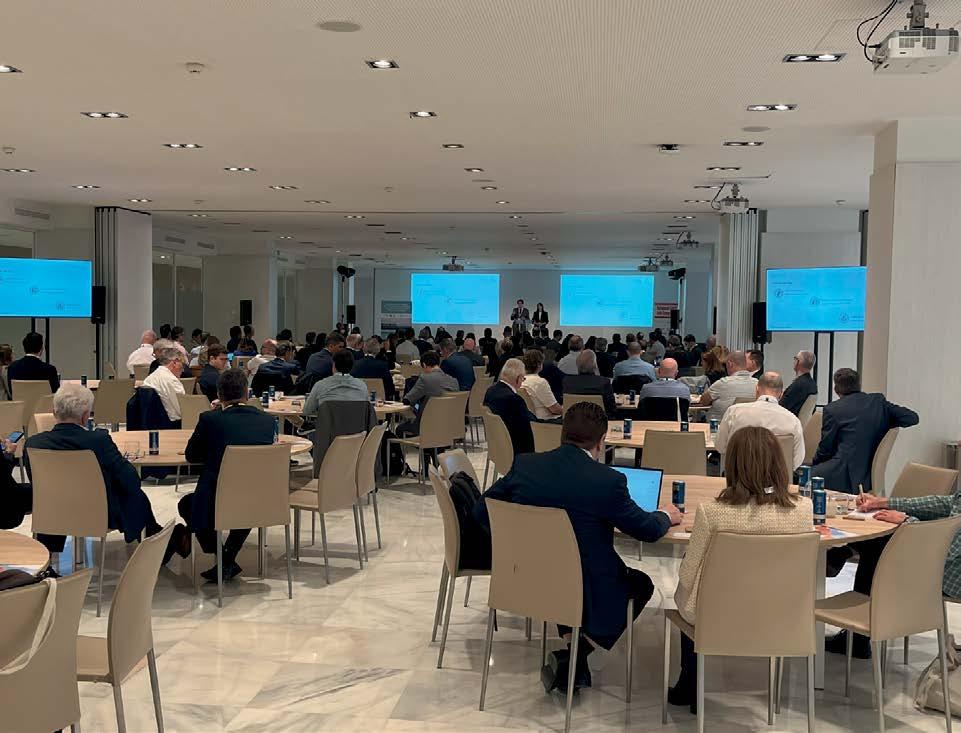
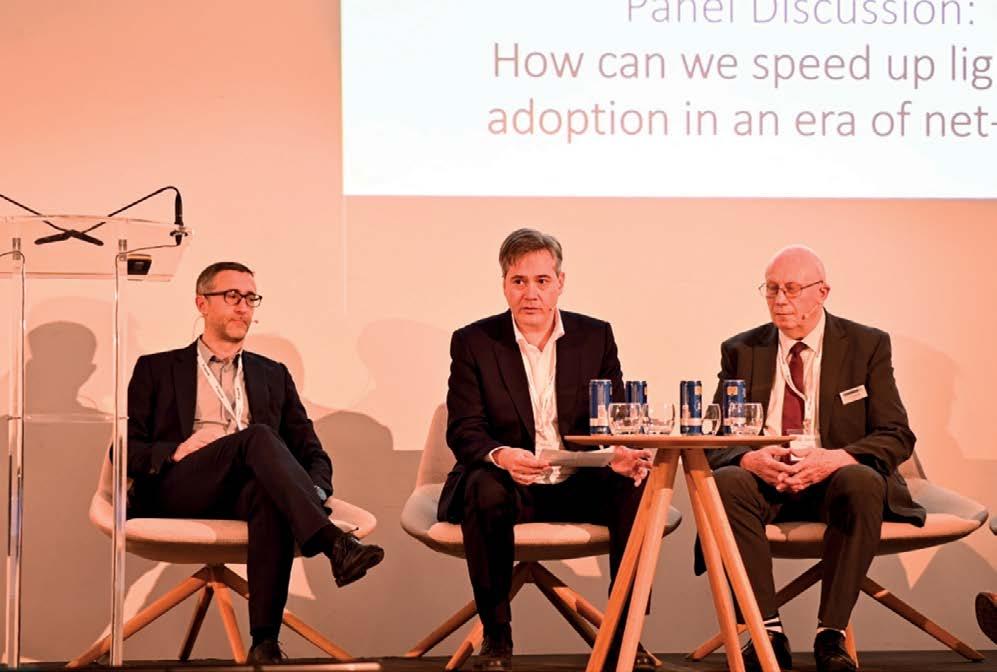



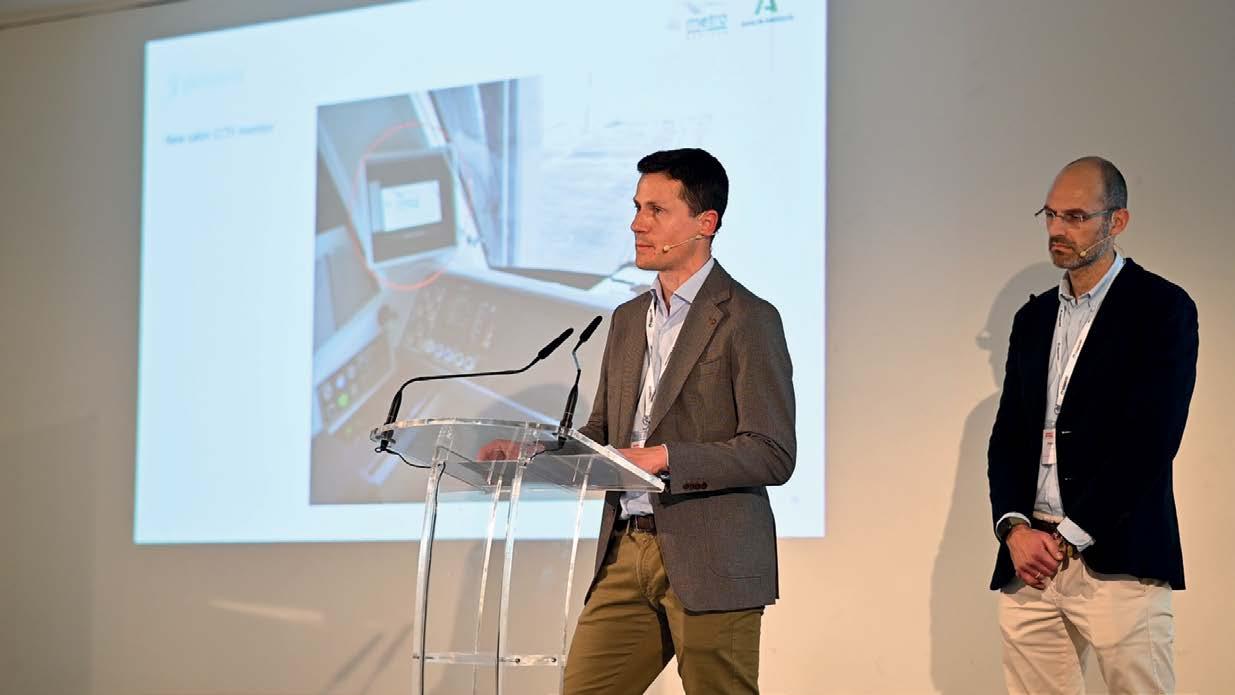







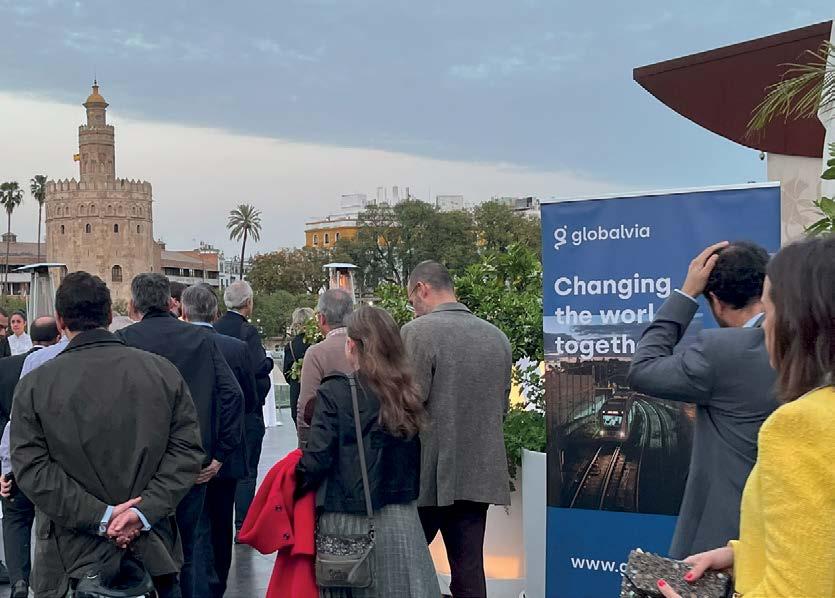








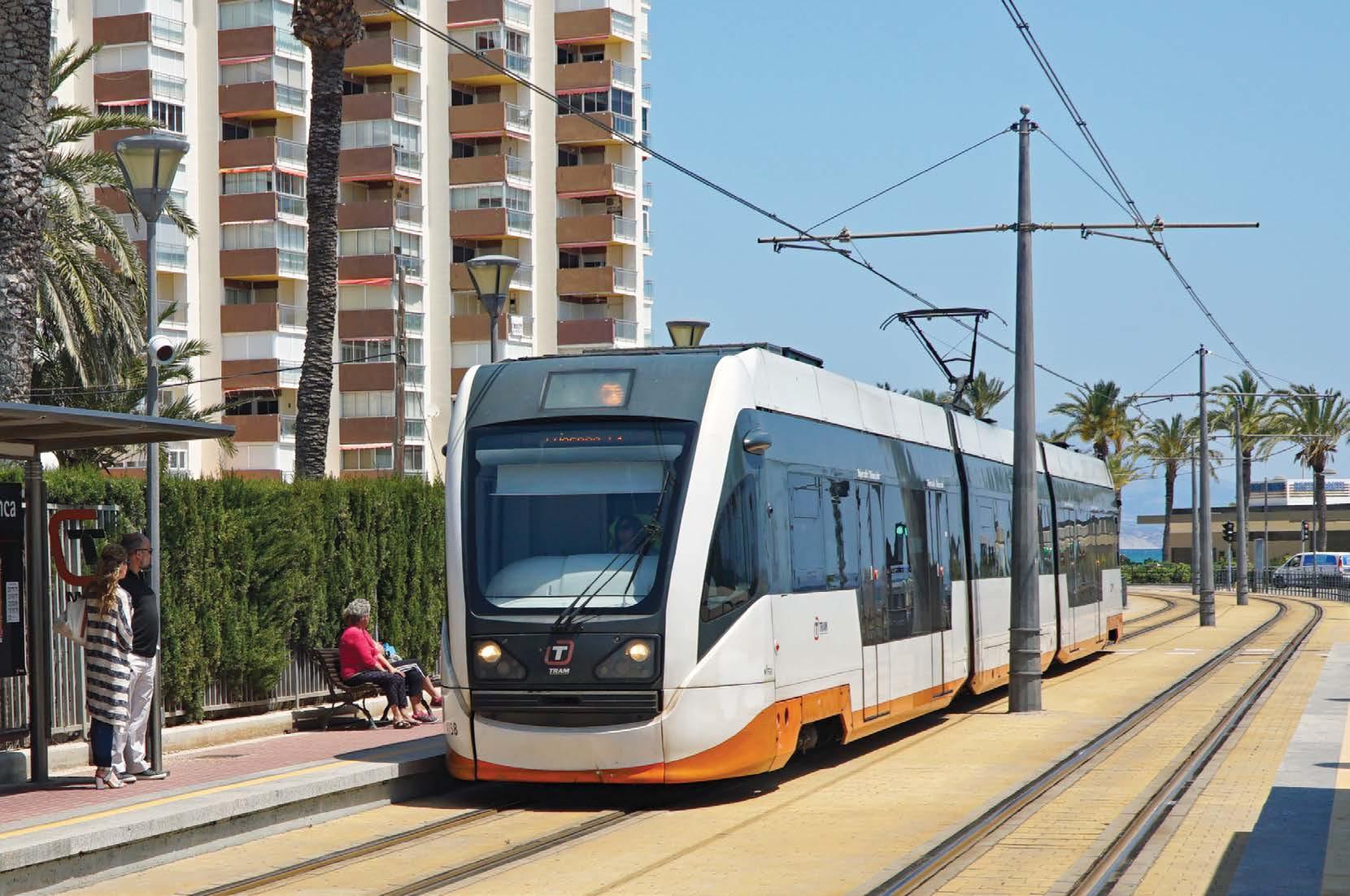
Spain’s tramway expansion seems unstoppable – TAUT gives an overview of the country’s LRT systems.
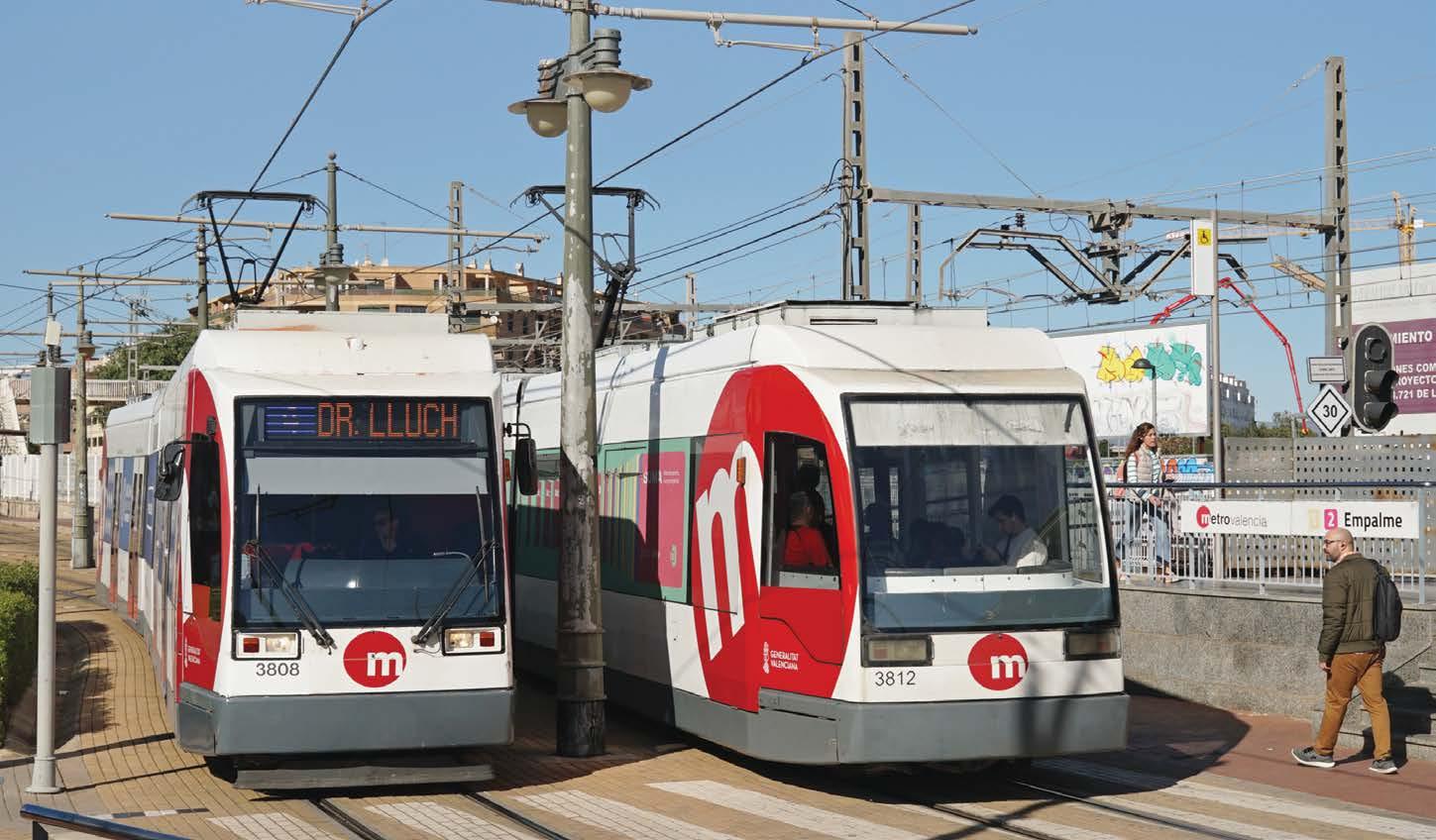
LEfT: The alicante light rail project has successfully integrated a new city tram operation with the interurban role of the narrow-gauge railway which it replaced. a Stadler tram-train on a Benidorm to alicante service at Costa Blanca stop on 17 May 2018. Neil Pulling
almost from a standing start, Spain has returned tramways and metros to most of its major cities over the last 30 years, and their further development only seems restricted by the nation’s ability to raise sufficient funding.
The determination to control the use of the motor car in urban environments was given a boost at the end of 2022 when the government decreed that fares must be halved by 30%, and much more in some places.
This is a brief review of some of the major schemes, but for more information please see our comprehensive round-up by Michael Taplin in our special book, The Tramways Return, published to celebrate TAUT ’s 1000th issue in 2022. Thanks are also due to Neil Pulling.
Valencia
The modern comeback of Spanish tramways began here in May 1994 in a city of 800 000 people. The first trams ran from 1876 until 1970, supplemented by an interurban light railway that survived to be incorporated into Metrovalencia.
Former FEVE narrow-gauge suburban railways have been upgraded to a modern rapid transit network: there are two distinct modes or systems collectively, plus Cercanias suburban rail, making up the fixed link network. The tramway is operated by Ferrocarrils de la Generalitat Valenciana (FGV), which took over in January 1987.
On 8 October 1988, the tunnel under the city centre connecting northern and southern lines was opened, a key factor in the creation of today’s metro operation. Tramline 4 was the first modern tramway in Spain, linking Empalme and Dr Luch (9.7km/ six miles), serving the Polytechnic and being close to Malvarosa beach. It had 25 Siemensbuilt low-floor 23.8m trams delivered in two batches in 1993 and 1998, one now being out of use and subject to a temporary transfer to Alicante. The line has been extended twice at the western end to Mas del Rosari, with a short branch to Lloma Llarga Terramelar and another to the Fira Valencia, used only when there are events at the fairgrounds.
In September 2007, a new 2.4km (1.5mile) branch to Tossa del Rei was opened as line 6. Beyond Dr Luch, it was extended to a sub-surface interchange with metro lines 5 and 7 at Maritim-Serreria. This is also used by line 8 (1.2km/0.8 miles) to Marina Real Juan Carlos 1 (formerly Neptú). The tram fleet has been supplemented by 30 100% low-floor Bombardier Flexity for the future line 10, partly in subway, from Alacant to Neptú. (A full Systems Factfile on Valencia will appear in the July issue of TAUT (1039)).
The capital of Spain has a population exceeding five million, and a large 293.5km (182-mile) metro system. This opened in
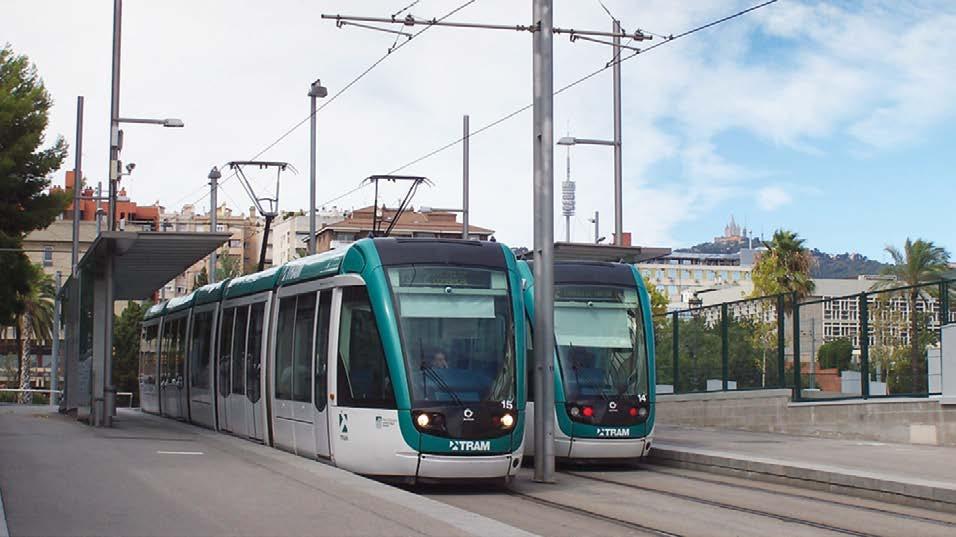
1919, with 13 narrow and wide profile lines and 276 stations. Three tramlines were built as metro feeders and termed metro ligero (ML).
The only one wholly in a built-up area, ML-1 from Pinar de Charmartin to Las Tablas, opened on 24 May 2007, 5.4km (3.4 miles) with five of the nine stops in tunnel. Both termini offer connections to lines of the Metro de Madrid; lines 1 and 4 at Chamartin and line 10 at Las Tablas.
ML-2 is 8.7km (5.4 miles) from Colonia Jardin to Estación de Aravanca, mostly as surface line on reservation, and opened in May 2007. There are 13 stations, three of them underground.
ML-3 links Colonia Jardin and Puerta de Boadilla (13.7km/8.5 miles) with two subway stations. It has 15 stations, two underground. Both ML-2 and ML-3 connect to metro line 10 at the Colonia Jardín terminus.
There was to be a 14.3km (8.9-mile) ML-4, but it was never built. As a result, the fleet of 70 low-floor 30m Alstom Citadis 302 was larger than needed, so 11 were sold to Murcia, nine went to Adelaide, and one to Buenos Aires for a demonstration project that came to nothing.
South of Madrid is the dormitory town of Parla (population 128 500), which enjoys a fast Cercianas commuter rail link to the capital. To feed this, an 8.3km (5.1-mile) circular tramway was built and opened on 6 May 2007 (stage 1, stage 2 followed in September). Nine Alstom Citadis 302 trams are used.
Future plans include two more lines, both circular, although more rapid metro expansion has been stifled by the country’s financial problems.
The Catalan city of Barcelona, with its large metro, gave up trams in 1971. It later built two separate lines, opening on 5 April 2004 (Trambaix) and 8 May (Trambesos). Work is in full swing to link the two networks together, which was finally confirmed following the election of a pro-tram mayor in May 2023.
Trambaix (15.1km/9.4 miles) comprises three lines that connect the Baix Llobregat area in the west with Plaça Francesc Macià interchange.
Trambesos (14km/8.7 miles) supports the revitalisation of run-down areas. It also has three lines that connect Sant Marti (further east down Avenida Diagonal) to Badalona and Sant Adia de Besos.
The in-town sections are attractive, starting at the city end along a tree-lined street near Barcelona Zoo and the former Olympic Village. Routes diverge at Glòries, where a link with Trambaix would join with T4, mainly following Avinguda Diagonal. Line T5 opened in October 2006, from Glòries to Gorg metro station. T6 opened in June 2008 and also starts at Glòries, running from Plaça de les Glòries to Sant Adrià de Besòs railway station. The one new station on T6, La Mina, serves a vast multi-storey housing complex.
Traffic is handled by 41 Alstom Citadis 302 trams, with 23 on Trambaix and 18 on Trambesos.
This modern and complex urban transport network in the Biscay provincial capital was covered extensively by Neil Pulling in a Systems Factfile feature in January 2023.
Bilbao has a population of 345 000, and lost its trams in 1964. Bizkaiko Garraio Partzuergoa (BGP) organises the public transport system, including a metro opened in 1995, with two lines operated by Metro Bilbao and one by Euskotren.
Euskotren also operates a metre-gauge tramline, opened on 12 December 2002, 2.85km (1.8 miles) linking Bilbao-Atxuri and Uribitarte, and extended to the Guggenheim Museum in April 2003.
In 2003-04 it was lengthened in two stages to La Casilla; redeploying former railway alignment, the tram line extended 2.3 km (1.44 miles) to Bolueta in March 2022. Initially eight CAF Urbos 1 trams provided the service on the 5.8km (3.6-mile) line and three million passengers/year are carried. More trams have been procured from Vitoria-Gasteiz, which system is also run by Euskotren.
A tram extension is due to run along Zorrozaurre river island from near Euskalduna over a new bridge. Euskotren’s mainly single-track Lezama line passes near Bilbao Airport’s southern edge, and
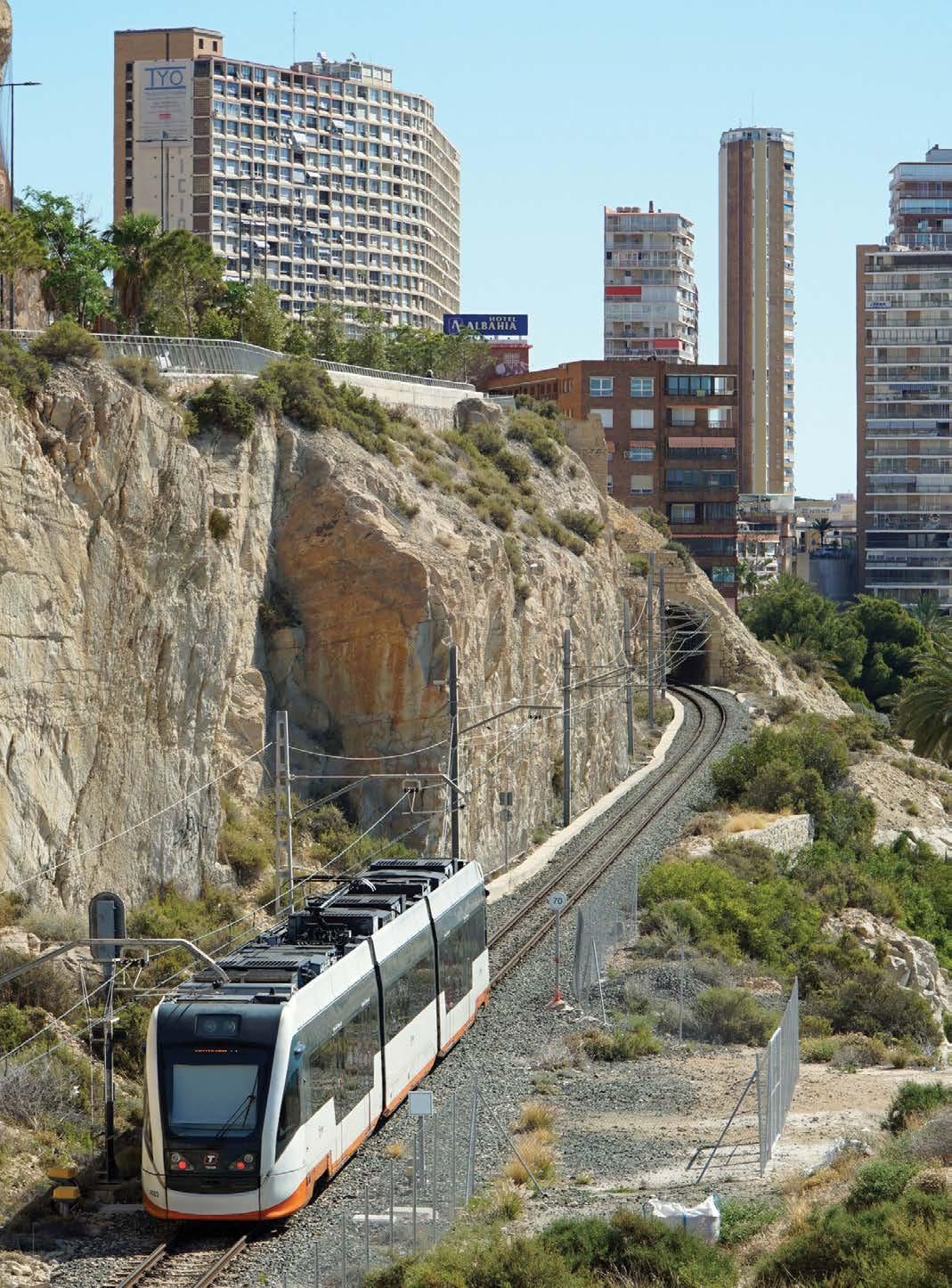
studies continue into new connections, possibly an extended line 3 service. A line 4 westward extension from Natiko is also under consideration. New line 5 works are adding five stations on the mainly underground route between the present Etxebarri and Unansolo Euskotren stations.
Sevilla (population 700 000) had a metregauge tramway of over 70km (45 miles) well into the 1950s, but extensions were not built to service the city’s physical expansion, and the system closed by 1960. Two interurban lines lasted until 1965.
The mode returned with the new MetroCentro-branded line over 2.2km (1.4 miles) of track in the city centre. It opened on 28 October 1987, and was extended to San Bernardo railway station on 15 April 2011.
The CAF Urbos 2 vehicles initially used on T1 went to join others operating the entirely separate Metro de Sevilla. Their replacements, required following a decision to remove overhead line near the cathedral in 2011, were four CAF Urbos 3 trams. They facilitate off-wire running via an ACR onboard energy storage system. Unlike similar rolling stock
in Zaragoza that recharges at ground-based strips, T1 has short overhead gantries at the three western stops and conventional overhead lines.
Sevilla’s cross-city metro has light rail characteristics on its suburban sections. Tram and metro overlap on different levels between San Bernardo and Puerta de Jerez, with Prado de San Sebastien also being an interchange. Service on the 18km (11-mile) metro line – 22 stations and 60% underground – started on 2 April 2009, and 17 CAF Urbos 2 cars are used (including those originally on the tramway). The city has comprehensive plans to extend both systems.
Pablo de Olavide station has not gained its intended transfer role, but in early 2023, CAF was awarded a EUR32.5m contract to supply six Urbos trams for the revived and much-needed 12.5km (7.8-mile) Alcalá de Guadaíra tramway reinstatement in the eastern suburbs.
The government and Andalusia region are co-funding a 7.6km (4.7-mile) double track underground extension from Prado de San Sebastan to Pino Montano, along with a 1.4km (0.9-mile) branch to a new depot, all by 2030.
LEfT: Replacing this section south of La isleta, with a doubletrack tunnel in full operation by 2019 removed a critical point on the system and allowed for increased services. Neil Pulling
Thirty years after trams disappeared from the streets of Alicante (population 331 600), they returned with FGV promoting a demonstration service between Puerta del Mar and Albufereta in 1999, later extended to El Campello using the metre-gauge tracks of the Alicante-Denia railway.
Today, the TRAM d’Alacant system has 112km (70 miles) of route, with 71 stations (three underground), and forms the backbone of a successful integrated urban transport network. An example of its success is that in 2014 a through-ticketing scheme from the line railhead to Benidorm (thereafter using the FGV service) eliminated a competing bus service.
The tram tunnel under the main avenue to Luceros terminus (near the main station) opened in May 2007, followed by a tramline to serve Playa San Juan (10km/six miles). A completely new line 2 linked the subway with Sant Vicent del Raspeig from September 2013 (8.9km, 5.5 miles). Bombardier Flexity trams run on four routes, lines 2, 3, 4 and 5, and Vossloh tram-trains are used on the 43km (27-mile) rail line 1 linking Alicante and Benidorm. 2019 saw tram and tram-train services improved with 1.48km (0.9 miles) of Serra Grossa tunnel replacing the base-ofcliff single track north of Alicante.
With fresh investment of over EUR250m, around 15km (9.5 miles) of new route are planned, along with modernisation of line 9 (Benidorm-Dénia), improving life in Marina Alta and Marina Baixa, and promoting tourism.
Works to connect Luceros station with that in Alicante were scheduled to start at the end of 2023.
In parallel, there will be a new connection between TRAM d’Alacant’s current network and Sant Joan and its hospital, continuing to Mutxamel, from the current lines 1 and 3 linking Luceros with Benidorm and El Campello. It is also planned to extend line 2.
The new Alacant intermodal station is planned to connect through the southwest of the city with the neighbourhoods of La Florida, Ciudad de Asís and San FernandoPrincesa Mercedes, and then extend north through Polígono de San Blas, Los Ángeles, San Agustín, Tómbola and Divina Pastora to connect with the current route near the Ciudad Jardín stop.
Stadler is supplying 16 new double-ended trams, with options for a further 12 costing EUR109.6m.
Developments in Granada were extensively covered by Neil Pulling in our Systems Factfile feature in the February 2024 issue of TAUT
In 1998, the city council and the regional government of Andalusía introduced a plan
“In the longer term, great benefits could be gained from reaching commercial and tourist areas [in Granada].”
for a tram system based on Nantes, France.
However, it was not until 2005 that a 15.9km (ten-mile) single-line route with 26 stations was agreed. It opened in 2017, and the first extension west from Armilla has been approved for completion in 2026. It will be 6.8km (4.4 miles) long, and a northern extension could add another 5km (3.1 miles) between Albodote and Atarfe. In the longer term, great benefits could be gained from reaching commercial and tourist areas.
Surface running track is planned over 3.5km (2.2 miles) between the existing Caleta and Andres Segovia. Recasting the services to integrate the new and existing infrastructure could mean three more lines. A Granadacentred suburban/commuter high-capacity railway is also proposed.
The current tram fleet is 15 bi-directional five-section CAF Urbos 3s. Eight more units are due in 2024.
Using tramway equipment, yet 80% underground, Metro de Malaga goes from strength to strength. Currently 13.2km (8.2-miles), it opened in July 2014 under a concession let to a company set up by the Andalusian regional government which retains a 25% stake. The balance is owned by a joint venture of FCC-Globalvía and several construction concerns.
The concession includes operations and maintenance until 2042.
The original eastern terminus for both lines, El Perchel, gives interchange with buses and trains at María Zambrano terminus which includes the high-speed line from Madrid. In March 2023 an eastward extension into the city centre terminating at Atarazanas added two stations.
From El Perchel, both lines share a common western tunnel for 2.9km (1.8 miles) before separating. Line 1 continues underground until Universidad where it surfaces, finishing at Andalucía Tech. Line 2 runs underground for the remaining 1.5km (0.9 miles) to Palacio de los Deportes. The tram fleet is 14 CAF Urbos 3s.
The system had an out-turn cost of EUR594-760m, against an initial budget of EUR403m.
A new section of Line 2 between El Perchel and Guadalmedina opened in 2023, and a further 650m spur on line 1 has opened to Atarazanas, adding two stops and doubling patronage to 16 million. This will increase to 25 million when it continues to Hospital Civil. Proposals for a line 3 include an extension of the Metro underground eastwards towards the El Palo district.
Vélez-Malaga is a small town east of Malaga, and inland from the sea (population 65 000). In 2003, construction started on a 4.6km (2.9-mile) tramway from the southern edge of town to the coastal resort of Torre
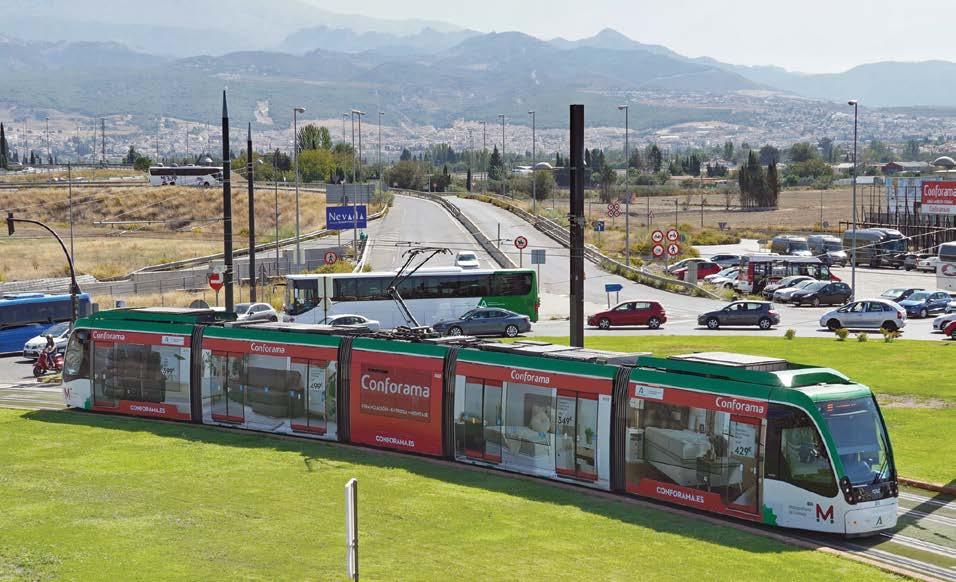
del Mar. Services started on 11 October 2006 using three CAF Urbos 2 trams.
The capital of Aragon province, with a population of 666 900, Zaragoza awarded a EUR350m BOM contract for a standard gauge 6.4km (four-mile) street-based tramline on a north-south axis from Valdespartera to Plaza de Basilio Paraiso. The previous system had closed through neglect in 1976.
The new system opened on 19 April 2011 and is worked by 21 33m CAF Urbos 3 trams. There are 2km (1.2 miles) of the line in the old city without overhead wires, with trams using CAF’s onboard energy storage system.
The line was expanded north to Parque Goya, reaching 12.8km (eight miles). In 2018, 27.8m passengers were carried and car traffic in the corridor fell by 30%. Ideas for expansion include using existing Cercanías-Zaragoza track for tram-train running to Villanueva de Gállego.
Cadiz is an Atlantic port city on a peninsula in the south-west, with a population of 117 000. It created the first example of a tram-train system in Spain, a 24km (15-mile) line using the 10km (six miles) of infrastructure manager ADIF’s tracks shared with RENFE trains from the main railway terminus south to La Ardila, then on new tramway through Chiclana de la Frontera to Pelagatos.
As such, it uses the Spanish broad gauge (1668mm) for its seven 38m CAF tram-trains that are capable of 100km/h (62mph) on the main line section. Although construction started in 2008, there have been many delays caused by the financial crisis, and technical issues of tram-train operation. It finally opened on 26 October 2022.
A second line (11km/seven miles) is planned. It will run on new tramway infrastructure from Cádiz, joining the suburban rail network at Puerto Real
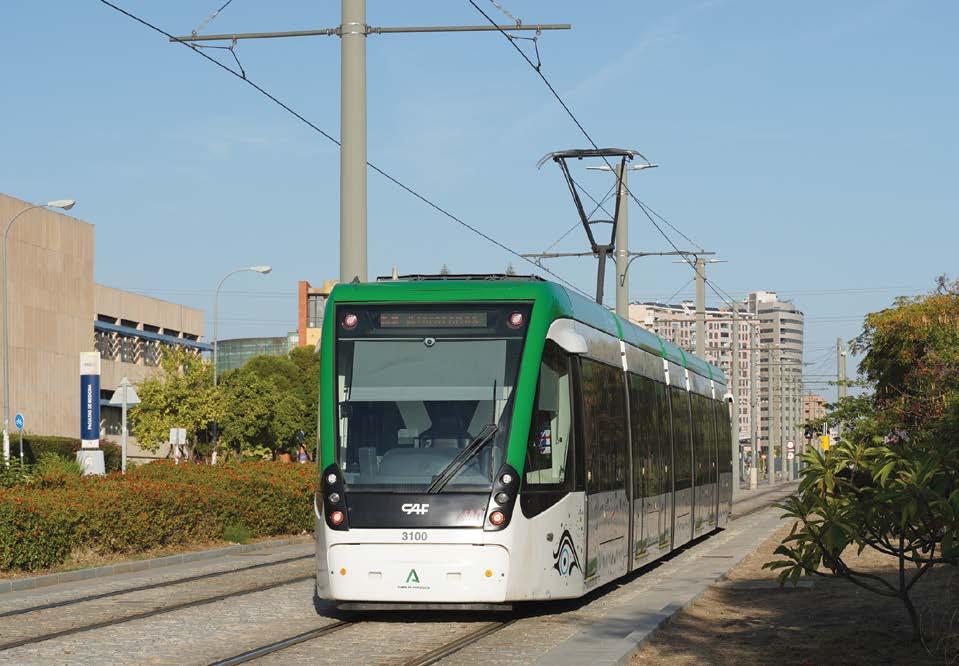
(with five stations) and continue to the international airport at Jerez de la Frontera.
Santa Cruz de Tenerife is the main city on the largest of the Canary Islands, and has a population of 205 000. Approval was given for a EUR306m tramway in 2003, and the 12.5km (7.8-mile) line 1 from the Intercambiador transport interchange in Santa Cruz to the historic hilltop town of San Cristóbal de La Laguna (La Trinidad) opened after long delays on 2 June 2007.
Some 2.5km (1.6 miles) of new track created line 2 in May 2009, which shares its central section with line 1. Twenty-six 32.1m Alstom Citadis 302 trams provide the service. The depot is at El Cardonal.
In January 2016, a tender was issued for a 2.5km (1.6-mile) line 2 extension at an estimated cost of EUR37m to run south-west from Tíncer to La Gallega, with four stops.
The metre-gauge tramway in the Basque capital opened in December 2008, running for 4.9km (three miles) from Angulema in the centre to Ibaiondo, site of the depot, in the north-west suburb of Lakua.
Line 2 opened from the existing Honduras stop to Kañabenta in July 2009, being further extended by 750m and two stops to Abetxuko in September 2012. The system uses two generations of CAF Urbos trams.
Both start from a junction near Florida stop, in February 2020 a 1.4km (0.9-mile) southern extension to the University opened, followed in 2023 by a 2.5km (1.5-mile) addition with five new stops to serve the eastern suburbs. A further 6km (four miles) of route with 11 stops will take trams through the San Martin district and join the present system near the reconfigured Lovania stop.
Murcia
Murcia’s initial 2.2km (1.4-mile) line and four stops opened as a demonstration project in 2007, with the whole of line 1 opening officially in May 2011.
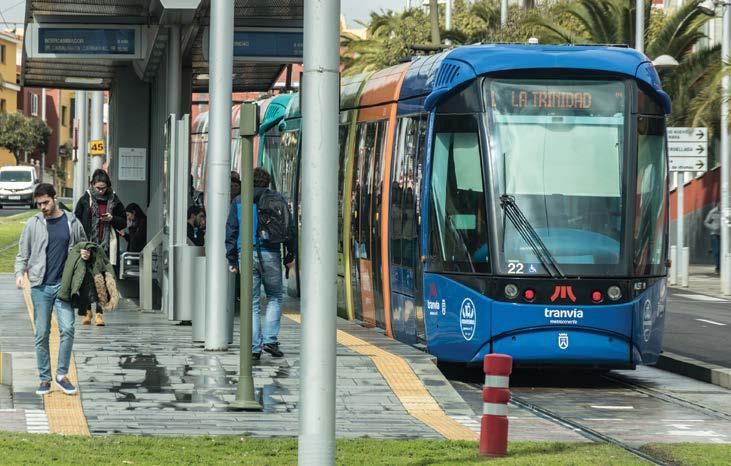
The single 18km (11-mile) line forms a ‘V’ that connects northern suburbs of the city with the northern edge of the city centre. It is operated as a regular service connecting Estadio Nueva Condomina to the Universidad de Murcia, with a shuttle spur from Terra Natura to the Universidad Católica de San Antonio. There are 28 stops in total, 24 for the regular service and four for the shuttle. The fleet is 11 former Madrid Alstom Citadis 302s.
Jaen
Jaen (population 113 500) in Andalusia saw a 4.7km (2.9-mile) street tramway built in 2009-11, with five former Madrid Alstom Citadis 302 trams serving ten stops. A limited free service was inaugurated in May 2011, but after just two weeks a dispute between the city and the Andalusian regional government about the operating subsidy saw the tramway mothballed.
In December 2021, it was announced that EUR 4.6m in EU grants would finance the final contracts to get the tram system running again this year.
Palma de Mallorca purchased six tramtrains from Vossloh in 2010-11 intended for use on a rebuilt line between Manacor and Arta (30km/19 miles). The rebuild never happened, and the cars have been stored after brief use on express workings between Palma and Inca. They are intended to be used between Palma and La Pobla.
The foundation stone for the new EUR185m airport link was laid on
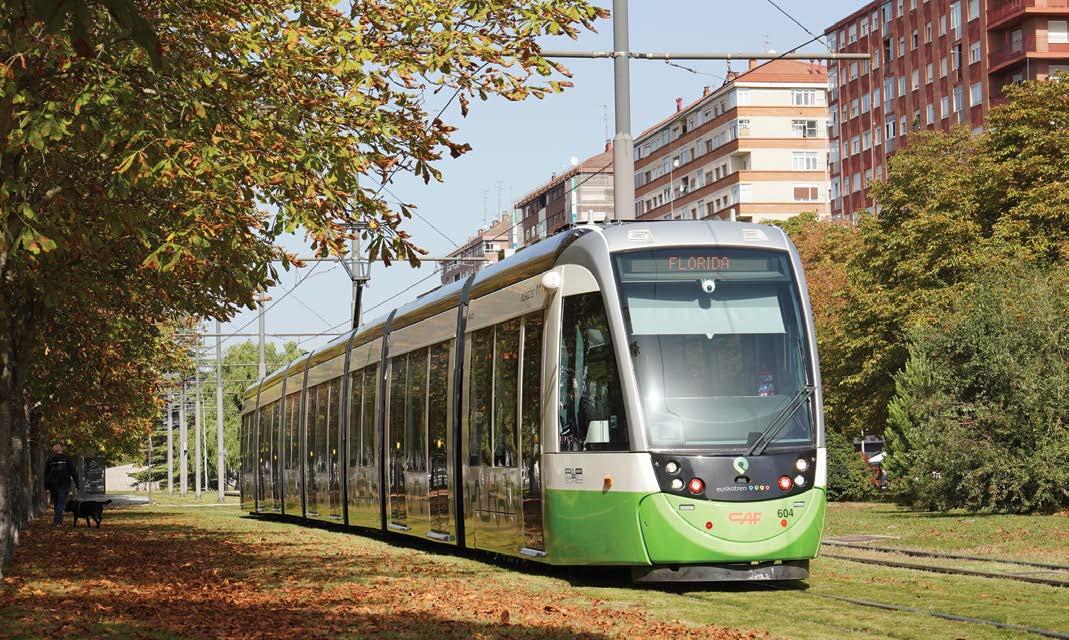
Citadis 302 car22 en route to La Trinidad,
10 November 2022. The first phase will link Placa d’Espanya in the centre of the capital with Son Sant Joan airport (10.8km/6.7 miles) with 16 stops, via Lou Levant. It will feature elevated sections, and have a ten minute interval service. It will open in 2028, and stages 2 and 3 will take the line to Son Espases Hospital and Palma Bay.
Since then, the EUR28.9m construction contract for the 1.4km (0.9-mile) extension of the metre-gauge line M1 from UIB Estació (main university campus) to Parc Bit has been let.
With a population of just 14 000, Sóller on Mallorca is one of the smallest European towns with a tramway. However, significant investment continues to be made in this top tourist attraction.
The Tranvía de Sóller opened in 1913 as an extension of the Ferrocaril de Sóller from Sóller town to the Port. It begins outside Sóller railway station passing between pavement cafes in the town square and running past citrus groves to the port. It is 4.9km (three miles) in length with 17 simple, low platform stops, and three passing loops for peak season services. The three original four-wheel saloon trams and open trailers were supplemented in the 1990s by the purchase of six Lisbon four-wheel cars with bogie trailers built locally.
Track renewal was completed in December 2013, and the fleet virtually rebuilt. Two ex-Porto trams from La Coruña have recently been acquired.
At the end of 2022, the Catalonian government declared its support for the planned Cambrils – Vila Seca tramline, with seven trams. The 14.6 km (nine-mile) standard-gauge line will follow the course of an abandoned section of railway, without any main line connection.
The project became popular when the railway line between Valencia and Tarragona along the coast was rerouted further north in January 2020. Local protests revived plans for a tram-train if EUR550m of European funds could be sourced for a 46km (29-mile) network with 34 stops between the cities of Tarragona, Cambrils and Reus, branded as TramCamp.
The first section is between Cambrils Horta de Santa María and Port Aventura/ Salou (old railway) with new sections to Cambrils railway station and from Port Aventura to Vila-Seca.
Further phases would reach the urban area of Tarragona and via two different routes to nearby Reus (106 000 inhabitants).
Plauen’s tramway heritage stretches back 130 years, although little has changed in the past four decades.
Andrew Thompson visits a system that has consistently maintained a high-quality transport offering throughout.

Plauen is one of the smaller cities in southeastern Germany to feature a tram network. With a population of roughly 65 000, the principal town in Saxony’s hilly Vogtland region has a metre gauge system that was inaugurated in 1894 and currently has a size of 16.4km (10.2 miles). The last two extensions date back to 1966 and 1983 respectively, so for the past four decades things have remained fairly static on the infrastructure front, but nevertheless the city has consistently maintained a high quality public transportation. Unlike some other cities in eastern Germany, Plauen’s population has remained largely stable since the fall of the Berlin Wall in 1989, ensuring steady ridership for the trams and buses operated by
All photos taken by Andrew Thompson on 25 August 2023.
the municipal company Plauener Strassenbahn (PSB).
While PSB’s corporate colours are nominally yellow and black, it is actually one of the few operators in Germany not to emphasise a standard livery for its trams, instead preferring to fit each vehicle with advertising vinyls. By contrast, the four attractive and truly diverse historic trams in the PSB fleet represent the tradition of the city’s 130 years of light rail heritage. While the oldest preserved unit is the open-balconied motor car 21 from 1905, its 1920s successor is the two-axle motor car 51 from 1928 with enclosed cabs. Both of these preserved streetcars feature a traditional green livery with white highlighting. Later, the Lowa and
Gotha cars introduced during the post-war socialist era simply sported a cream-coloured scheme.
From this lot, the Gotha sister vehicles 78 and 79 of 1966 vintage have been retained and regularly operate nostalgic rides. A specialty is actually 78, which is marketed as ‘Bier-Elektrische’ and runs as a rolling pub. After withdrawal in 1990 the four-wheeled car was retrofitted with six tables that comfortably accommodate up to 18 people for sightseeing trips around Plauen.
Articulated trams were first introduced in 1976, when the Czech builder Tatra delivered the newly developed and robust KT4D. Numbered 201-240, the series delivery continued until 1988. Fifteen KT4D remain in service today, having later been retrofitted with chopper control.
ABOVE: Passing between historic residential buildings on one side and an old industrial estate on the other, Bombardier car 309 is seen on its reserved right of way while running inbound on the Preisselpöhl branch shortly before Schlachthofstrasse.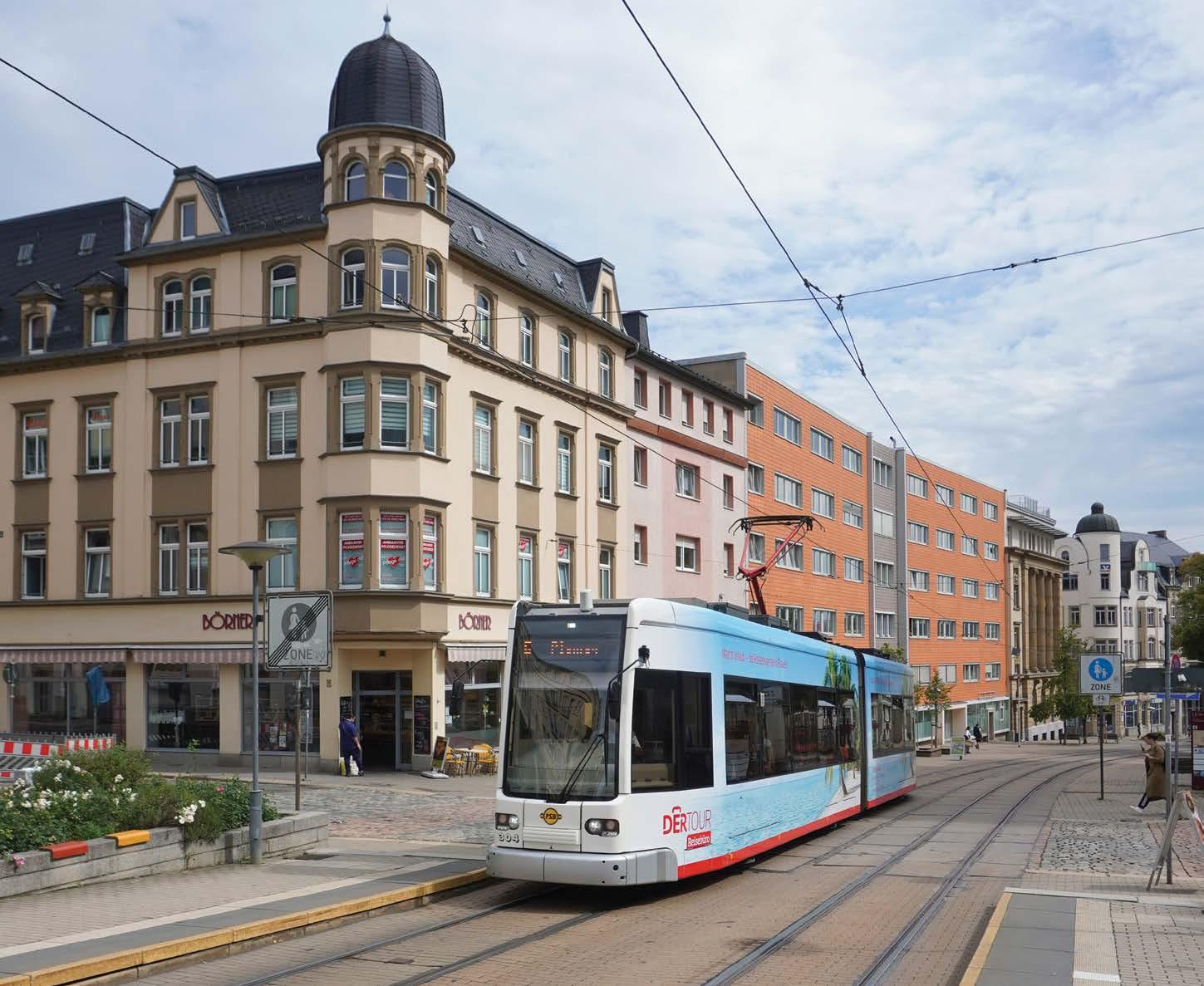

Only single-ended LRVs are used in regular service. The fleet includes:
15 Tatra KT4D
Nine Bombardier NGT6DE
Four preserved historic cars with one historic trailer
Three works vehicles
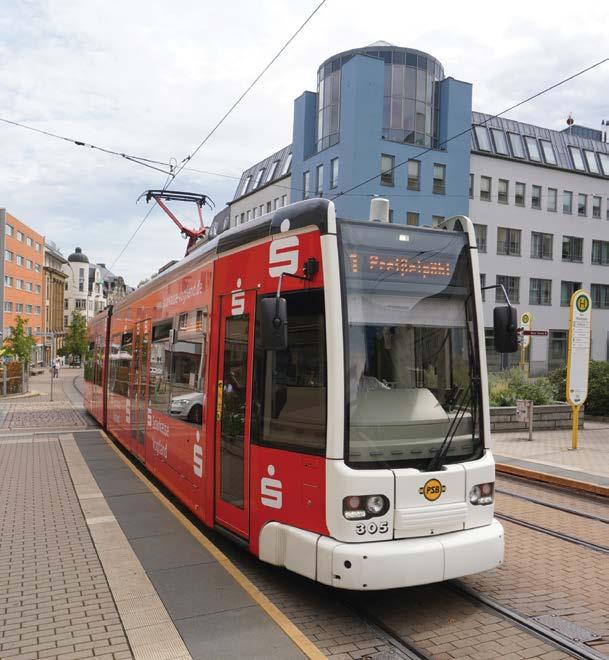
Another step-change in service quality occurred in 2013, when the first low-floor trams were introduced in Plauen. Initially, two Bombardier type NGT6DE were launched. Another four followed in 2014 and finally the full series of nine was completed by 2018. Built in Bautzen, NGT6DE are also in use at the other east German networks in Halle and Dessau.
All of Plauen’s modern trams are single-ended, as the city’s six different lines have turning loops at each terminus. With a length of 4.8km (three miles) line 1 (Neundorf –Preisselpöhl) is the shortest, while line 6 (Plamag – Reusa) is the longest at 7.6km (4.7 miles). Lines 2 and 3 cover the most recent extension of the network, with the Vogtlandklinikum – Waldfrieden section in the southeast of the city. This branch mainly serves the housing estate at Chrieschwitz, before terminating at a loop in the woods.
The central junction and main interchange of Plauen’s star-shaped light rail system is the confusingly named calling point Tunnel near the Old Town and the main pedestrianised shopping street. While it is attractively situated for tramway photography and a nice place to watch the world go by, it is not located near a tunnel and indeed the entire Plauen tram network includes no such civil engineering structure, though plenty of formidable gradients.
Other distinctive transport features of Plauen are the two standard gauge railway routes that pass through the city with each having very different features. While the electrified Dresden – Chemnitz – Hof main line is threaded through the northern districts of the city atop the hills and serves the modern terminal Plauen Oberer Bahnhof (upper station), the simple calling point Plauen Mitte and the smaller terminal Plauen Unterer


“all of Plauen’s modern trams are single-ended, as the city’s six different lines have turning loops at each terminus.”
Bahnhof are both located down in the valley on the non-electrified, single track Elstertalbahn (Gera –Weischlitz) along the namesake River Elster. While both Plauen Oberer Bahnhof and Plauen Mitte are directly connected to the tram network, and Oberer Bahnhof also serves as the northwestern terminus of tram line 4, Plauen Unterer Bahnhof is next to the city’s only tram depot, but about 750m from the nearest stop, Hofer Strasse.
Opened: 1894
length: 16.4km (10.2 miles)
l ines: 6
Depots: 1
approx. weekday hours: 03.00 - 21.00
l ine frequency: 15 mins (peak), 20-30 mins (off-peak and weekends)
Gauge: 1000mm
Power: 600V dc, overhead supply
c ity network/operator: Plauener Strassenbahn GmbH
www.strassenbahn-plauen.de/ c ivic information: www.plauen.de/


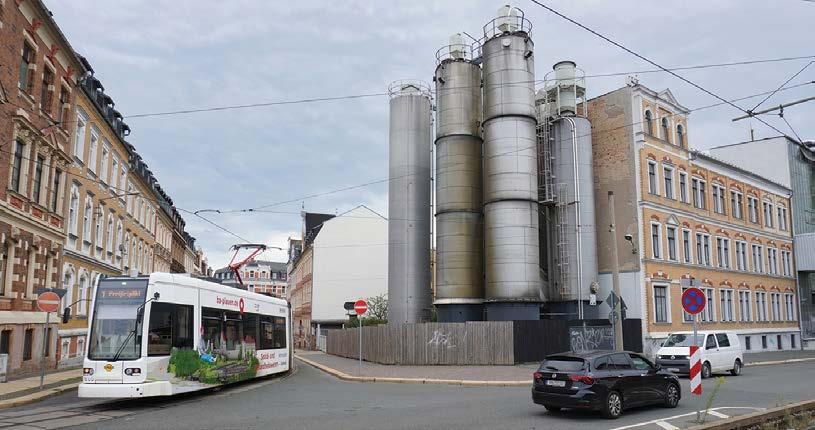
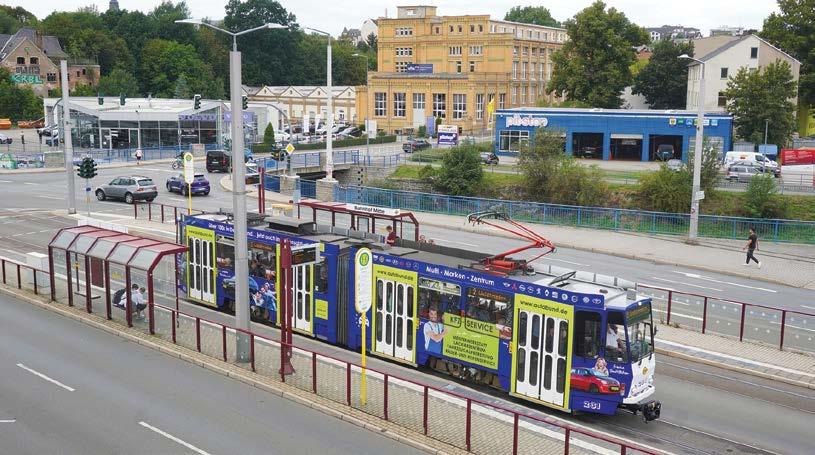
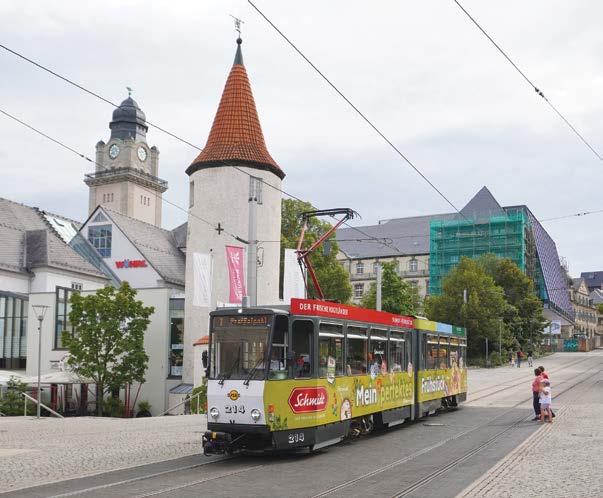
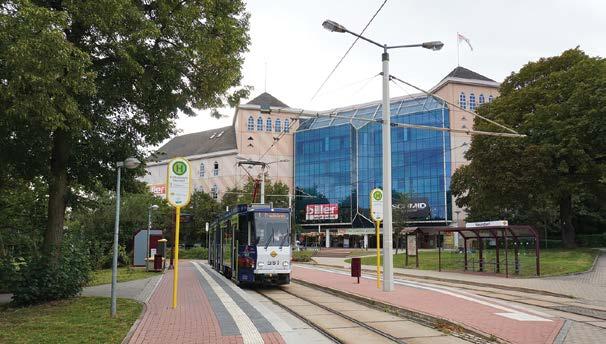
LEFT: The Preisselpöhl branch is probably the most distinctive and unique feature of the Plauen tramway, as it features atmospheric old factory buildings which frame the tracks and set the scene. Here, 309 passes installations from the sprawling cable works, while running outbound to Preisselpöhl with a line 1 service.
LEFT: The articulated Tatra high-floor car 231 calls at Bahnhof Mitte, while running with an outbound line 2 service. At this interchange there are ideal connections between the tram system and regional trains. This view is from the elevated station platform.
that were previously deployed for coal mining. Conveniently, the park railway is served by tram lines 1 and 3 along the western branch to Neundorf, with Dittrichplatz being the tram stop located nearest the park railway. Generally, the western Neundorf branch of lines 1 and 3 and the northern Preisselpröhl branch of lines 1 and 2 are the most scenic and interesting, being framed by historic buildings and attractive architecture from the late 19th and early 20th Centuries.
Although Plauen was the target of 14 separate Allied bombing raids between September 1944 and April 1945, this campaign was focused on the railway yard and industry. As a result, various historic residential districts from the city’s spread out footprint were spared and remain well preserved, including the most important landmarks in the Old Town.
All of this architectural heritage today presents an attractive backdrop to the tramway and gives this small-scale operation a charming vibe. Without exaggeration, Plauen’s tram system is one of the most pleasant in all of Germany to visit.
The other noteworthy transportation attraction is the Parkeisenbahn Syratal in the west of the city. Running on a ‘figure of eight circuit’ that is about 1.1km (0.7 miles) long, this 600mm gauge park railway dates back to 1959 and originally was built as one of the typically socialist ‘Pioneer Railways’, intended to provide technical vocational training about railway technology and signalling to children and teenagers during the era of the German Democratic Republic (GDR). Today, the railway remains a popular family attraction and draws about 35 000 annual visitors. It has the distinction of being the only electrified park railway in all of Germany, drawing the unusual current of 220V dc from overhead catenary. Motive power is provided by modified locomotives
Historically remarkable is that the network was electrified from the onset in 1894 and thus gained from various technical innovations at that time. In the early 20th Century Plauen was indeed at its peak in terms of population and industrial output, with 128 000 residents in 1912 and numerous textile or machine-building factories providing mass employment and thus also contributing to the rapid development of the light rail network. Some more additions were made after World War One in the early 1920s, while after World War Two, the focus was on reconstruction and eventually double-tracking all lines in the 1950s and early 1960s.
Today, Plauen’s tramway is used by more than seven million passengers annually with funding support coming both from the local city council and the regional transit authority Verkehrsverbund Vogtland.
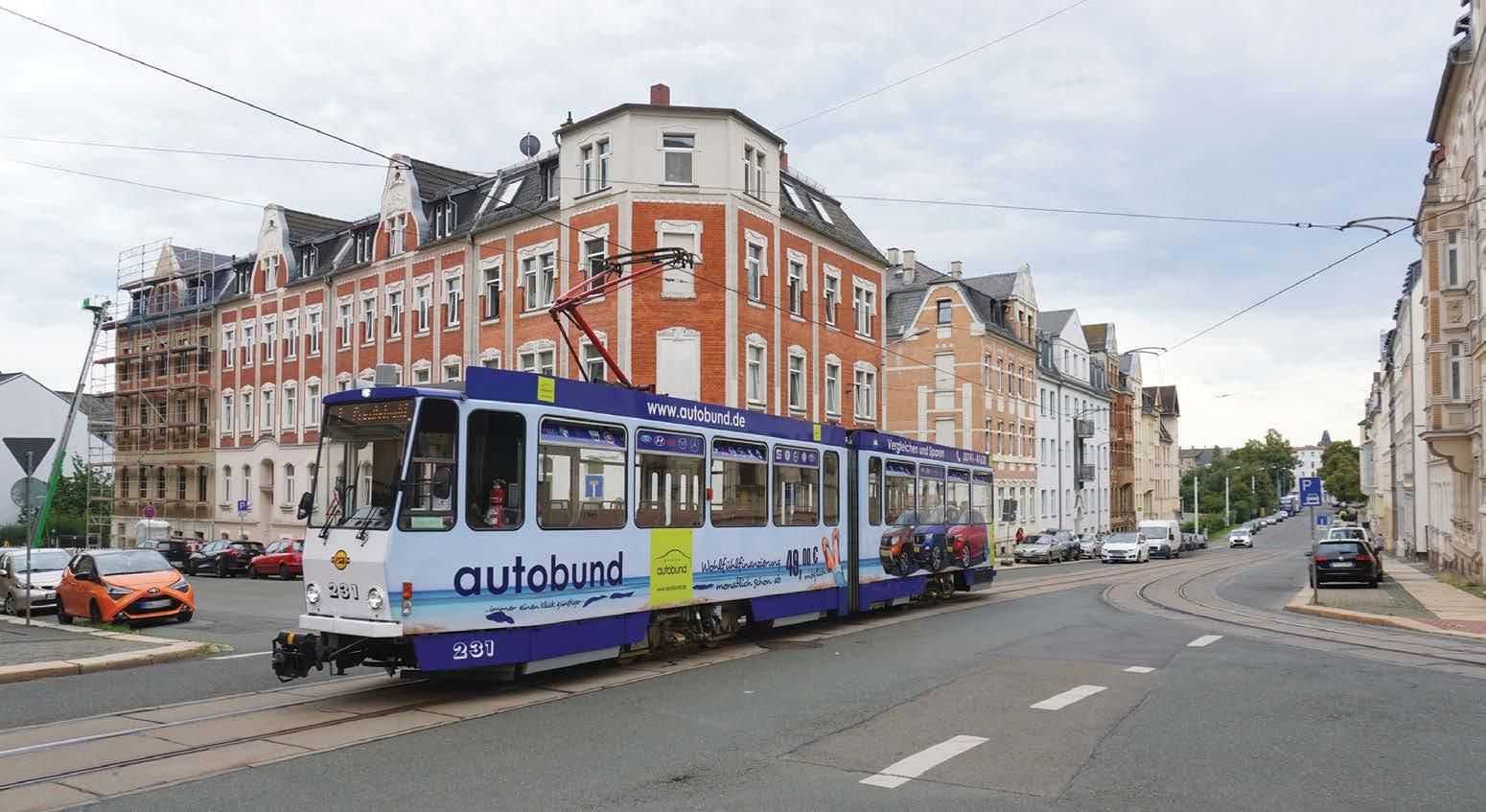
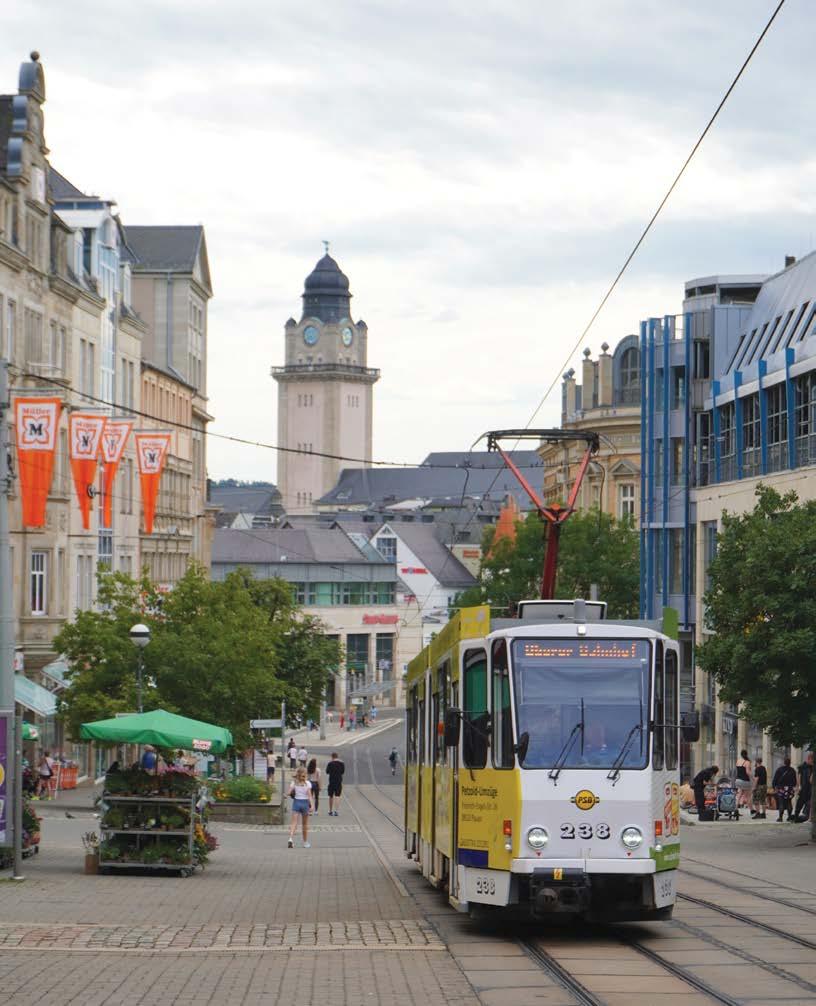
“the architectural heritage today presents an attractive backdrop and gives this small-scale operation a charming vibe.”
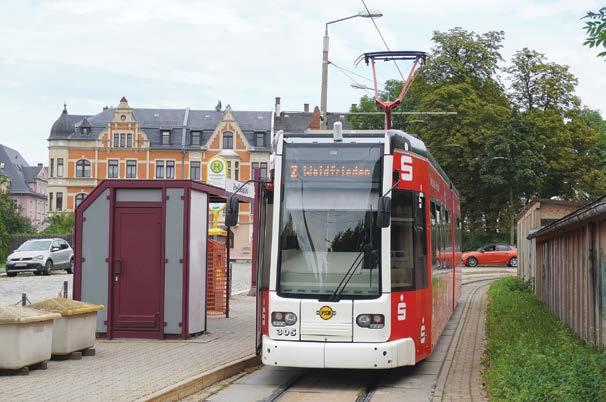
local travel: An adult single ride costs EUR1.70, while the day-ticket is priced at EUR4.50. Naturally, the popular Deutschlandticket rover is valid and the most effective way to combine travel in Plauen, regional transport plus any visit to other nearby tram cities such as Zwickau, Chemnitz, Gera, Jena or the regional hubs of Dresden and Leipzig
What is there to see? It is possible to visit Plauen as a day trip from Dresden or Leipzig, with the quickest journey time from Leipzig being 1hr 57 min (with a change in Werdau) or 2hr 17 min from Dresden, with no required changes. No long distance IC, EC or ICE services call at Plauen and only regional trains pass on the two different main line railway routes through the city. Because Plauen is an attractive destination in its own right and has a very pretty Old Town, it is worth considering spending at least one night there, not least because the cost of accommodation is much lower than in the aforementioned cities. The Plauen tramway is decidedly photogenic, quaint and charming, offering typical small-city appeal as a contrast to other systems in larger conurbations.
ZF Services has secured its first tram bogie engineering development project with one of the UK’s major tram operators, which is being led by a non-ZF product line engineering team based in Nottingham.
The non-ZF product portfolio follows the below protocol for units received at the Non-ZF Centre of Competence, Nottingham.
• The team undertakes a missing and damaged report of the bogie.
• It then records tolerances, fits, backlash and component conditions.
• A Bill of Materials is then generated and validated.
• Initial part drawings and specifications can then be created.
• ZF produces overhaul manuals and build sheets.
• It defines mandatory (100%) replacement parts.
• ZF part numbers are generated.
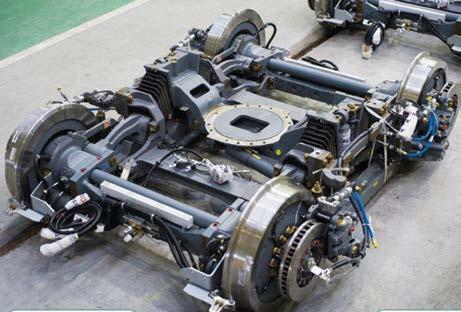
• This includes the creation of models and drawings.
• Modelling to ZF FEZ standard.
• The development of risk assessments.
All reverse-engineered parts are designed by ZF Services UK’s Centre Of Competence and maintained to ZF Group standards, with stringent quality checks applied throughout the process.
If you work in the Industrial Services field, whether that’s in the Rail, Marine or Off-Highway sectors, ZF Aftermarket has you covered. The ZF name stands for integrity, performance, and engineering excellence. In an increasingly competitive landscape where downtime can cost you a contract, we’ve got the vision and expertise to help your business get ahead and stay ahead.
When we say we’ve got you covered – we mean that literally. We provide the highest quality components and systems, designed, manufactured and tested by ZF to offer maximum lifetime performance, safety and efficiency.
At our UK-based engineering competence centre, we’ve got the space, technology and bespoke equipment to accommodate all your repair and service requirements.
Our capabilities span the entire range of drivetrain technologies. From mechanical and powershift, to CVT and hydrostatic, we’ve got the capacity to handle even the largest systems.. For

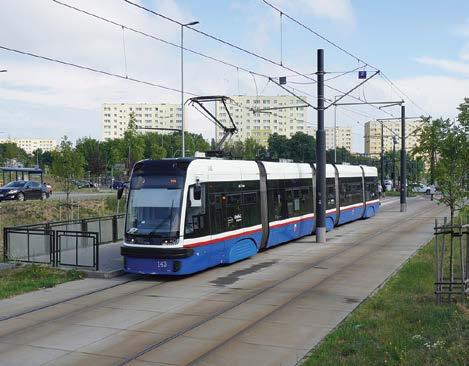
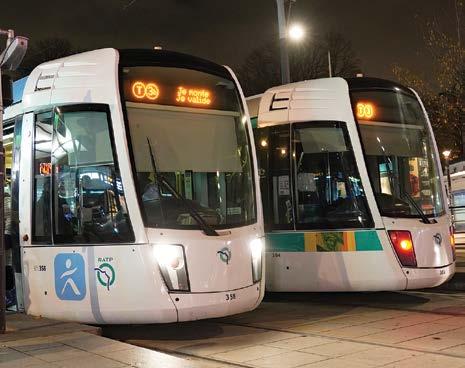
New Chairman Stephen Edwards explains to Howard Johnston how the industry’s authoritative voice is pushing for more new city systems.
After four extensions, the Polish city of Bydgoszcz is not done with modernising its tramway, and has concrete plans for building new lines in the coming years.
It opened as Paris T3 in 2006 and is split into T3a and T3b; Neil Pulling explores the tramway which is closest to the centre of the French capital.
MENDOZA. A new light rail link to the airport is planned to be built by 2027. Siemens is supplying 33 SD100 high-floor cars to join the fleet of 11 U2 and nine SD100 s. BS
MELBOURNE . Lines in Victoria Street and Swanston Street are being re-aligned between February and June. The Franklin Street signal cabin and toilets, built in 1928 and disused since 1991, could become a coffee shop P. Nicholson
SYDNEY. The city’s tram system carried 37.7m passengers in 2023, a 47% increase on 2022.
Transdev Australia
GMUNDEN. The 1894 depot building has re-opened to accommodate the line’s museum trams. tramwayforum.at
WIEN (Vienna). Alstom Flexity 374 was delivered to the central workshops on 20 March. Units 372/373 had arrived in late February. tramwayforum.at
WIEN – BADEN (WLB). Alstom has delivered low-floor articulated trams 525-30. tramwayforum.at
ANTWERPEN (Antwerp). The number of double-ended CAF trams on order has been increased from 18 to 20. BS BRUXELLES (Brussels). Lines 9 and 19 are to return to their normal routes from 6 July on completion of infrastructure work. Articulated PCC 7824 has been withdrawn; 7948/61 have been scrapped. T-2000
CHARLEROI. The opening of a new esplanade in front of the railway station did not involve any further alterations to the tramway. T-2000
LIEGE. The Walloon government has approved extending the under-construction tramway by an additional 2.6km (1.6 miles) in order to reach Jemeppe (Seraing). The now-EUR355m project should open in 2025. T-2000
CURITIBA. Studies into the construction of a 22.8km (14-mile) light rail line from Centro Civico to Afonso Peña International Airport are underway. It is proposed that the last 3.2km (two miles) to the airport will elevated, that the cityend terminus will be in a subway, and that it would replace bus rapid transit along Avenida Marechal Floriano Peixoto. The go-ahead could be given in 2025. RGI
TORONTO, ON. Work on the 2km (1.2-mile) Queens Quay East tramway started with the Notice of Commencement on 14 March. Operator Metrolinx has chosen Siemens Mobility as its track and signal maintenance contractor for the Central Region of Toronto’s passenger railway network. Siemens already maintains the West Region and the Metrolinx Network Operations Center.
Loose bolts on the power rail caused the July 2023 Scarborough RT Line derailment, an independent investigation has revealed. This incident caused the line’s early closure.
S. Munro, D. Drum
VANCOUVER, BC. Single-track working and longer headways on the Expo Line between Braid and Lougheed Town Centre started on 25 February. This method is to continue for two years to enable connections to the new operations and maintenance centre to be installed. The first five-car Alstom Mark V trains are expected to enter service in late 2024.
Tunnel boring on the 5.7km (3.5-mile) Broadway Subway Millennium Line was to be completed this spring. It is due to open in 2025. I. Fisher
MACAU. Mitsubishi Heavy Industries has won the contract to supply rolling stock to the 7.7km (4.8-mile) underground East Line of Macau’s Light Rapid Transit system. The operating contract has gone to the Hou Chon consortium. Construction started in October 2023; passenger service should start by May 2029. IRJ
CZECH REPUBLIC
BRNO. Škoda is to deliver an additional 20 ForCity Smart 45T double-ended trams by the end of 2026. dopravacek.eu OSTRAVA. A tram parade from Nádražní t ř ída in P ř ívoz on 7 September will mark 130 years of tramway operation. Martinov workshops will host the Ostrava Transport Workers’ Day on 14 September. M. J. Russell PRAHA (Prague). Museum cars will run on Lines 41 and 42 at weekends from the end of March until November. Fares start from CZK100 (EUR3.95). DPP
FRANCE
LE MANS. Alstom has won a EUR57m contract to extend 34 32m trams to 44m using new centre sections. lineoz.net LYON. The public transport operating contract will switch
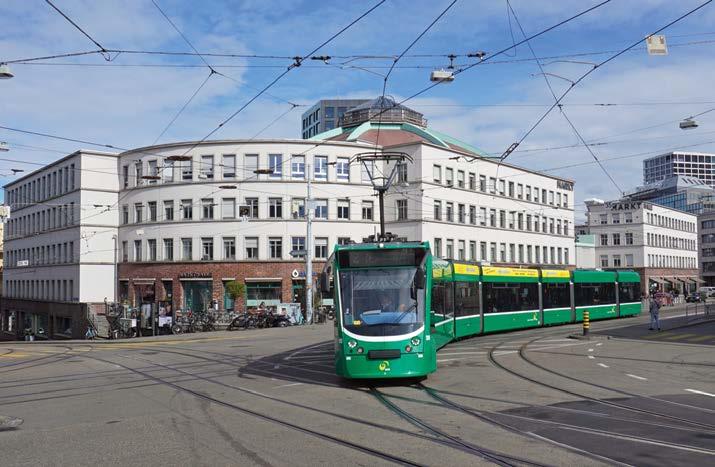
from Keolis to RATP Dev in January 2025. The planned EUR290m, 11.3km (seven-mile) Vaulx-en-Velin – La Soie orbital tramline T9 should open in 2026. Also due to be completed in 2026 is the 8km (five-mile) Gare de Vénissieux – Gerland (Halle Tony Garnier) T10. Alstom is delivering 35 seven-section 44m Citadis trams. lineoz.net
MARSEILLE. Services on lines T2 and T3 between Cours Belsunce and Euroméditerranée are expected to return to normal in April. They are currently curtailed following a fire in an underground parking garage in January. BS
MONTPELLIER. Cheap tickets for visitors have been announced: a four-hour ticket costs EUR3 and a 24-hour ticket EUR4.30. Travel for local residents is free. BS NANTES. Driver training with new Alstom Citadis 405 started on 11 March. lineoz.net PARIS. The EUR165m Porte d’Asnières – Porte Dauphine Line T3b extension is to open on 5 April. A 15-minute service on the 3.2km (two-mile) line runs 05.30-00.15.
Île-de-France Mobilités has ordered 103 more MF19 métro trains from Alstom in a deal worth EUR800m. They will be used on lines 8, 12 and 13 from 2027.
The boring machines making new tunnels for the 29km (18-mile) Grand Paris Express Line completed their work in early March. Passenger services could start in 2026. urbanrail.net RENNES. Siemens returned the first of 25 Line B métro trains on 22 March. They had gone back to the factory for modifications. maville.com
BREMEN. Siemens continues to deliver new Avenio trams.
Five GT8Ns – 3007/24/55/62/64 –remain in service. BS DARMSTADT. Stadler is still delivering Tina ST15s but there have been teething problems. At one stage, the whole fleet had to be withdrawn for several days. The SB9 low-floor trailers will now be scrapped.
DRESDEN. Route 26 between Hbf, Bhf Mitte and Bhf Neustadt was re-activated for a day (24 February) while Hauptbahnhof was closed for re-signalling. DS
DUISBURG. The latest of 15 Alstom low-floor GT8NDs to enter service is 2019. The new Windhoff track scrubber has been numbered 3100.
DÜSSELDORF. Further delays mean that Siemens will not deliver the two pre-series HFx Stadtbahn cars until early 2026. They are more than two years late.
Car 4337 was the 35th Alstom HF6 to join the operational fleet. Vinyls depicting the 24 nations that have qualified for the Euro 2024 football tournament will be applied to 24 individual trams. BS ERFURT. Planning of the new Line 9 (Grubenstrasse – Leipziger Platz – Hbf) can start thanks to a city council grant of EUR3.4m. It is hoped the EUR87m route could open by 2030. BS
ERLANGEN. A referendum on plans for a EUR700m light rail system is scheduled for 9 June. DS
FRANKFURT AM MAIN. The disposal of R type vehicles has had to be postponed because only 11 out of 23 new T type trams have so far been delivered. Alstom was still testing 401, the first 40m T type , at its Barcelona factory in February. BS
HALBERSTADT. An emergency timetable was introduced from 25 March due to high levels of staff sickness. Line 1 is cancelled, and Line 2 now runs every 30 minutes. DS
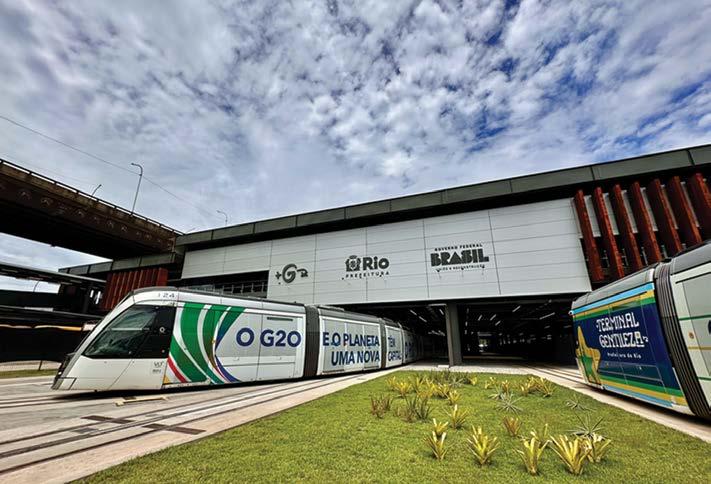
KÖLN (Cologne). Bombardier K4000s will receive life-extending overhauls because Alstom is not able to deliver 62 new low-floor trams until 2026, two years late.
Mülheimer Brücke was to close for seven months from 2 April. As a result, Line 13 is now Sülzgürtel – Slabystrasse and Line 18 is Bonn – Slabystrasse and Wiener Platz – Thielenbruch. Line 15 is withdrawn and Line 3 is extended to Thielenbruch. BS, DS
MAGDEBURG. The last T6 set, 1281+2144, was to be withdrawn on 31 March. The first new Alstom Flexity trams are due in September.
MÜNCHEN (Munich). The Bavarian state government stepped in to stop the city’s plans to build part of the Nordtangente network through the Englisher Garten on 13 March. Political opposition from the CSU and the Free Voters centred around the fact that the wire-free route would be 35% wider than the existing bus route. DS
SCHWERIN. A joint venture with DHL to carry parcels by tram has ceased. It proved uneconomical and was prone to vandalism. DS
STUTTGART. A rear-end collision on Inselstrasse in Wangen on 23 February injured 15 people and severely damaged DT8 3307 and 4198. Service resumed that afternoon.
Stuttgarter-Nachrichten
WOLTERSDORF. The first Modertrans tram was to have arrived from Poznan on 8 March, but has been delayed. It is hoped to receive car 41 by 19 May, the tramway’s 111th anniversary. BS
WUPPERTAL. The Schwebebahn’s Vohwinkel depot and workshop, which date from 1901, are to be replaced by new facilities on the same site. BS
DELHI. Commuter rail service started on 17km (10.5 miles) of the
rapidX Duhai – Modinagar North line on 6 March. urbanrail.net
TEHRAN. Metro Line 4 was extended from Allameh Ja’fari to Ayatollah Kashani on 16 March. urbanrail.net
IRELAND
DUBLIN. Red Line services were affected over Easter by track renewals outside Heuston station. Eastbound replacement buses only served Heuston and Blackhorse; intermediate stops were served by westbound buses.
ISRAEL
HAIFA – NAZARETH. The 25-year contract to build and operate the 41km (25-mile) LRT line has been awarded to the Group Three consortium (comprising Alstom, Electra and Minrav). Services on the 1500V dc line should start in 2029; 30 Alstom LRVs are expected to carry 100 000 passengers/day, with a four-minute peak headway. RGI
ITALY
GENOVA. The 1200mm-gauge Principe – Granarolo funicular has ordered a new car from SVI at a cost of EUR3.5m. EB
NAPOLI. Hitachi Rail Italia has won a EUR200m contract for 22 39m trainsets for light metro Line 6. This replaces the Mostra – Mergellina tram subway, which closed in 2015. RGI
ROMA. Line 3 was re-introduced between Porta Maggiore and Trastevere on 26 February. BS
JAPAN
TOKYO. The Metropolitan Government has announced the 6.1km (3.8 miles) Waterfront Area Subway. This is to link the city centre with Ariake Tokyo Big Sight by 2040. A trial 3km (1.9mile) section of the Marunouchi
line metro will be equipped with a new 5G-based train control system by August 2024.
Y. Hanafusa, IRJ
LUXEMBURG
LUXEMBOURG. The new tramline should carry its first passengers between Lycée de Bonnevoie and Stade de Luxembourg on 7 July. Completion of the whole 16km (ten-mile) system is planned for early 2025. R. Birgen
MONTERREY. CRRC Nanjing
Puzhen delivered the first of 13 six-car monorail trains for Lines 4 and 6 in March. RGI
AMSTERDAM. The extension of Line 25 to Uithoorn is to open on 5 July. The withdrawal of 57 and 69 means there are just 19 BN metro sets available for traffic. A feasibility study of increasing the tramway voltage from 600V dc to 750V dc has shown that the EUR3.8m cost would be recovered in six years. OR DEN HAAG (The Hague). A shortage of drivers meant that 20-minute headways were introduced from 11 March on several lines. Line 19’s extension to the technical university will now not open until the second half of 2025. OR
LAGOS. President Bola Ahmed Tinubu opened the first 26.3km (16 miles) of the Red Line metro on 29 February. The initial Agbado – Oyingbom service will use two locomotive-hauled trains, pending delivery of EMUs from China. RGI
OSLO. Three of 41 new CAF trams have had to be returned to Spain in order to rectify accident damage.
The arrangement where Line 13 shares the metals of the Metro system between Øraker to Bekkestua is due to come to an end on 1 July. BS
TRONDHEIM. The Grakallbanan tramway’s centenary will be marked on 19 June and 18 July (with museum tram operation) and 1 September (with a special ceremony). BS
BYDGOSZCZ. A PLN131.3m (EUR30.4m) contract has been signed with Trakcja System for the construction of 550m of tramway along Ul. Torunska. RGI ŁÓD Ź . The city of Zgierz has applied for European Urban Initiative funding that would
allow the track of the former interurban tramline to be restored. TP
WARSZAWA (Warsaw).
The 1.8km (1.1-mile) tramway extension from PKP Wola (Szpital Wolski) to Reduta Wolska opened on 5 March. It is used by Lines 10, 11, 13, 26 and 27. urbanrail.net
LISBOA (Lisbon). A new funicular that links Rua dos Lagares to Largo da Graça, in Graça, opened on 12 March. Equipped by Gangloff, it is operated by Lisboa Mobility and Parking Company. The single car carries 14 passengers and a ten minute headway is possible. A return ticket costs EUR4.10.
P.R. Costa SINTRA. The 120th anniversary of the metre-gauge tourist tramway was marked over 22-24 March. Original trams built by J.G. Brill are still at work on the 10km (six-mile) line. P. R. Costa
CHELYABINSK. UKVZ delivered prototype 71-639 three-section low-floor articulated tram 0639 on 26 February. transphoto.org
KURSK. PKTS 71-911EM Lyonok low-floor bogie trams 7001-8 were in service at the beginning of March; 14 more are expected next year. transphoto.org
NOVOTROISK. Trams 0205/ 43-46 have been joined by another five 71-911EMs; three more are expected. transphoto.org
PYATIGORSK. A Uraltransmash 71-411 became the city’s first new tram in 27 years when it was delivered on 7 March. transphoto.org
SARATOV. PK Transportnye Sistemy delivered the first of five 71-923M Bogatyr articulated low-floor trams on 29 February. TEMZ in Tver is building a series of low-floor bogie trams for the city. transphoto.org
TULA. PKTS delivered 71-911EM Lionet 100% low-floor bogie trams 128-32, at a cost of RUB761m (EUR7.7m). Cars 111-27 were delivered in 2023. RGI
ULAN-UDE. PKTS 71-923M Bogatyr trams 17 and 18 entered service on 12 March. transphoto.org
YEKATERINBURG. The new depot at Verkhniaya Pyshma interurban opened on 23 February. Trams no longer use the Yekaterinburg city depot. transphoto.org
SINGAPORE
MASS TRANSIT RAILWAY. The Thomson East Coast line’s 10.8km (6.7-mile) extension from Gardens By The Bay to
Bayshore is due to open on 23 June. urbanrail.net
BRATISLAVA . Škoda is to deliver ten more 30T3 trams in 2026 at a cost of EUR23.9m. Prototype Tatra K2S 7101 has been sold to the Košice Children’s Heritage Railway. cs-dopravak
BILBO/DONOSTIA. The Spanish government is to transfer all Basque suburban rail services from RENFE to the regional government (Euzkadi) together with a EUR400m ‘dowry’. It is not yet known whether Euskotren (formerly Basque Railways) will be the operator.
RGI
MADRID. The Regional Government has announced that metro lines 6 and 8 are to be automated by 2030 to permit two-minute headways. UTM
STOCKHOLM. The last of the C14 T-bana sets, built by ASEA/ Hägglund in 1985-89, was withdrawn on 10 February. BS
BERN. Extensions to Kleinwabern and Ostermundigen are expected to open in 2027 and 2029 respectively. EA
BERN – SOLOTHURN (RBS). A 17th Worbla unit has been ordered from Stadler to replace RABe4/12 32, which suffered storm damage in 2023. It is due to be delivered in early 2026. TR
CHUR – AROSA (RhB). Buses started to replace some off-peak services from 11 March due to a shortage of train drivers. TR
GENÈVE (Geneva). The 38+10 cars ordered from Stadler are Tramlinks and due for delivery in 2025-2026. P. Hofmann
LIESTAL – WALDENBURG (BLT). The central section of the Waldenburgerbahn was closed for several hours on 19 March while a collision/derailment exercise was carried out. Withdrawn Basel BLT 264 was overturned to simulate an accident. DS
ZÜRICH. Commissioning of the first new Stadler car at the 1.3km (0.8-mile) Dolderbahn rack line started on 24 March. A second car is expected in August and a ‘normal’ timetable could resume in October. UTM
TAIPEI. The government has approved the TWD69.7bn (EUR2bn) plan to extend the Blue Line metro eastwards by 15.6km (ten miles) to Badu main line station in Keelung. RGI
BURSA. Metro line M1 was extended by 2km (1.2 miles) from Emek to Balat on 28 March. urbanrail.net İ ZMIT. The tramway was extended by 3km (1.9 miles) from Mehmet Ali Pasa to Sehir Hastanesi on 17 March. urbanrail.net
KHARKIV. Electric transport services were suspended on 22 March after Russian rockets knocked out the power supply. transphoto.org
AVIEMORE. Highlands & Islands Enterprise has said that it will be “months rather than weeks” before the Cairngorm funicular railway resumes services. It re-opened in January 2023 but closed again that August due to what have been described as ‘snagging issues’.
BLACKPOOL. Blackpool Transport froze subscription prices on seven-day and 30-day saver tickets before fare changes came into effect on 31 March. ‘Frozen’ prices remain available until the end of April.
BRIDGNORTH. The Shropshire town’s Cliff Railway started running again on 4 March for the first time since 2022. It’s taken 14 months and GBP500 000 (EUR583 000) to fix a neighbouring retaining wall.
DUDLEY. The restoration of Dudley’s historic Parkhead viaduct, a key part of West Midlands Metro’s Brierley Hill extension, is nearing completion. It was built in 1880 to replace a wooden structure from 1850, that took the Oxford, Worcester & Wolverhampton Railway over a canal. The original, Brunelian structure is said to be encased within the brickwork.
EALING. Operator Great Western Railway is trialling new fastcharging battery technology on the Greenford – West Ealing branch with Class 230 batteryelectric unit 230001. The unit was rebuilt from a London Underground D Stock train.
GOOLE. Production of London Underground’s new Piccadilly Line trains has started at Siemens Mobility’s new factory. The first bodyshell left Vienna on 6 March and arrived in Yorkshire the following week. The factory will build 79 out of 94 new trains.
INDUSTRY. Danny Vaughan, Metrolink Network Director at Transport for Greater Manchester, has joined the Light Rail Safety & Standards Board.
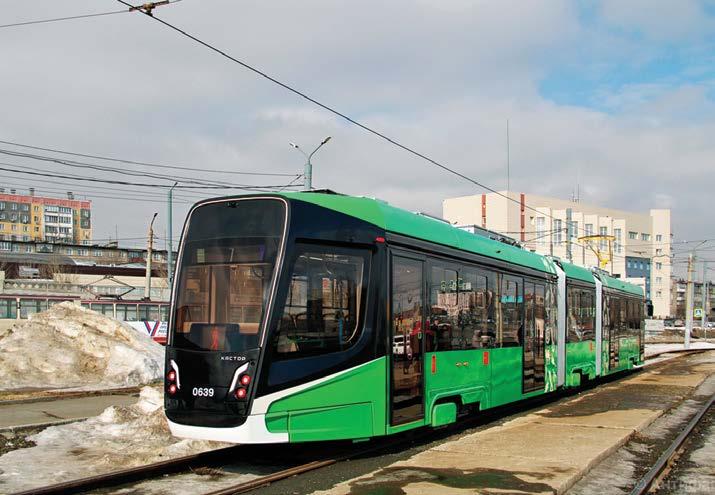
He replaces Bob Morris, former Chief Operating Officer for TfGM, who has retired.
LIVERPOOL. Liverpool City Region Combined Authority has appointed Jamie Ross as its first Director of Transport. Ross is to commission and deliver fully integrated, London-style public transport for the city.
LONDON. Transport for London has shortlisted four bidders for the contract to operate the Elizabeth line from 2025.
TfL has divided the Overground network into six lines: the Lioness Line, the Windrush Line, the Mildmay Lane, the Weaver Line, the Suffragette Line and the Liberty Line. It has ruled out regular Overground services to London Bridge station.
The introduction of 54 CAF B23 to the Docklands Light Railway has been delayed due to reliability concerns; they are unlikely to enter service until mid-2024.
A planned strike by London Tram engineers in March was called off after successful talks between TfL and the Unite union over the disparity in pay between London Trams and London Underground.
MANCHESTER. Fare evasion on Metrolink has fallen by a third as part of an ongoing crackdown by KeolisAmey Metrolink (KAM) staff, supported by the TravelSafe Partnership, since July 2023. Some 100 000 fare evaders have been fined, and 5000 people taken to court over unpaid fines. The penalty fare has been raised to GBP120 (EUR140).
NOTTINGHAM. Nottingham
Express Transit started its 20th anniversary celebrations on 9 March by offering a free gift to anyone who shared its ‘birthday’. NET also launched its year-long ‘20 acts of kindness’ campaign, which aims to give something back to the people of Nottingham.
SCOTLAND. The Scottish Government has ruled out extending the free fares for under-22s scheme to Edinburgh’s trams and Glasgow’s subway. Those under 22 can ride for free on Edinburgh’s buses.
STRATFORD. The refurbishment of the East London station is due to be completed this spring. Work has included building a new entrance next to the Jubilee Line and Docklands Light Railway platforms.
TYNE & WEAR. Services were suspended on the Metro for two weekends in March to allow the Prudhoe Street crossover to be replaced. This is the busiest junction on the metro and has cost GBP3.4m (EUR3.9m) to replace. It’s the last piece of the underground section to be renewed. It had to be completed before the start of major restoration works on the Tyne Bridge. The system celebrated 40 years since the final piece of the original network – Heworth to South Shields – opened on 24 March 1984. A cake was cut at South Shields station on 19 March and cupcakes handed to passengers.
WEST MIDLANDS. A 13.5% pay increase for West Midlands Metro drivers comes into effect from 1 April. WMM drivers’ pay has increased from GBP22 000 (EUR25 700) to GBP30 000 (EUR35 100) since June 2022.
AUSTIN, TX. The Austin Transit partnership has requested entry into the Federal Transit Administration’s ‘New Starts Program’. The legal dispute about bond funding for the planned light rail project is due to reach trial on 28-30 May. kxan.com
BALTIMORE, MD. The Maryland Transit Administration has received a USD213m (EUR197m) federal grant to
help renew its fleet of 52 light rail cars by 2030. Maryland will contribute a further USD90m (EUR83m) to the total USD450m (EUR416m) cost. J. May
BETHESDA – NEW CARROLLTON, MD. The opening of the Purple Line light rail is now postponed until winter 2027. Mass Transit BOSTON, MA. Track work on the Red Line was completed in February and eight speed restrictions removed. Meanwhile, track maintenance work means that Green Line services on Lines B, C and D beyond Copley were suspended 20 February8 March. The MBTA is considering whether battery-powered trains could increase services on the Fairmount line. R. Barrows DENVER, CO. RTD is to replace 8.5km (5.3 miles) of city centre light rail tracks at a cost of USD152m (EUR140m). Services on Lines D and H are diverted via Union Station from 26 May until September while Line L is suspended. J. May
KANSAS CITY, MO. The ground-breaking ceremony for the Riverfront Streetcar extension was held on 1 March. KC Streetcar NEW YORK, NY. MTA has suspended all new construction contracts until legal challenges seeking to block the congestion charging pricing are resolved. Congestion pricing was set to raise USD15bn (EUR13.8m) for transit projects. R. Barrows
Southeastern Pennsylvania Transportation Authority’s light rail lines 10, 11, 13, 15, 34, 36, 101 and 102 are now T1, T4, T3, G1, T2, T5, D1 and D2, in order to improve wayfinding. SEPTA believes that letters are easier to remember than numbers but, so far, destination blinds have not been changed.
With fewer people working from home, more trains will be added to rail schedules from late summer. SEPTA has selected STV to lead on the procurement of 200 new rapid transit cars for the Market – Frankford line. J. May
View to permit testing of the 23 new Stadler FLIRT trains. J. May
SAN JOSE, CA . Santa Clara Valley Transportation Authority has approved the planned USD437m (EUR404m) East Jose light rail extension from Alum Rock to Eastridge Transit Center. The 3.8km (2.4-mile) elevated line should be delivered in 1250 days.
UZBEKISTAN
J. May
the start of its 2024 operational season due to a fault with the electrical supply. The supply is to remain isolated until detailed investigations and repair work can take place. It is not yet known when trams will resume running. GDA Ń SK (PL). The body of Augsburg KSW number 510 has arrived at Nowy Port depot. It will be turned into a replica of Danzig trailer 399, built in 1944. BS
SKJOLDENAESHOLM (DK). Articulated tram 112, built by Strømmen in 1983, has arrived from Oslo. BS
PITTSBURGH, PA . Light rail service between Steel Plaza and Gateway stations are to be suspended for about seven weeks from 5 April as the first part of a USD150m (EUR139m) infrastructure rehabilitation programme. The Red Line will be closed between Overbrook and South Hills Junction 16 June31 August.
TOSHKENT. The Circle Line metro was extended from Quruvchilar by 3.5km (2.2 miles) on 11 March. It now makes an interchange with the Red Line at Qipchoq. The last of 24 Metrovagonmash four-car metro trains has entered service.
urbanrail.net
MUSEUM NEWS
J. May
ST LOUIS, MO. An order for 55 hybrid Siemens S200 LRVs was signed on 13 March. An on-board energy storage system will permit off-wire operation for up to 8km (five miles).
BERGEN (NO). The heritage tramway is to operate every Sunday from 14 April until 3 November. It’s also operating on Saturdays in July and August. Trams run from Bergen Technical Museum to Den Nationale Scene. BS
Worldwide items for inclusion should be sent to Michael Taplin at Flat 8, Roxan Villa, 33 Landguard Manor Rd, Shanklin, Isle of Wight PO37 7HZ, UK. Please fax: +44 (0)1983 862810 or e-mail miketap@mainspring.co.uk
UK and Ireland items: please e-mail uknews@lrta.org
J. May
SACRAMENTO, CA. An additional nine Siemens low-floor S700 LRVs have been ordered. This will bring the total order to 45. There is still an option for a further 31.
J. May
SAN FRANCISCO – SAN JOSE. Electrification has been extended from Redwood City to Mountain
CHRISTCHURCH (NZ). Christchurch bogie combination tram 24, built by Boon & Co in 1920, has joined the museum’s operational fleet after a 55-year restoration. However, 1918 Christchurch trailer 126, which was awaiting restoration, has been destroyed in an arson attack.
NZRO
CRICH (UK). The Tramway Museum Society has postponed
Acknowledgements are due to Blickpunkt Straßenbahn (BS), cs-dopravak, dopravacek.eu, DPP, Drehscheibe (DS), Eisenbahn
Amateur (EA), EB, International Railway Journal (IRJ), KC Streetcar, kxan.com, lineoz.net, Mass Transit, maville.com, NZRO, Railway Gazette International (RGI), Stuttgarter-Nachrichten, Today’s Railway (TR), Tram-2000 (T-2000), tramwayforum.at, transphoto. org, Transport Publiczny (TP), urbanrail.net and Urban Transport Magazine (UTM).

matt@mainspring.co.uk

Letters submitted by post should be clearly typed and preferably not handwritten. We reserve the right to edit contributions for publication.
I was very pleased to see Mike Russell’s article on the revived Santa Teresa tramway in the March issue [TAUT 1035].
I was in Rio de Janeiro in October 2015. At that time, although the tramway had reopened as far as Largo do Curvelo with a regular service, the operation was being treated as a trial and no fares were being charged. The new trams are very good replicas, but include modern features such as rubber suspension and, I suspect, chopper or similar traction equipment. The driver’s control panel is certainly very modern.
One thing that Mike did not mention is that, certainly in 2015, there were still issues with parked road vehicles. On the way down we were stopped for around ten minutes while a driver slowly finished whatever it was he was
The museum news piece in February’s TAUT featured the preservation of a tram from the former Mönchengladbach system. Car 26 was actually a D ũwag Grossraum bogie car from a series (25-30) placed in service in 1957.
If the car were really articulated it would have been tram 36 of a series of D ũwag sixaxle articulated cars (31-39) from 1958-59.
The German language source shows that 26, sold to Aachen when Mönchengladbach abandoned trams in 1969, later moved to Mainz, being withdrawn in 1988. Some of the articulated cars moved on to Aachen, Geneva or the Vestiche, and eventually Lille!
From 1957-61 I attended school at Queen's School in Mönchengladbach Rheindahlen. Whilst there I covered the system and that of Rheydt by tram or bicycle, and wrote an article for Modern Tramway
Nigel Eames,by e-mail
I would like to add to correspondence in regards to Waybeam, and address David Holt’s concerns (TAUT 1031 & 1036).
The precepts underlying the attitude of the Railway Inspectorate, and later His Majesty's Railway Inspectorate (HMRI) after it was transferred to the Health & Safety Executive (HSE), are to tell promoters and builders of railways and tramways of what is unsafe, but not what is safe. In other words, promoters are free to design new schemes incorporating new ideas, but these will be tested against those experienced over 180 years.
While in the Inspectorate I was responsible for assessing the requests for approval of all new works on railways and, in due course, tramways. To ensure that the UK was up to date with tramway construction, I asked
doing and eventually moved his ‘ute’ after much persuasion.
An item I discovered at the base of the aqueduct was this rubber-tyred tram body (pictured). It has all of the features of one of the original cars, and the amount of decay in the woodwork suggests that the body was genuine, elderly and almost certainly from an original tramcar. Details of the underframe too suggest that it was original. What its purpose was I do not know, but it may have been used for carnival processions and events.
The comments on security were certainly valid in 2015. I stood at the base of the aqueduct to take some shots of a tram crossing. Even though it was busy, one man took an interest in me and my camera and I had to beat a hasty retreat.
Basil Hancock, NSW, AustraliaTony Young to lead me and a party of road traffic engineers from both Manchester and Sheffield to view the latest continental techniques, promulgating a draft book of requirements for the construction of tramways in the UK. These were brought up to date when the Inspectorate was transferred to HSE. The design of Waybeam is the result of this, and other accumulated knowledge. Christopher Holden, Waybeam
I read with interest Simon Holden’s article on the street track developed by his father, who I have worked with on tram projects since 1990. I will be including that track in my new textbook Embedded tracks, as one of the ten innovative new UK tracks.
In March 2024, LR55 track will have been in continuous tramway service in Sheffield for 28 years, without the need for any maintenance, having replaced girder tracks that failed in under six months from opening in 1995. Prior to that, LR55 was taken through a battery of tests from computer simulation, laboratory work and in Rotherham Bus Station, where in a year it experienced impacts from heavy road vehicles equivalent to 30 years on a typical busy city road.
The work on the development and testing of LR55 track has been reported in over 50 scientific and technical papers. Since Brexit there has been no UK maker of grooved tram rails. British Steel is now preparing to roll LR55 rails in a mill near Middlesbrough, so new lines can be supplied domestically.
The National Audit Office published a report on the value for money of English tramways and recommended that unless costs can be reduced significantly, no further

ABOVE:
central government grants should be given for new systems – which has been the case. At the International Railway Engineering Conference in Edinburgh last June, I was honoured to receive only the second ever Lifetime Award for Railway Engineering Research. Before that I was elected a Fellow of the Institution of Civil Engineers. Perhaps TAUT might publish an article to celebrate the 28 years of operation of LR55. Discussions over many years prove that under-street utilities can be left in place, provided that access is maintained for maintenance and repair, which is possible between the rails of LR55 track. Only 5% of the excavation (400mm x 200mm per rail) is needed compared to other tracks. LR55 can be installed at the rate of better than 100m per week, and at less than half the cost.
Prof. Lewis Lesley, by e-mail
With due respect to Colin Brazier, I don’t quite see how he reached the conclusion that I suggested that control rooms be abolished or that they are a modern innovation.
Having been a Melbourne tram driver 1988 to 1994, I’m well aware of the importance of the Control Room (which existed in the 1950s and probably much earlier as well.) In my time, only after about 19.00 did every tram driver have a portable (or tram equipped) two way radio. The lack of a radio in no way hampered daytime operations. My point was that shutting down the operation of a line or network seems to take place these days when something minor like voice communication for whatever reason is lost between the control room and drivers, a very undesirable reaction in my opinion.
Richard Youl, Gold Coast, Australia
This is a most remarkable story – how a tramcar became the focus of a friendship between two great European cities, once wartime enemies, which has now given birth to a sister tramcar. Mike Russell attended the unveiling ceremony in Kraków. 1
In 1906 Maschinenfabrik AugsburgNürnberg (MAN) built ten special open-top tramcars on maximumtraction bogies to transport visitors during the Bavarian Jubilee State Exhibition in Nürnberg. After it closed, the tramway company bought the cars, scrapped the bodies and stored the bogies and electrical equipment. This was later used in the construction of ten fully-enclosed tramcars, christened Zeppelin after the newly-developed airship of that time because of their size and elegant, rounded design. The Zeppelin cars served Nürnberg for many years, though in the 1930s were generally relegated to special transport for the Nazi rally grounds.
Under wartime regulations, many older German tramcars were transferred to Poland during 1941 to relieve rolling stock shortages. The ten Nürnberg Zeppelin wagons were despatched to Kraków, then under German occupation as Krakau. These cars were used on all routes, remaining in regular service until the early 1970s. Thereafter two were retained in the Kraków works fleet –number 92 as tower wagon 1010 and 96 as a snowplough. The latter was scrapped in 1973.
A 1976 visit by a Nürnberg enthusiast to the new depot in Nowa Huta, a satellite town built to serve the eponymous giant steelworks constructed during the communist era, revealed an unexpected find – the last remaining Zeppelin car (89). Thus began events which resulted in the Nürnberg tramway enthusiasts’ movement negotiating its acquisition for their museum collection, as no Zeppelin car survived in Germany.
The original negotiations for acquisition of Kraków 1010 (originally Nürnberg 144) started in 1977 but were difficult in the circumstances of the communist regime then in power in Poland. By 1979, however, an embryo twinning arrangement between the two cities was formalised. As an example of friendly co-operation between two former enemies this was a highly significant event.
Two from one
Restoration work on the tramcar started late in 1982 and culminated in 92 being restored in the Kraków workshops in 1983-84 and turned out in the Nürnberg green and cream livery, bearing its original Bavarian fleet number, 144. Over 200 Nürnberg tramcars were acquired over the next 20 years to update the Kraków fleet. In 1985, car 144 returned to its home city for exhibition in the new St. Peter tramway museum.
Although 144 had been beautifully restored in Kraków, it could not be operated
in Nürnberg except on a very restricted basis in closed streets; German tramcar operation regulations are stricter than those in Poland. It was generally restricted to static exhibition.
Restoration of 144 prompted Kraków to consider a tramway museum of its own, and as time went by increasing numbers of cars expanded the local collection. The city was extremely fortunate in having both a city council and tramways management that were (and remain) very supportive of the historic tramcar collection, and facilities have been made available in Podgorze works for restorations. The pre-war Kraków system was small for a city of that size and as a result only a few different car types existed, examples of most of which have since been restored.
A serious omission was one of the ex-Nürnberg Zeppelin cars (type code SN3) as the last example had been restored for the Nürnberg museum. To rectify this, the suggestion was made in 2017 to build two new or renovated cars. In February 2020 a signal was received that MPK Kraków wished to construct a replica of a class SN3 tramcar.
The Nürnberg enthusiast movement, Nürnberg-Fürther Strassenbahnfreunde e.V, (FNFS), then jointly devised a potential solution with their friends in Kraków and agreed to 144’s return to act as a template for construction of a replica Zeppelin car for operation in Kraków. The intention was to build two Zeppelin cars from one.
This ambitious project took a leap forward on 11-12 November 2020, when 144 returned from Nürnberg. Once stripped down it became evident that many of the old components were thoroughly life-expired and could not be re-used if two tramcars were to be built, each satisfying modern conditions for on-street running.
Fortunately, many mechanical elements, including electrical equipment and parts of the internal body structure, had been salvaged from the Zeppelin cars and retained in Kraków. A plan was prepared under which the original body of the car restored as Nürnberg 144 was provided with a completely new underframe and bogies, built to the original specification by Autosan of Sanok, and renovated in the MPK Kraków workshops to its post-war state, with pantograph. This car would remain in Kraków as number 92.
For Nürnberg, a replica body was built in the first half of 2021, meeting current German standards for historic tramcar operation. The oak framework was made by Stryszowski in Wieliczka, based on original drawings of 1909. The interior was fitted out between December 2021 and June 2023.

It also received a new underframe, built in the second half of 2020, enabling it to operate in Nürnberg, whilst retaining the original 1906 bogies, extensively renovated. Features unable to be reused were remade using templates or from original drawings. This sharing of surviving parts between the two cars may be seen as a special expression of friendship between the two operations. The MPK Kraków tramway workshops undertook the mechanical and technical repairs, installation of wiring and, with assistance from FNFS members, glazing, fitting new canvas to the roof and painting (March 2022 to July 2023).
The twinning arrangement developed later in the 1980s eventually led to acquisition by Kraków of around 200 surplus Nürnberg tramcars for fleet renewal and expansion, starting with a series of Grossraum bogie cars and trailers and ending with articulated MAN cars. Some of the latter remain in service today. The mutual friendship has brought forth a wider benefit, as the MPK workshops at Podgorze have since undertaken several restoration jobs for the FNFS. These include reconstruction of Nürnberg trailer car 336 of 1906 in 2009-11, that of trailer 1023 of 1913 in 2017-19, and 1959 trailer 1581 in 2019-20. At the time of writing motor car 867 is in the works receiving attention, whilst alongside is Kraków class SN-1 car 59.
Wednesday 14 February brought the launch ceremony of the two Zeppelin cars at Podgorze works. After a clarion bugle call, the workshop doors opened to the exuberant strains of Wagner (so appropriate to herald a Nürnberger) and both cars were then opened for inspection. The importance of the occasion may be judged by the fact that it was attended by the deputy mayors of Nürnberg, Christian Vogel, and of Kraków, Bogusław Kośmider, accompanied by officials of both cities’ tramways. After light refreshments, both tramcars repaired to the open air and were paraded within the depot complex.
Kraków 92 was at that stage not ready for operation on city tracks, but 144 announced completion of its new status by traversing the city centre Old Town loop around Planty back to Podgorze via Wawel.
The cars will remain in Kraków for the 2024 season, with both expected to put in appearances on the summer tourist services before 144 returns to Nürnberg in September. Car 92, of course, will remain in Kraków as a much-valued addition to the city’s growing fleet of historic tramcars.
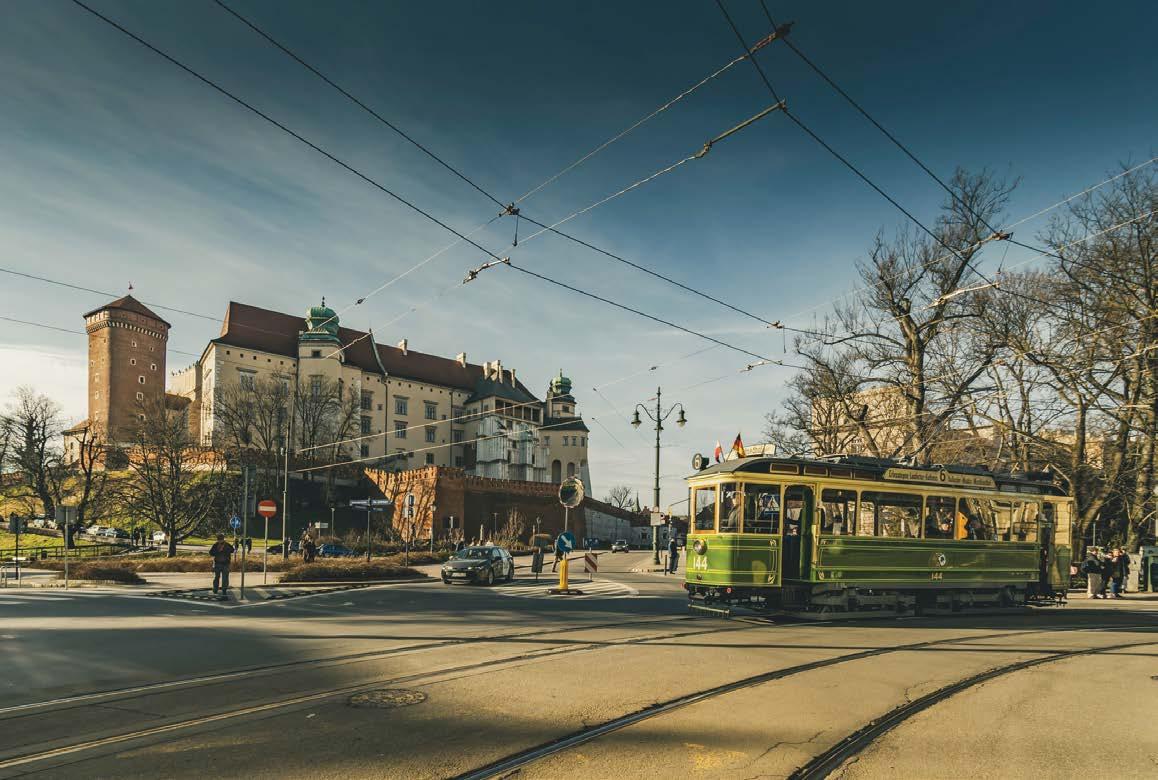
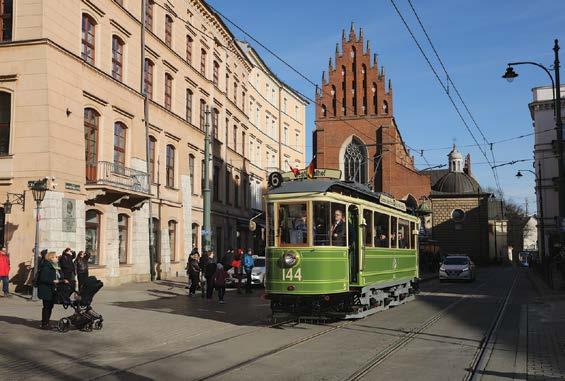

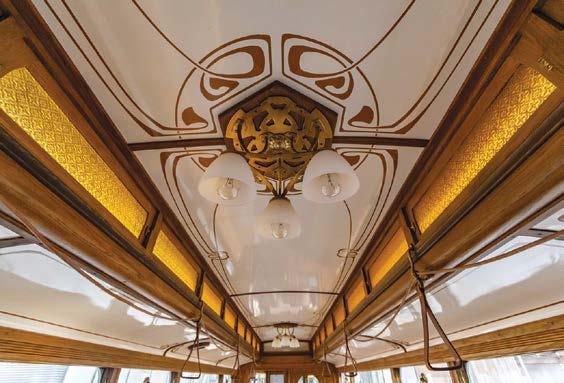
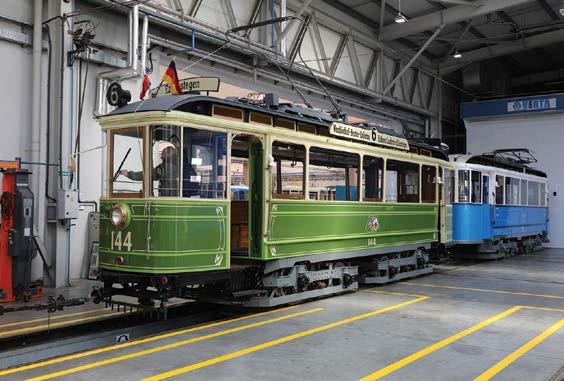

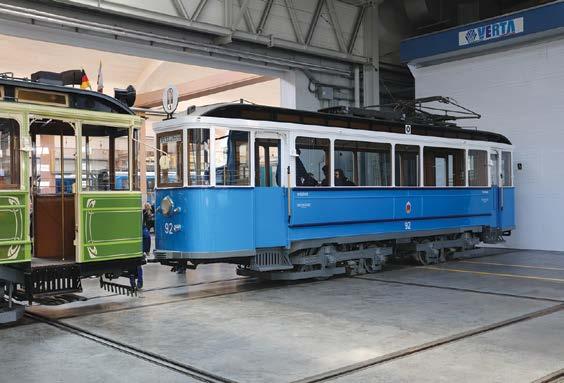
1. Within Podgorze works the two cars were propelled by this works truck, here seen connected by towbar to 144.
2. A brief halt took place during the ceremonial tour of the city’s Old Town to enable images to be taken of 144 against the background of one of Kraków’s most famous sights, Wawel castle. MPK Kraków
3. Passing through plac Dominikański during its ceremonial parade around the Old Town after the official unveiling ceremony is the newly-constituted Nürnberg Zeppelin car 144.
4. The two Zeppelin cars lined up in Kraków’s Podgorze works immediately after they were formally presented to invited guests during the official unveiling ceremony.
5. On parade amongst the extensive depot tracks at Podgorze, and in the company of members of the current Kraków fleet, Zeppelin 92 is proudly on display for the first time. MPK Kraków
6. Uniformed representatives of their tramways pose for photographs against the cars of their respective undertakings: Kraków to the left and Nürnberg to the right. MPK Kraków
7. An example of the intricate craftsmanship that has gone into the authentic recreation of the bodies of the Zeppelin cars is this roof-mounted lamp assembly in 92. MPK Kraków
8. The newly-constructed form of Kraków 92 will represent a proud and historic addition to the city’s fleet of heritage tramcars.
All images taken on 14 February 2024 by Mike Russell except where otherwise indicated.
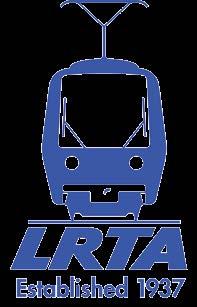

Last month, Tracy Brabin, West Yorkshire’s Mayor, announced the Mass Transit plan for the region. There will be two initial lines: one serving Leeds from the centre to the White Rose Shopping Centre, and the other connecting Leeds to Bradford. These now go forward to the Department for Transport for further evaluation.
Leeds has been there before... during the Blair years, Deputy Prime Minister John Prescott promised at least 20 schemes including Leeds, Liverpool, Southampton, Manchester and Bristol. Lots of preparatory work was done only for the schemes to be scrapped, with the exception of Manchester expansion. However, Manchester only won its funding following a massive campaign involving the ten local authorities, trade unions and the business community.
This time round, only Leeds has been guaranteed funding on the back of the cancellation of HS2. However, there are a whole series of towns and cities throughout the UK with ambitions for light rail. We have featured some of those schemes in these pages over the last few months.
None have secured funding; even Coventry, which has pioneered Ultra Light Rail, is still awaiting further funding to continue. Once again the UK’s lack of investment in critical green infrastructure will do nothing to improve productivity and growth. We believe this needs to change.
Since its inception, the LRTA has been the voice and advocate for light rail, and we are planning to lead the campaign to support those towns and cities. The General Election provides us with an opportunity to influence what happens by persuading parliamentary candidates to sign up and support light rail. To be successful, we need the support of readers of TAUT and like-minded individuals. If you think you can help please go to the ‘Make a Difference’ page on our website and sign up. We will provide information and materials to take part.
Let’s ensure Leeds is the start and not just a one off.
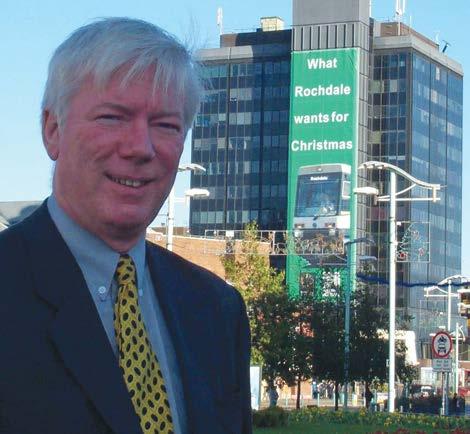
Saturday 11. Taunton 14.00.
Saturday 4-Sunday 5. Blackpool, 10.00-17.00. Blackpool model tramway exhibition visit. Solaris Centre, Harrowside, New South Promenade, Blackpool, FY4 1RW. Contact: alo@tlrs.info. Entrance TBA. (North Lancs TLRS stand)
Tuesday 7. Southampton, 19.30. Roger Manley: Digitised ciné of the Belgian Vicinal, Lisbon in 1972 plus more. Eastleigh Railway Institute, GBP3. (LRTA/SEG)
Robert Manders: Early times with the Tyne and Wear Metro. West Monkton Village Hall, TA2 8NE. Contact: westofengland@tlrs.info. GBP2. (TLRS)
Monday 13. Leeds 7.30, Tim Kendell: Tram-train initiatives. Middleton Railway, Leeds, LS10 2JG. Contact: enquiries@lths.co.uk. GBP1 (including refreshments). (LRTA/LTHS).
Thursday 16. Lowestoft 14.00 Visit to East Anglia Transport Museum –Carlton Colville. Chapel Road, NR33 8BL. GBP12 Adults/GBP10 OAPs. Contact: eastanglia@lrta.org. (LRTA)
TAUT is not the only journal that the LRTA publishes in conjunction with Mainspring. Our quarterly journal Tramway Review is our historical journal that looks back at the rich tramway heritage not just in the UK, but worldwide.
Edited by Martin Dibbs, the next issue is published at the start of May and includes articles on tramway records for Liverpool, a trip made 75 years ago in Tyneside and Wear, a wartime day trip to Cardiff, a former French electric tram network in HauteViennes (Limoges), a wartime massacre at Oradour-sur-Glane as well as a personal view of London’s final night – along with much more.
Why not subscribe? A standalone year’s subscription costs just GBP21 in the UK for four issues. If you are interested head to our website.
We are also planning to put Tramway Review on sale in selected W H Smith stores because we believe it deserves a wider audience. Look out for it at a store near you!
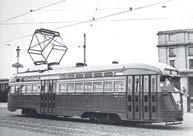
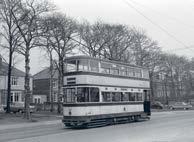
Monday 20. Merseyside 19.30 for 19.45. AGM and models night. Sefton Park Community Association, Liverpool L17 3AG. Contact: merseyside@tlrs.info. (TLRS)
Tuesday 21. London 19.00.
David Connor: Chicago area museums. The Model Railway Club, London, N1 9DA. GBP2. (LRTA)
Saturday 25. Nottingham 14.00.
Dave Coxon: Trams home and abroad. Beeston Scout Hut, Beeston, NG9 1GA. Contact: alo@tlrs.info. (TLRS)
Saturday 25. Garstang 14.00. TBA. St. Thomas’ Church Hall, Garstang,
PR3 1PA. Contact: alo@tlrs.info. GBP2 inc. light refreshments. (TLRS)
Tuesday 4. Southampton 19.30, Members’ digital images. Eastleigh Railway Institute, GBP3. (LRTA/SEG)
Thursday 6. Brentford 14.30. Roger Manley: Cine films – the Vicinal, Vestische and Wuppertal. London Museum of Water and Steam, TW8 0EN. Contact: thamesvalley@tlrs. info. GBP5 inc.

Order online from www.lrta.info/shop – or by post from:
LRTA Publications, 38 Wolseley Road, SALE, M33 7AU
(Please provide telephone contact details and quote LRTA membership number if applicable)
Outside UK = Airmail to Europe (includes all of Russia) / Surface mail to rest of world; Airmail Zone 1 = outside Europe excluding Australia, New Zealand & USA; Airmail Zones 2/3 = Australia, New Zealand & USA
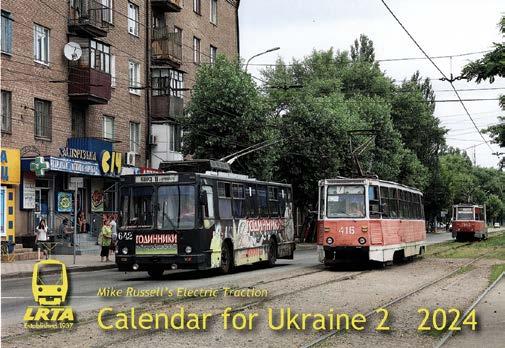
Following the success of our first calendar aimed at raising funds for the people of Ukraine, the 2024 Mike Russell Electric Traction calendar includes a further selection of full-colour images of trams and trolleybuses at work in seventeen Ukrainian cities, together with a location map and list of world systems.
£15.00 (UK addresses); £18.50 (outside UK)
No member discount on calendars
Minimum of £5 from each sale will go to the Disasters Emergency Committee Appeal – if you’re able to donate more your help will be appreciated.
Buy any one, two or three books at these crazy prices
Tramways of Metropolitan Middlesex and North London (was £28.50)
Tramways & Stadtbahnen in Hannover (was £32.50)
Nottingham’s Growing Tramway (was £16.50)
Innsbruck’s Alpine Tramways (was £17.50)
PCCs of Western Europe 1950 – 2010: The tram that Belgium made (was £14.50)
ONE book for £7.50 – TWO books for £12.50 – THREE books for £17.50
Prices including postage & packing:
UK addresses - £9.50 (one book); £16.00 (two books); £20.00 (three books)
Outside UK - £11.50 (one book); £20.00 (two books); £27.50 (three books)
Air Mail not available on these offers. No LRTA member discount.


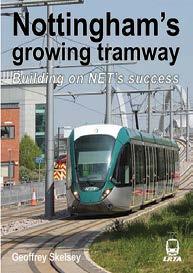
For further details of all these books go to our website.
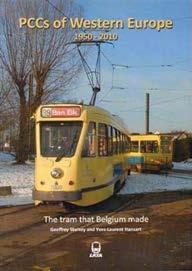

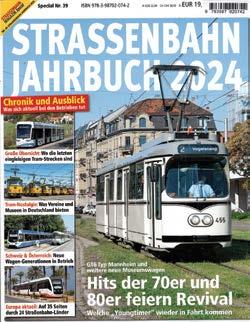
Strassenbahn Jahrbuch 2024
Strassenbahn Magazin Special No. 39
The annual review of tram systems in all European countries with brief reviews from the rest of the world, plus a feature on single-track tramways in Germany. German text.
> A4 softback; 116 pages, 300+ colour pictures. £16.90 – www.amazon.co.uk

A superb collection of atmospheric images from the early 1960s including many views of trolleybuses in the final stages of their career in the capital, most in full-page format.
> B5 softback, landscape format; 80 pages, 85 black & white pictures. £12.50 - www.ttpublishing.co.uk
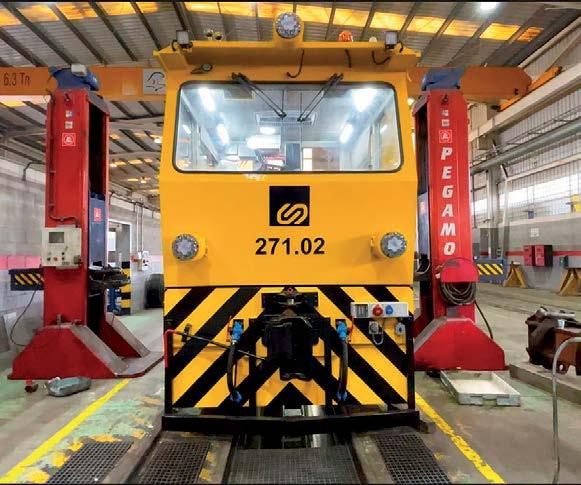
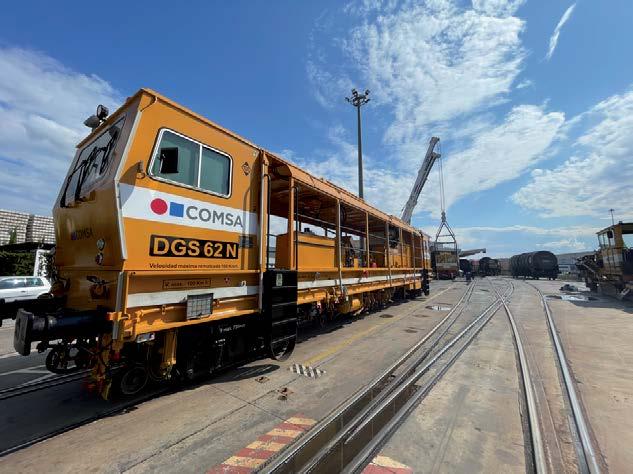
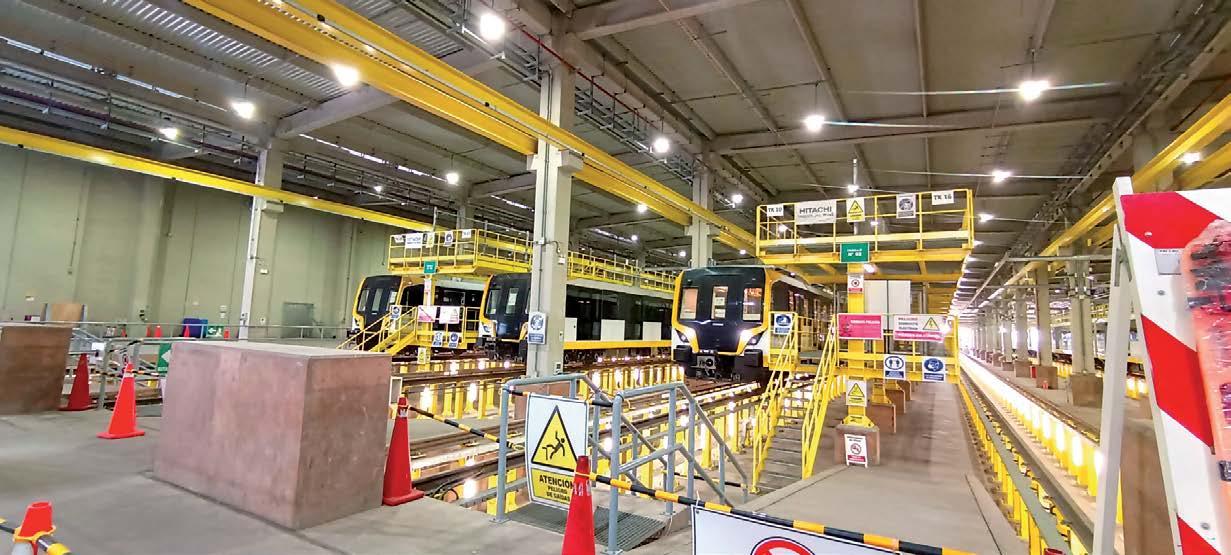
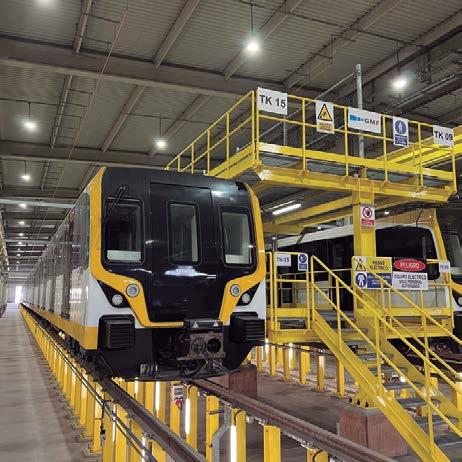
 solutions for rolling stock maintenance
solutions for rolling stock maintenance